Martijn Gilbert Keeping up the momentum of the customer experience
EXCLUSIVELY FOR RAIL INDUSTRY LEADERS
Hugh O’Neill
Decarbonisation of rail freight traction – what needs to be done to accelerate change

Darren Caplan
Let’s get rid of the vacuum of ‘uncertainty’ in rail
Maria Grazia Zedda
Working for change in the railways

MARY GRANT
Delivering industry-leading innovations
December 2022




















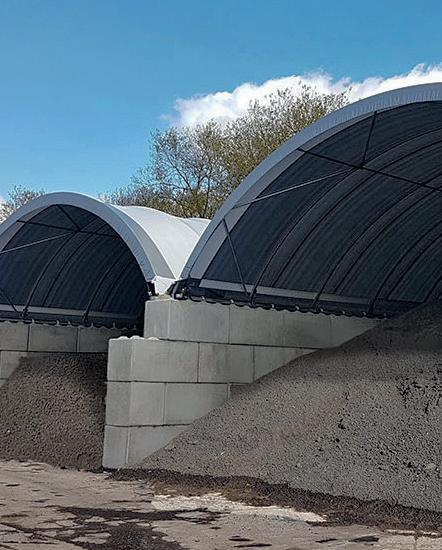































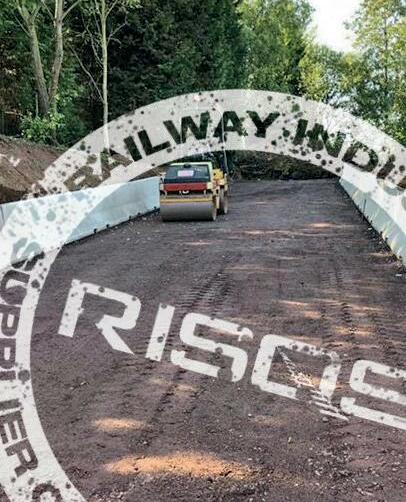



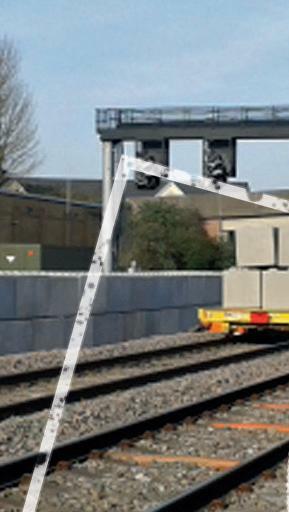
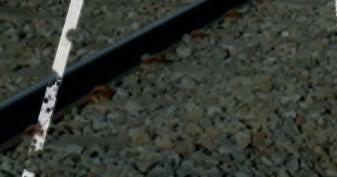



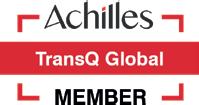

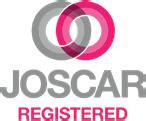









For more information phone 01952 588 885 or browse www.eliteprecast.co.uk or email sales@eliteprecast.co.uk Everywhere on rail networks Elite products are seen in use British made Suppliers to 2012 London Olympics, 2014 Glasgow Commonwealth Games and approved suppliers to Tideway, Crossrail and HS2 (fully compliant transport) Get on track with Elite interlocking blocks and barriers BS EN 1917 & BS 5911-3 BS 5911-6 Workforce protection barriers avoiding all line closures with adjacent line open Rockfall prevention with our multi-purpose Jersey barriers Hoarding stabilisation utilising Elite Duo interlocking blocks Large ballast bays with walls constructed from our Legato interlocking blocks Large scale embankment retention using the versatile Legato blocks Workforce safety refuges built from Elite Duo blocks
Beating the winter blues
Avery warm welcome to the latest edition of Rail Director. Warm is probably not the best word to use with winter definitely upon us and the windscreen needing to be defrosted both pre and post-work. I have it easy though and my admiration for those working outside to ensure passengers and freight continue moving definitely goes up a notch.
I say passengers and freight in equal measure as I have had many a conversation with those working in rail freight who feel, for too long, they have been seen as the poor relation to the passenger side of the railways. The pandemic, when fewer passenger trains were running, really highlighted the potential of rail freight, and with the likes of Tesco turning more to rail to move its goods, there is an incredibly exciting future for rail freight if the opportunities are grasped.
I thought it had been a busy month writing November’s Rail Director stories, but the same can certainly be said about the last four weeks. The strikes continue, with sadly little sign of a resolution, the UK Government has set out what it wants to achieve in the operations, maintenance and renewal of the railways in England and Wales during CP7, and the future of Great British Railways is in the air. We’ve also had confirmation that major rail projects would go ahead, including HS2 between Birmingham and Manchester, the “core” Northern Powerhouse Rail and also East West Rail. That is just scratching the surface.
I can’t help but agree with the Railway Industry Association’s chief executive Darren Caplan in his quarterly column in Rail Director calling for clarity of the work pipeline and working together to be the New Year’s resolution of both new ministers and rail suppliers.

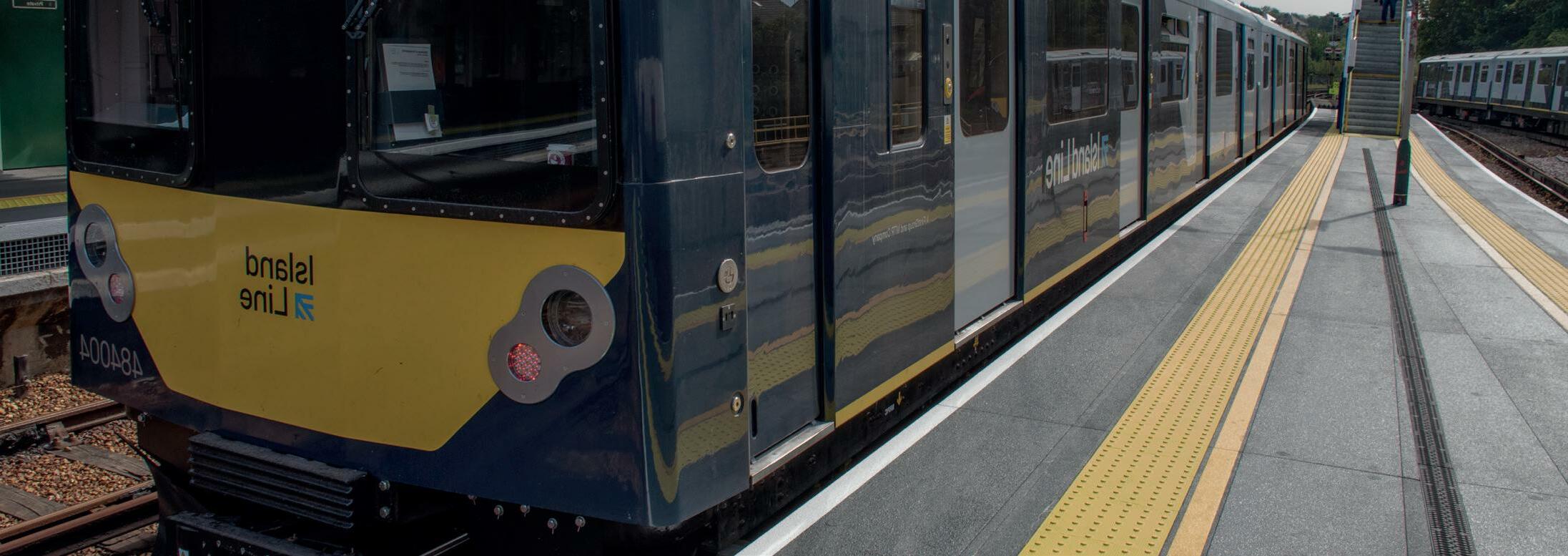
Although there is a lot to be potentially excited about, clarity and collaboration to provide real certainty and transparency should be the New Year’s Resolution overall for the industry in 2023.
Turning attention to the latest edition of Rail Director and I am delighted to feature Porterbrook’s Mary Grant as the cover story. It was a real joy to speak to her to discuss her career from a farmer’s daughter to the chief executive officer of one of the country’s leading railway rolling stock leasing companies. What was really refreshing to hear about was her belief that collaboration is the only way to succeed and that you must ensure you bring the whole team on the journey with you.
Also featuring in December’s magazine is an interesting article from Frazer-Nash Consultancy’s senior consultant Hugh O’Neill, who writes about future pathways to decarbonise rail freight, Hull Trains’ and Lumo’s managing director Martijn Gilbert, and HS2’s Maria Grazia Zedda, who has been recognised by the Shaw Trust for her work supporting people with disabilities.
I hope this edition of Rail Director brings some seasonal cheer and that you, your colleagues and your families have a wonderful Christmas and a very happy, successful and prosperous New Year. Thanks for all your support in 2022 and please do contact me or the rest of the team for more information on all aspects of our brand.
Kind regards

 Danny Longhorn Editor
Danny Longhorn Editor
Rail Director magazine is part of the Business Daily Group of companies, which includes the hugely popular railbusinessdaily.com.
industry professionals who now subscribe to our 7am daily newsletter. Please subscribe and encourage your
www.railbusinessdaily.com. This is the very best way to keep abreast of what is happening on Britain’s railways.
Struggling with platform re-gauging & tight possessions? d2 Dura Platform cuts install time by up to 65%.
Heavy-duty, 2-man lift GRP Dura Platform panels can be walked on-site to ensure work is completed within engineering hours. Over 20,000 metres already installed across the network, meeting Network Rail load and fire criteria and 60+ year design life. Unique surface is BS 7976 tested to 1m footfalls with amazing 95% anti-slip retention. +44 (0)1255 440291 info@duracomposites.com www.duracomposites.com
We deliver more than 70 stories a week to +70,000 rail
colleagues and team members to do the same. It’s free and it’s easy:
There is a digital copy of Rail Director on our website.
When you have finished reading this issue of Rail Director, please pass it to colleagues to enjoy or put it in your reception area.
My admiration for those working outside to ensure passengers and freight continue moving definitely goes up a notch
railbusinessdaily.com Introduction Rail Director | December 2022 | 3
Delivering industry-leading innovations 5 Mary Grant shares her story from farmer’s daughter to the chief executive officer of Porterbrook and her exciting plans to drive both the company and the rail industry forward
News 10
Keeping up the momentum 12 of the customer experience

There are three open access train operators running along the UK’s East Coast Main Lineand Martijn Gilbert is managing director of two of them. He discusses his new role at Hull Trains and Lumo
New era of transformed train travel in Wales 18 Transport for Wales is investing £800 million in new trains for the Wales and Borders network. Rob Hale, head of rolling stock strategy and programmes, explains more

The Autumn Statement: recommitments 20 to East-West Rail, HS2 and NPR
The Chancellor of the Exchequer said we need economic growth if we want to avoid a doom loop of ever-higher taxes and ever-lower dynamism. We look at what that means for the railways and the reaction from the industry
Developing your people from within 22 Amy Blick is an experienced HR specialist and the founder of ExhilHRate. She is internationally renowned for her work with global brands and SMEs. In her second of three columns for Rail Director, Amy looks at how you bring your people closer to the heartbeat of your business
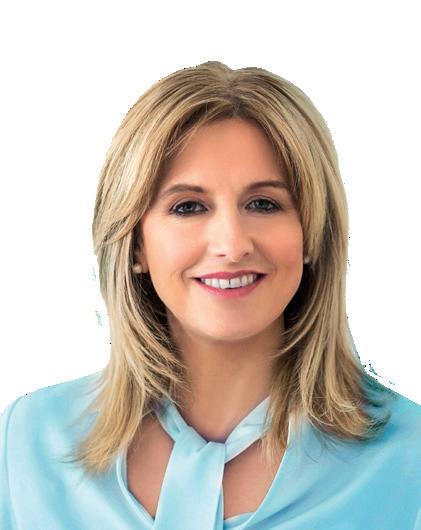
Nearly 70 million journeys in 24 six months on the Elizabeth line Andy Lord, London’s transport commissioner, says he is proud the line has not only become part and parcel of travelling in London and the South East, but is also showing how sustainable and affordable transport can drive economic growth and recovery
Thousands tune in to watch 26 Rail Wellbeing Live
John Halsall, chair of the Rail Wellbeing Alliance, says he is proud of how the event has evolved
EDI Charter welcomes 200th signatory 28
The Great British Railways Transition Team has become the latest organisation to sign up to play a role in promoting positive change in the rail industry
Working for change in the railways 32
Maria Grazia Zedda, HS2’s EDI manager, has been recognised by the Shaw Trust for her work supporting people with disabilities. She shares her story
Four-day charity mission to support Ukraine 34 Aaron Rail’s Dave Barnett on collecting and delivering items to refugees and frontline personnel in Ukraine
Top of the stops: London Waterloo 38 regains title of UK’s busiest station

The Office of Rail and Road has revealed the most used railway stations, finding overall numbers are down on pre-pandemic levels
Decarbonisation of rail freight traction 42 – what needs to be done to accelerate change

Hugh O’Neill, senior consultant at Frazer-Nash Consultancy, writes about future pathways to decarbonise rail freight
‘One of the most important, creative and 52 urgently needed projects in European rail today’ Team outlines Global Centre of Rail Excellence vision to private investors
New Year’s Resolution: let’s embrace 56 transparency and ditch the vacuum of uncertainty in rail Railway Industry Association’s Darren Caplan says clarity of the work pipeline and working together should be the New Year’s resolution of both new ministers and rail suppliers
Stronger together by joining forces 60 Eli Rees-King, head of the RBD Community, looks at the highlights of the recent weeks and how members are joining forces to be stronger together
International News 62
Movers and Shakers 66
New agreements on sharing safety 70 information among heritage railways
The biggest and best-attended Heritage Railway Association conference has led to new agreements on sharing safety information and the discussion of ways to meet the enormous financial challenges the sector faces
Coming back with bronze from Bilbao 72 Rail Forum’s Bob Hodgson has won a bronze medal at the European Multisport Championships. Next year he will compete in the World Championships in Ibiza
Sick of Constant Daggerboard Maintenance?
Dura Dagger Boards have a
approved Class
d0 fire rating with
no-maintenance woodgrain surface.
Daggerboards
weight and price
GRP
Supplied
metre sections
faster and cheaper install.
laser survey
designs
week lead time. +44 (0)1255 440291 info@duracomposites.com www.duracomposites.com Woodgrain Surface Tel: 0800 046 7320 Sales: 020 7062 6599 Editor Danny Longhorn danny@railbusinessdaily.com Designer/Production Manager Chris Cassidy Production Editor James Jackaman Director of Marketing Phil Loades Advertising Team Christian Wiles – chris@rbdpublications.com Amy Hudson – amy@rbdpublications.com Published by RBD Media 15 Mariner Court, Calder Park, Wakefield WF4 3FL © 2022 All rights reserved. Reproduction of the contents of this magazine in any manner whatsoever is prohibited without prior consent from the publisher. For subscription enquiries and to make sure you get your copy of RailDirector please ring 0800 046 7320 or email subscriptions@rbdpublications.com The views expressed in the articles reflect the author’s opinions and do not necessarily reflect the views of the publisher and editor. The published material, adverts, editorials and all other content is published in good faith. MARY GRANT EXCLUSIVELY FOR RAIL INDUSTRY LEADERS Martijn Gilbert Keeping up the momentum of the customer experience Hugh O’Neill Decarbonisation of rail freight traction – what needs to be change Darren Caplan Let’s get rid of the vacuum of ‘uncertainty’ in rail Maria Grazia Zedda Working for change in the railways Delivering industry-leading innovations
d2
NWR
B-s1
a
Dura
are half the
of
alternatives.
in 2.1 x 1.2
for
Our CNC and 3D
expertise enables exact replicas of beautiful heritage
with turnkey 2
railbusinessdaily.com 4 | Rail Director | December 2022 Contents
Delivering industry-leading innovations

Herding
sheep in the hills of the Scottish borders and milking cows at 3am in the morning might feel like a world away from the hustle and bustle of the UK railway, but it was an experience that provided Mary Grant with the ideal platform for driving the rail industry forward today.
The chief executive officer of Porterbrook is now a self-confessed train anorak but growing up all she had to get around was her push bike and the local bus service.
“It was never an aspiration to work in the railways when I was younger, but now I absolutely love trains, what they do, the service they provide and the support they give communities,” she said.
“Whether it was harvest or lambing, we relied on the support from the farming community at different times of the year. The UK railway is the same. Co-ordination is vital and if one part isn’t working then other areas of the system won’t function either. I’ve grown up with a sharing mentality and I have a firm view that collaboration is the only way to succeed.”
Road to success
It is an ethos and philosophy which has served Mary well, particularly in her current role at railway asset owner and manager Porterbrook, which owns almost a quarter of the national passenger rail fleet and currently has around 4,000 vehicles on lease or on order.


Need NWR Approved Driver Hop Ups Fast? Safe, non-conductive GRP Driver Hop Ups designed to Network Rail load specifications from our unique d2 product range. Hop-Ups pre-assembled at our ISO 9001 and ISO14001 Fabrication Centre for rapid on-site installs. +44 (0)1255 440291 info@duracomposites.com www.duracomposites.com
Grant
railbusinessdaily.com Rail Director | December 2022 | 5 People
Mary
shares her story from farmer’s daughter to the chief executive officer of Porterbrook and her exciting plans to drive both the company and the rail industry forward
The route to chief executive officer hasn’t been straightforward and, in fact, Mary started her career in motorway service areas as a trainee wiping tables at Welcome Break’s South Mimms services. She advanced to the organisation’s marketing manager before being headhunted by National Express in 1997.
“My time at Welcome Break taught me the importance of looking after your people because it enhances both your business and adds value to the overall service which is being provided to customers,” she said. “Starting off as a graduate trainee I scrubbed floors for months on end and served on the tills. It wasn’t quite what I expected but it didn’t do me any harm either insofar as how not to treat your future leaders.”
Changing track
Mary swapped the highway for the Permanent Way when she left her role as marketing manager at Welcome Break to become marketing director at North London Railways, responsible for the rebranding of Silverlink County and Metro.

“There were transferable skills with the emphasis in both industries on logistics and people. I saw the move as a great opportunity to go out and explore,” she said. “Although in a marketing environment, I didn’t really consider the broader elements of the railway such as engineering dynamics, safety implications and operations. I was very much focussed on how to build revenue, drive yields, grow value and understand some of the black arts of the passenger demand handbooks.
communities. It was the interest in the mechanics and complexities that got me into writing bids at the preliminary stages of the franchising process in the early 2000s. Threading all these elements together with the financial models on sevenyear horizons really submerged me into the acquisition space as well as the commercial and financial deliverables.”
Among Mary’s greatest rail achievements was her time at FirstGroup, where she was managing director of the rail division. Prior to that, she was part of the rail refranchising team, leading the bid for the ScotRail franchise before becoming managing director of the company. Under her leadership, the business achieved growth of more than 20 per cent in passenger numbers and record levels of customer satisfaction.
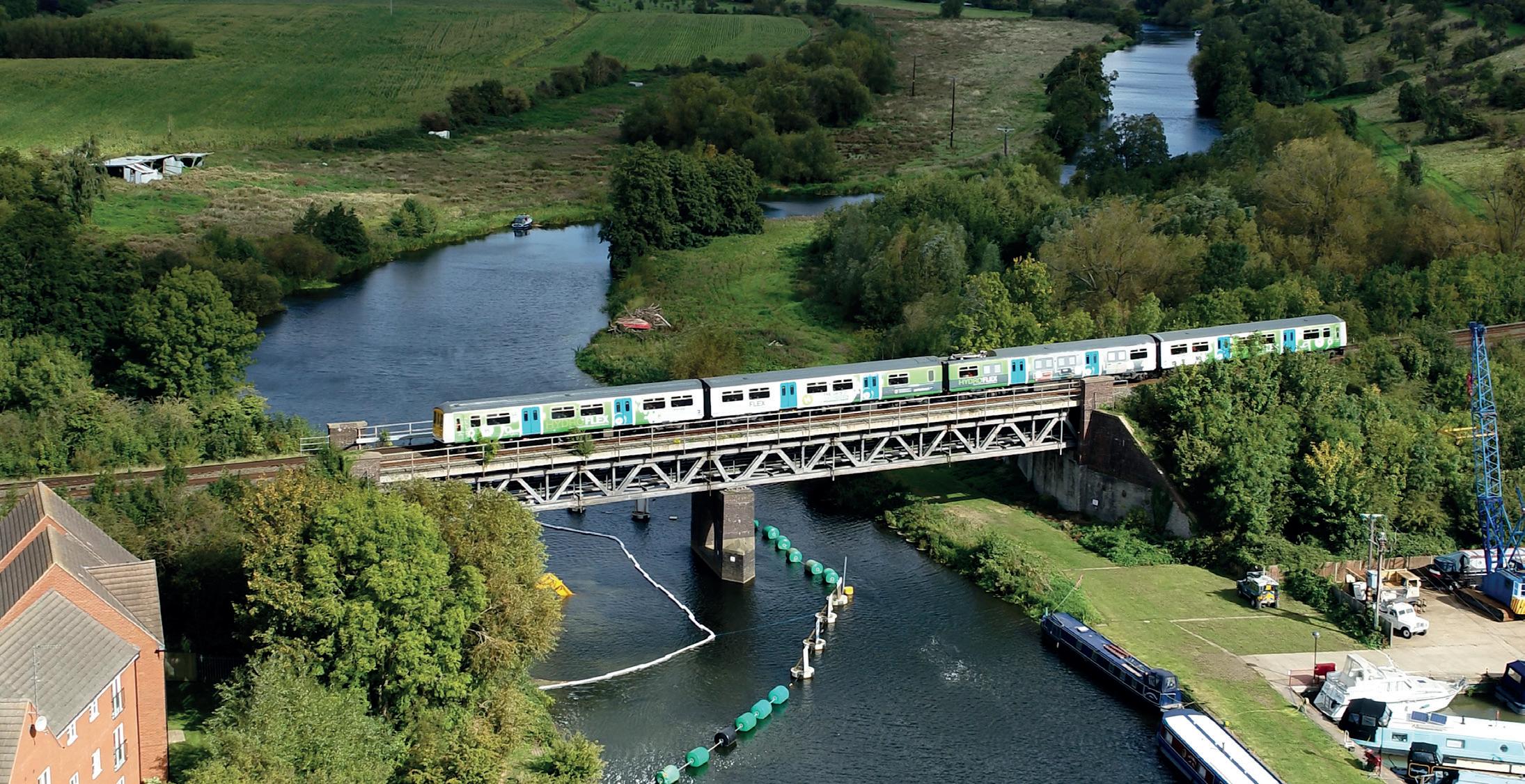
“It was a great entry into the railways and from there, I was asked to do some work in Australia with National Express. The experiences started off my fascination with how train services support the wider economy by connecting
My time at Welcome Break taught me the importance of looking after your people because it enhances both your business and adds value to the overall service
Mary with HydroFLEX project engineer Spencer Jones at Long Marston
HydroFLEX travelling over river Avon
Image: Network Rail
6 | Rail Director | December 2022 railbusinessdaily.com People
Image: Jack Boskett
“My time at ScotRail was a big ask as I had gone from writing the bid and having had a very limited railway career in terms of just having come from a marketing background, to getting the phone call asking if I could go and run this national train operating company,” she said. “It was a baptism of fire, but it was one of the best experiences of my entire career and one which really highlighted how vital it is that, if you change a business, you make sure you bring your people with you on that journey. It was already an established workforce and one I found to be very proud of delivering great customer service alongside safe railway operations.
Lesson learning
Mary continued: “That business taught me a lot of lessons about leadership and driving organisational change. ScotRail and my previous experience gave me the tools I rely on today, particularly around the importance of bringing people with me and setting out a clear plan for the future.”
Mary briefly left the rail industry when she was chief executive officer at Phones4u, a job she said she enjoyed. She was pulled back to the railways a few years later when she was
appointed managing director of business development at National Express, business change director at Eurostar, and now chief executive officer (CEO) at Porterbrook.
“Porterbrook is a great business with fantastic people. Over the last five years we’ve changed the dial of where we are in terms of our value and support to the wider industry and what that means for the individual teams,” said Mary, who joined as CEO in 2017.
workforce deficit of between 5,000 and 15,000 people per annum between 2024 and 2027.
Mary is unapologetic that the railway is an attractive career destination with a dynamic future, pointing to Porterbrook’s recruitment in areas such as digital and data analytics as well as software and systems engineering.
Rolling stock
“Our purpose is about owning rolling stock; it is not just about financing the trains that we put out and lease into the rail industry. It’s also about the support our field engineers give on a dayto-day basis, it’s about the various projects that we are creating to support decarbonisation and, last but by no means least, it’s about our people and their wellbeing and that whole sense of purpose within the wider rail industry.”
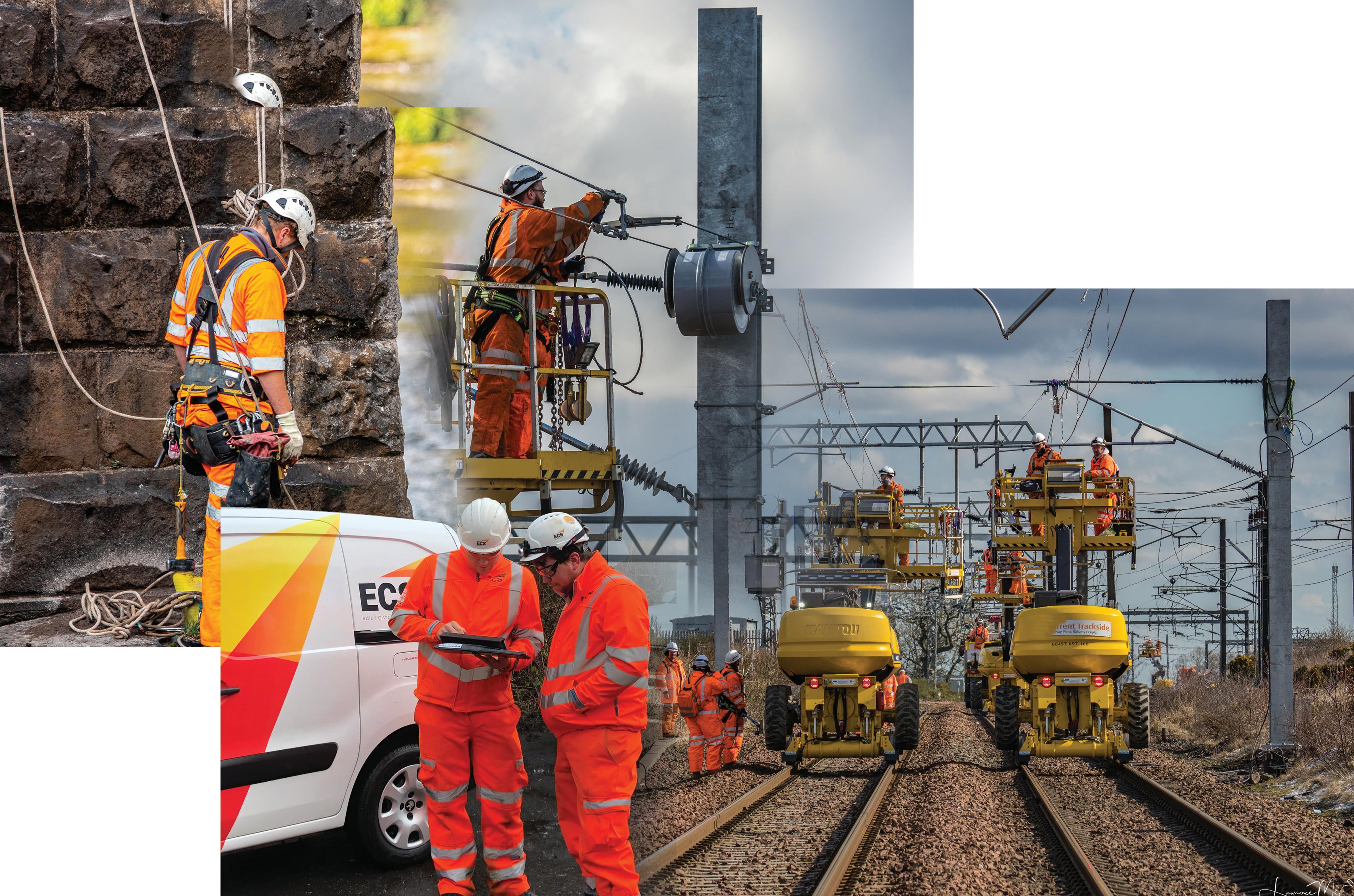
That passion is reflected in her longstanding role as a board member of the National Skills Academy for Rail (NSAR). She alluded to research from the skills body which shows a
Porterbrook has strong community links across its business sites in Derby, London and Stratford upon Avon. The company’s volunteering policy encourages staff members to take two days a year to undertake charitable work of their choice. Each year the business invests over £100 million in its existing assets, working with over 100 UK-based companies and supporting around 7,000 jobs.
railbusinessdaily.com Rail Director | December 2022 | 7 People
My time at ScotRail was a big ask as I had gone from writing the bid and having had a very limited railway career in terms of just having come from a marketing background
Of the company’s nearly 170 employees, 30 per cent are women (including many of its senior team) which compares favourably to the UK rail industry average of 16 per cent.
To date, the business has invested £3 billion in new passenger and freight vehicles and is actively looking to invest a further £1 billion in UK rail in the coming years. Leading the way in its efforts to drive the industry forward and find new ways to power trains in the UK are its HybridFLEX and HydroFLEX projects.

“About 30 per cent of our 4,000 trains are diesels. These are very much needed because only 38 per cent of the network is electrified at present. The long-term challenge of decarbonisation is closely aligned to our whole-life cost approach to asset management. We are adding value to our existing trains in what we should be procuring for the industry going forward in terms of the type of energy source and how that supports customers, government and ultimately farepaying passengers and the taxpayer.”
Hybrid conversions
Earlier this year the HybridFLEX train, a partnership with Rolls-Royce, Chiltern Railways and contributions from 30 UK companies, entered service between Aylesbury and London. The project involved converting a diesel train into one that now runs on both diesel and battery power (the first 100mph capable battery-diesel hybrid train to operate emissionfree on the UK rail network). The train has been retrofitted with a Rolls-Royce powerpack, which means quieter and quicker journeys, with 25 per cent less fuel consumption, 75 per cent less nitrous oxide and a reduction in annual CO2 emissions of 122 tonnes.
“Our Class 168 HybridFLEX has already completed 10,000 miles of testing,” said Mary,
who says the company has invested £8 million in the project to date. “It’s a fantastic opportunity to take what is a very good train to provide a service that meets the challenges of Marylebone and the environmental impact. It upcycles an existing train and supports the supply chain in terms of contracting valuable long-term work.”
HydroFLEX is the UK’s first hydrogenready passenger train that can operate under electric, battery and hydrogen power, making it the world’s first ‘tri-mode’ train. A fully productionised version of this innovative
train was showcased in Glasgow in November 2021 during COP26. Thirty-five UK companies contributed to delivering the train over its 10-month build period. It has been tested in full hydrogen mode at the Long Marston Rail Innovation Centre this year and is due on the mainline for further testing in December.

Finding alternatives
“There is a realisation that to meet our net zero decarbonisation targets the rail industry is going to have to find alternatives to just core electrification, although I do believe electrification is still the most economically viable option on key routes,” she said. “I see our hydrogen solution as a pathfinder and although there’s not a hydrogen economy established today, that will come to fruition over the coming years. Clearly, there has to be a framework and plan to deliver this.
“Within the UK we are the first to achieve full safety approvals including tunnels and all the other challenges that hydrogen brings, so it is exciting to be leading the way with this.”
In 2019 Porterbrook embarked on creating HydroFLEX, taking a single small gauge hydrogen solution that was originally created through the University of Birmingham. This led to the creation of a large-scale single cell hydrogen train which was tested on the mainline.
“The train has already been on the mainline at 50mph with a single cell,” said Mary.
“To get up to that 100mph multiple cell capacity and for a greater range, we’ve continued with the trials. The extensive testing and component shakedown is allowing us to understand the performance dynamics before it enters passenger service.
“We’ve built HydroFLEX with four fuel cell capacity at 125 kilowatts each. It has a range of 350 miles on pure hydrogen with battery capability which, of course, supports discontinuous electrification.
It’s a fantastic opportunity to take what is a very good train to provide a service that meets the challenges of Marylebone and the environmental impact
A hydrogen-fuel system has been installed on the 30-year-old train
Image: Devlin Photo
HybridFLEX at Long Marston Rail Innovation Centre
8 | Rail Director | December 2022 railbusinessdaily.com People
Image: Jack Boskett
“We’ve spent around £12 million on the project and our purpose is strategic in terms of our thinking for the next 30 years and beyond that, looking at what the industry will need to support core electrification to give a blended solution on battery, hydrogen and other bi-modes to support the reduction of carbon emissions.

“These are just two examples of alternatives in powering trains. Solar energy is very much being explored at the moment through Network Rail and also, when assessing diesel, we must look to the aviation industry which is developing synthetic fuels. So, I think we need to consider multiple options to support core electrification, battery, hydrogen, synthetic and hydrocarbons. Another important aspect is looking at how we get a truly integrated transport network, thinking a bit broader than a macro strategy of just looking at rail as the one solution.”
Realising ambitions
In June 2021 the company took over the Long Marston Rail Innovation Centre in Warwickshire and has invested more than £3 million to modernise and enhance the facilities at the site, which includes a test track loop, rolling stock storage and a training centre. Mary highlighted that a further £3 million has been allocated to complete a state-of-the-art asset management facility, due for completion by spring 2023.
“Long Marston is another example of our ambitions as a company to play a wider role within UK rail. We are not just a financier; we never have been. Engineering excellence and support is a very important part of the brand offering. We’ve had strong backing from our shareholders in doing that, who recognise the additional value inherent to asset ownership and the need for whole-life utilisation both from a finance and environmental perspective.
“For example, I don’t think it is widely known across the industry that under the terms of our
financing model we don’t make a return for the first 20 years. The risk of re-leasing assets for their full economic life sits with us.”
part of the infrastructure operator’s East Coast Digital Programme, which it estimates could lead to significant reductions in delays through improved punctuality and increased infrastructure reliability.
It is also working with Network Rail on a Visual Inspection Unit project with five Class 153s. Each of these vehicles reduces the need for boots on ballast by 4000 hours a year while hugely increasing the number of switch and crossing points that can be inspected. Plans are in place to roll this technology across more Cl153s next year. Elsewhere a recent Data into Action Reliability Taskforce (DART) project on Turbostar fleets with six customers used data analytics to conduct around 1,000 targeted vehicle health checks. The trial prevented 150 full or part train cancellations, saved nearly 10,000 engine delay minutes and reduced Schedule 8 delay payments by over 70 per cent from £1.3 million to £0.4 million. Discussions are ongoing on how the programme can be further expanded.
Dynamic future
Reflecting on her early years she said: “Farmers aren’t very good at giving themselves compliments. I think the farmer in me would say ‘you’ve done a fair day’s work but keep going.’ At Porterbrook we have got a strong growth trajectory of how we want to continue to invest back into the network. We will continue to make substantial investment and also build on our asset management support.
Sustainability has been a core focus during Mary’s five-year tenure at the business and the ESG agenda has only grown in importance. For example, the Global Real Estate Sustainability Benchmark (GRESB) assesses and measures the ESG performance of assets worldwide to provide insights for financial markets on complex sustainability topics. This year Porterbrook came first in its peer group in the benchmark. The company achieved a score of 100 per cent and was first out of 649 global funds. Mary cites this as an endorsement of the company’s work to support the railway’s journey towards net zero.
She adds: “In doing so we need to be responsible for our own research and development, improving technology, improving diagnostics and reliability. At the end of the day, we own the stock so we’re not just going to lease it out and then expect it to remain on the network for its full asset life.”
This is just a snapshot of the work underway at Porterbrook. For instance, the company has managed the first-in-class European Train Control System (ETCS) project on its Class 43 vehicles for Network Rail. The initiative is a key
“The biggest change in every business I’ve run in the railways has been the people dynamic and that culture of realigning the purpose to support the industry. Understanding what the government is looking for, how we fit within policy, what works for the train operating companies and how we then demonstrate valuable partnerships.
“Like those days on the farm, the biggest thing for me on success in any business is all about collaboration. The company has to be a committed partner bringing genuine value add to all stakeholders, particularly as the railway continues to grapple with economic challenges.
“The engineering asset management element of our business is incredibly important. Taking over the Long Marston site was quite an unusual move for a traditional rolling stock owner to do but from my perspective it’s exactly the kind of industry investment we should be taking.
“Porterbrook has been a longstanding part of UK rail for over 25 years. The industry has an exciting and dynamic future ahead in areas such as the green transition and embracing the potential of digital technology and we look forward to supporting this in the coming decades.”
In doing so we need to be responsible for our own research and development, improving technology, improving diagnostics and reliability
Mary and King Charles III and Martin Frobisher, Network Rail, at Cop26
railbusinessdaily.com Rail Director | December 2022 | 9 People
Image: Devlin Photo
News in brief
South Yorkshire’s tram system on track for £8.6m upgrade
An £8.6 million funding package for South Yorkshire’s Supertram system has been given the green light by local leaders, to pay for urgent renewal work on the tracks and trams. A further £4.3 million has been approved to make the case to government for significant additional investment in Supertram, as parts of the system come to the end of their working life. Earlier on this year, South Yorkshire’s leaders voted to take Supertram back into public ownership when its current contract with Stagecoach ends in 2024.
New £152m line between Portishead and Bristol gets final approval
A £152 million line between Portishead and Bristol has been given final approval by the transport secretary. The plans, supported by the West of England Combined Authority (WECA), will bring back the disused rail line, and include the building of a new station at Portishead, which has been cut off from the network since the line was closed to passengers in 1964.
Northern Rail pilots UK’s first dementia-friendly station Northern Rail has launched a pilot scheme, working with Friends of Buxton Station and local dementia support groups, to help make rail travel simpler for passengers with dementia. The scheme involved the installation of signage at Buxton station, which is designed to be more accessible for dementia sufferers. Fewer signs are displayed to prevent ‘information overload’, and they are located at important decision points, to try and ease any confusion that may be experienced in a busy station situation. Symbols are also widely used, to ensure the signs are as clear and understandable as possible.
Cleaner, greener, self-charging trains to revolutionise rail travel
Self-charging
trains could make their way onto Britain’s railways, transforming the future of transport after receiving government funding.
Top innovators and inventors have won prize money to bring their innovations to life, as part of the First of a Kind (FOAK) 2022 competition. This year’s competition, in partnership with Innovate UK, focused on new concepts that will transform rail travel for passengers and decarbonise the network.

FOAK 2022 saw 24 innovators receive a share of more than £5 million with grants of up to £400,000 each. From technology making our railways greener than ever before by removing harmful emissions from train exhausts to research into powering our railways with renewable energy, this year’s successful bidders will revolutionise the future of train travel for generations to come.
This year’s winners include Varamis which, working closely with DHL and Fedex, is revolutionising parcel delivery in the UK by repurposing former passenger carriages and putting rail right at the heart of the online shopping boom to create high-speed, nonletter delivery services. Echion Technologies, another successful bidder, is developing batteries that will charge from overhead wires
and use that charge to ‘leapfrog’ across unelectrified sections of track and, effectively, create self-charging trains – truly, ‘the first of a kind’. Other winning projects include:
Automatic systems that detect and stop track flooding Cutting edge electric drivetrains that replace polluting diesel engines
New tech to instantly relay track information to improve and modernise rail safety
Mike Biddle, executive director for Net Zero at Innovate UK, said: “The innovations funded through this competition will help to deliver a greener, lower-emissions railway carrying increasingly higher proportions of the UK’s freight.
“Delivered by Innovate UK on behalf of the Department for Transport through the Small Business Research Initiative, it seeks the best and brightest ideas.
“Companies from all over the UK have demonstrated the quality of their innovations in previous rounds of this scheme. Now we will support even more innovations to help deliver a greener railway that benefits passengers, employees and customers for rail freight.”
The First of a Kind competition has already helped launch over 100 projects that are having a transformative effect across the entire industry. Previous winners have included Riding Sunbeams, which powers railways with sunlight, and 4Silence’s soundbending walls which cancel out noise pollution from the railway.
Network Rail race to future-proof fleet with 5G technology from McLaren
McLaren Applied has been successful in its bid to provide the 5G onboard connectivity solution for Network Rail infrastructure monitoring trains.
The contract will see the company’s patented F1-derived Fleet Connect software installed on
its first-of-its-kind Active Antenna hardware, supported by a five-year service contract.
Originally developed for the pinnacle of motorsport, Formula 1, McLaren Applied’s patented Fleet Connect software is already deployed on transport fleets around the world to facilitate seamless high-
speed passenger WiFi connections and operator uplinks.
Fleet Connect splits data across networks in real-time and reassembles it in the cloud en route to its destination, reducing blackspots and providing a consistent connectivity stream for any moving vehicle in any environment.
10 | Rail Director | December 2022 railbusinessdaily.com News
Clare Brecknell, Dip CII, Client Director at Jobson James Rail
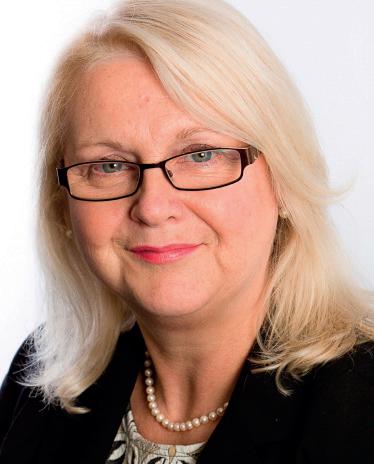
Further buildings insurance update
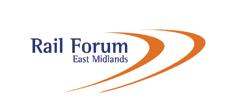

My Co-Director John McNeill gave advice about insurance for buildings in the May issue of Rail Director magazine.



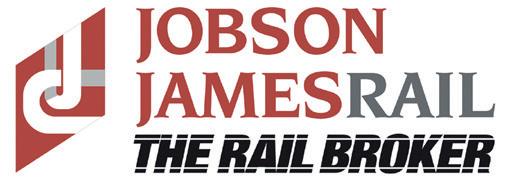
The inflation in the construction industry has worsened in the last six months so this is worthy of further advice.
Buildings insurance is subject to average, which means that the sum insured for rebuilding the building as new must be adequate or insurers will reduce the claims payment in proportion to the amount of underinsurance.
In the last 18 months, we have seen increases in construction costs, and insurers’ typical inflation index linking, recommended that year-on-year
increase is currently running at 15-16 per cent.

It is essential for all building owners to increase their sums insured annually to keep pace with inflation.

If you have a buildings
insurance claim, then the loss adjusters appointed by insurers will initially focus on the adequacy of the buildings sum insured.
If it is found to be inadequate against today’s rebuild costs, then you may only be paid a proportion of the cost of the repairs because insurers will apply the Average clause, which will reduce their payout.
Stone building rebuild costs are particularly high and the rebuild cost can now be double or more compared to the market value of the property, whether it is residential or commercial.
We have a relationship with a national firm of chartered surveyors who can provide

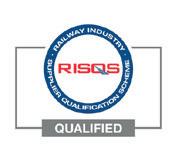


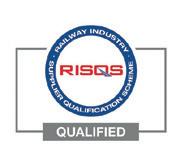
a desk-based report on a residential building from just £99+Vat.
The cost of a report on commercial buildings is slightly more. Alternatively, there are websites like https://calculator.bcis.co.uk/ which can give up to five free rebuild sum insured valuations for residential property.
If you own your own house, or if you own buy-to-let property or commercial buildings, then our advice is to act now and get a fresh rebuild valuation before you have a significant claim on your buildings insurance.
Underinsurance concerns and the average clause?
We are a Rail Specialist Insurance Broker (RISQS Link up approved) Offices in Birmingham, London and around the country. Jobson James Rail is a trading name of Aston Lark Limited. Authorised and regulated by the Financial Conduct Authority. www.jjrail.co.uk WE INSURE •RRV and Plant Companies •P-Way, S&T, S&C, SMTH, OLE and Civils contractors •Rolling Stock Turnkey Modifications companies •Manufacturers, Wholesalers and Installers of rail products •ROSCOs and TOCs supply chain •Rail Consultants, Surveyors and Engineering Companies WHY US? •Specialist Rail Knowledge •NEBOSH/Safety approach producing lower premiums •Contractual Liability checking •Better Technical advice •Specialist rail safety consultancy site audits funded by insurers Contact Keven Parker on 07816 283949 / 0121 4528717 / 0207 9839039 Email: keven.parker@jjrail.co.uk Rail Signalling Contractor £14m Turnover •Key exclusions identified with current liability and works insurances which we negotiated out. •Site survey, Management Interviews and Gap Analysis conducted •Risk Report presented to the insurance market •Fit for purpose cover secured with significant saving from that of previous premium. •Receiving recommendations from this happy client. £14M TURNOVER PUBLIC LIABILITY WORKS AND PLANT DIRECTOR’S LIABILITY MOTOR FLEET £44,000 SAVING ON INSURANCE PREMIUM SITE VISIT CONDUCTED 52% SAVING 30-PAGE RISK REPORT TO INSURERS JobsonJames_Advert_01.12.2015_B_Amended.indd 2 15/12/2015 10:33 Offices in London and Birmingham. Nationwide coverage. Jobson James Rail is a trading name of Aston Lark Limited. Authorised and regulated by the Financial Conduct Authority. www.jjrail.co.uk
Clare Brecknell, Dip CII, Client Director, Jobson James Rail. Contact Clare on 07794 019669.
railbusinessdaily.com Rail Director | December 2022 | 11 Feature Insurance Advertorial
Clare Brecknell, Dip CII
Keeping up the momentum of the customer experience
I
t was two words that enticed Martijn Gilbert away from the buses and to his current role in the railways, ‘open’ and ‘access’. After nearly two decades working on the buses, latterly as managing director of The Go-Ahead Group’s Go North East and East Yorkshire regional bus operations, in September he joined FirstGroup to lead its Lumo and Hull Trains operations.
“Time flies at a rapid rate of knots, almost as fast as a high-speed train travelling down the East Coast Main Line, but it is really good and to join Hull Trains and Lumo as managing director is probably a once in a career golden opportunity,” said Martijn, who started his career as a trainee schedule compiler for London Underground 22 years ago.
Open access
Martijn continued: “Open access is what attracted me to this role. I first came about the concept of open access operations when working for Arriva just over 10 years ago at a time when we bought Grand Central and I saw the power of what open access can do in terms of its ability to innovate commercially and potentially in all sorts of other aspects as well.
“Given where the railways are at the moment, I don’t think there’s been a more important time for open access to pick up the mantle of commercial and customer innovation and show how things can be taken to the next level.”
Martijn’s arrival at FirstGroup saw the managing director roles at both the train operators combined for the first time, replacing David Gibson at Hull Trains and Phil Cameron who was covering the role on an interim basis at Lumo. It is the latest step in a successful career for Martijn, a board member of the Chartered Institute of Logistics and Transport (CILT) with previous roles at Arriva in both its bus and rail divisions, and as chief executive officer of Reading Buses, and latterly at Go North East and East Yorkshire.
“My career has been quite multi-modal in the past, having spent some earlier time in rail
and I spent quite a lot of time in the bus sector as well, and I think there are lots of synergies, particularly when you look at the commercial focus of things,” he said.
“We have to stand on our own two feet commercially and we live and die by our commercial decisions. We don’t have any of
the protection that you get in a traditional rail franchise and when you identify a market opportunity and a strong business case it is a very exciting thing to be able to deliver. If that isn’t enough, I’m looking after two train operators that have had substantial investment in brand new fleets of trains, so that is a huge commitment from our owner FirstGroup that just amplifies the power of the opportunity.
Local appeal
He said: “I also have two great operations. Hull Trains is very local, has a great local appeal, huge buy-in from our stakeholders and very long-standing colleagues; in the business, we still have a very high proportion of the team that were actually here when it started 22 years ago. At the other extreme, we’ve got Lumo, which is a brand-new start-up business founded on some very exciting new principles and serving a very different market in terms of longer distance travel to major cities up and down the East Coast Main Line.”
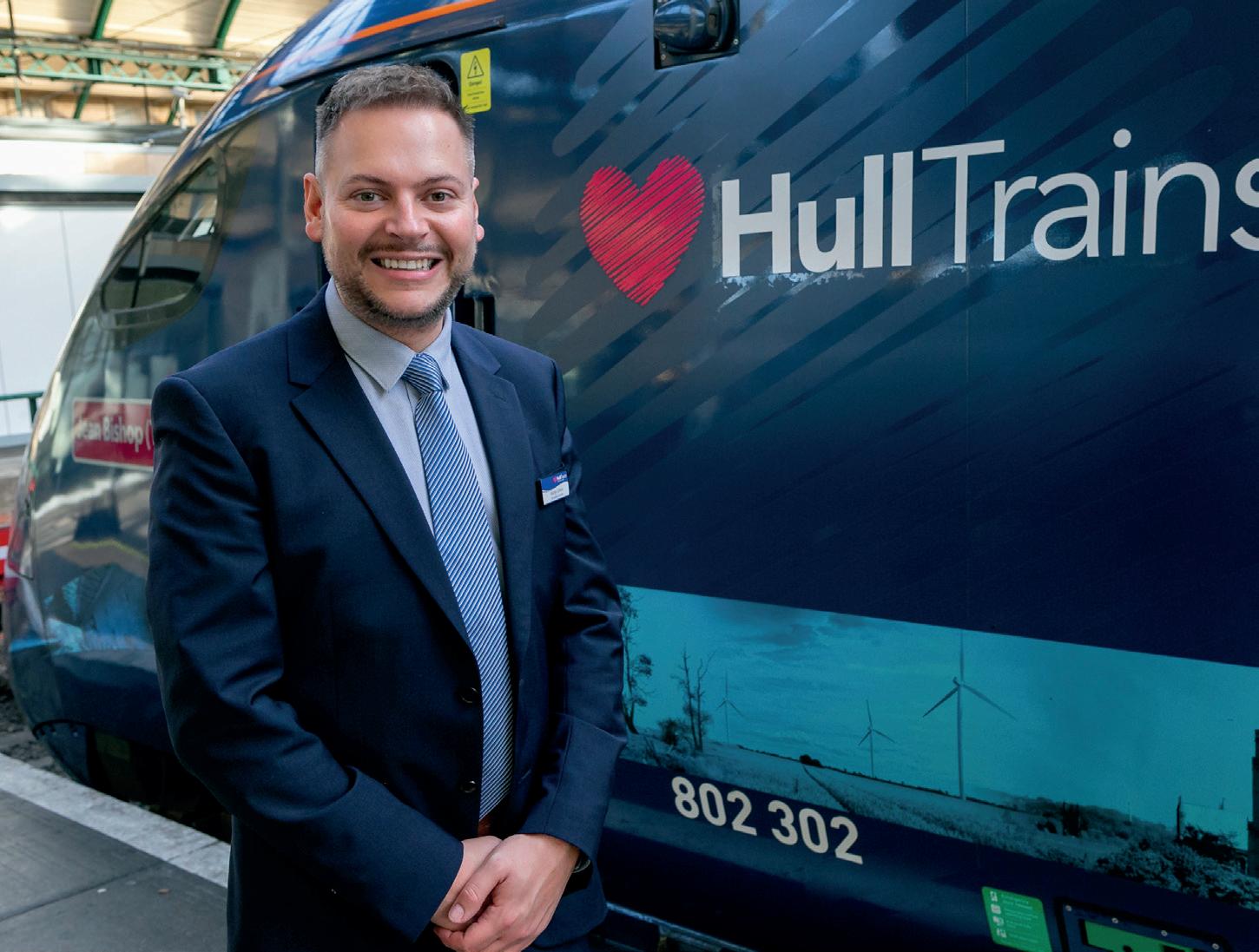 Image: Hull Trains
Image: Hull Trains
Given where the railways are at the moment, I don’t think there’s been a more important time for open access to pick up the mantle of commercial and customer innovation
There are three open access train operators running along the UK’s East Coast Main Line and Martijn Gilbert is managing director of two of them. He discusses his new role at Hull Trains and Lumo
12 | Rail Director | December 2022 railbusinessdaily.com People
Martijn Gilbert stands next to The Bee Lady at Hull Trains
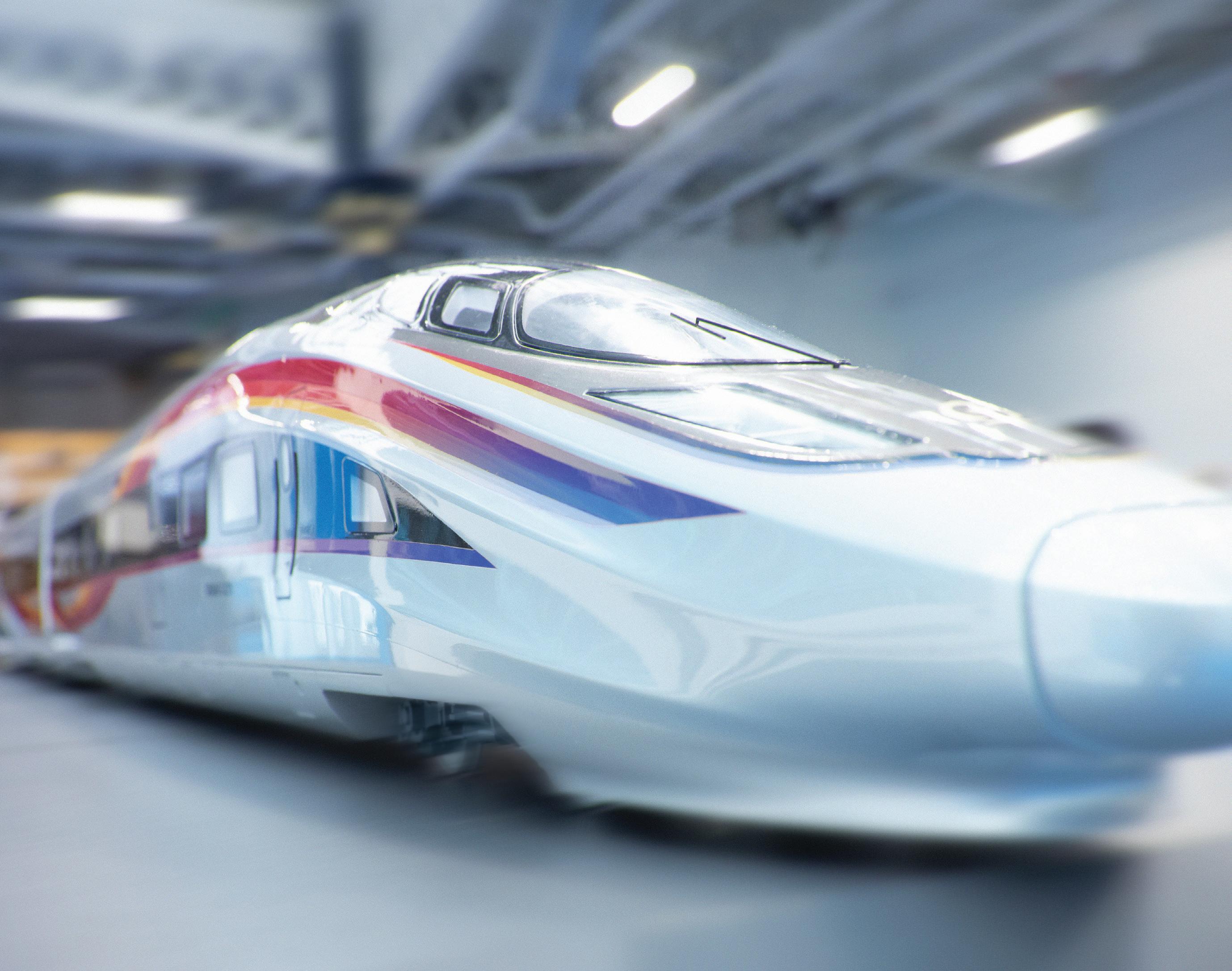
Join Railtex, the leading one-stop-shop event for the entire rail industry in the UK. Discover the latest technology in person and experience products and services from more than 180 different categories Connect with industry experts and make impactful business relationships Gain valuable insider knowledge and find out about the current trends and topics THE PLACE TO BE IN 2023! Featuring: Conference Programme On-Track Display Area Recruitment Wall www.railtex.co.uk MORE INFORMATION: Organiser: All about the rail industry: Railway Civil Engineering - Rolling Stock - Track Design, Supply & Construction - Track & Infrastructure Maintenance - Safety & Security Systems - Electrical Products & Equipment - and much more! 9 – 11 MAY 2023 NEC, BIRMINGHAM
Martijn spoke with Rail Director as the newer of the train operators, Lumo, celebrated two major milestones, alongside its first birthday. FirstGroup’s 100 per cent electric rail operator has attracted a million passengers and also seen rail overtake air travel to become the preferred mode of transport between Edinburgh and London, having run more than 2,500 services, the equivalent of around 4,125 full flights each carrying 180 people.
“The increase in rail’s share of passengers between London and Edinburgh demonstrates the value Lumo has brought to the East Coast Main line,” said Martijn. “Not only have we attracted passengers to greener transport, we have noticed that other operators have also increased their market share too. Together we have convinced the public that the convenience, price and reduced environmental impact of rail is well worth it.”

Exciting times
Lumo was launched in October 2021 with its sights set on converting domestic air travellers to rail, with FirstGroup investing more than £115 million into the organisation. The company estimates that in the first year of operation it could have saved the equivalent CO2 emissions of 21,000 homes’ electricity use by virtue of its passengers choosing its 100 per cent electric trains rather than flying.

“These are exciting times for both businesses, but Lumo is exciting in a completely different way to Hull Trains because it has reinvented some of the many things we do, not only behind the scenes, but also onboard for customers as well and I think that is a good strong fit with the dynamism of the destinations that we serve as well,” said Martijn.
“The first year’s success sets the bar of what is to come and we need to make sure we continue to deliver the best possible service there. So much of the Lumo proposition is
about green credentials, but also it is about ensuring we can deliver the best value to our customers and that is something we are absolutely firmly committed to, going forward.
“We need to continue to maintain that dogged focus on delivering the best possible value fares for our customers because that is the key success factor, particularly when you benchmark us against the cost of domestic flying. We need to continue to make sure we’re offering a great value proposition on a good volume basis because the two are interdependent; it is only by attracting the volumes that we can deliver the value, but the value is the hook to get the volume.
Great innovations
“The team has done a fantastic job in the first year of operation and I hope to build on their energy and enthusiasm, while at the same time hammering home the environmental credentials of what we do. I also hope to look at what we can do in terms of further innovations on board, building on the free streaming service, LumoEats, class-leading seats, and overall, a good travelling and working environment.
“There are already some great innovations, but we need to continue to build upon that evolution, because Lumo has set out to be a trailblazer and we can’t just deploy a product, have our 12-year track access contract and say ‘great, that is it, it is innovative’ and just sit there; we’ve got to keep up that momentum in terms of the customer experience.”
The increase in rail’s share of passengers between London and Edinburgh demonstrates the value Lumo has brought to the East Coast
Low-cost train company Lumo now available on the East Coast Main Line
14 | Rail Director | December 2022 railbusinessdaily.com People
Image: Hull Trains
Maintenance provider of choice
We’ve been keeping rail moving for the last 150 years.
Our maintenance and asset management capabilities are second to none, taking care of every aspect of your maintenance requirements from service, parts management and overhaul through to innovative engineering solutions and life-cycle cost reduction.

Whether for passenger rolling stock or freight vehicles our skilled experienced operators combined with our envious range of nationwide services will ensure you stay on track.

The future is also looking bright for Hull Trains. Celebrating its 22nd birthday, the company welcomed its new £60 million Paragon fleet to the tracks just before the pandemic lockdowns. They are able to operate on both diesel and electric traction, replacing its older Class 180s diesels, and providing considerable environmental upside as they are able to operate over 75% of their journey in electric mode. Martijn spoke with the magazine as the third of the five trains received its name plate. The trains have been named following public votes on people or things of significance to the area.
Local legend
In the latest case, the train has been named after Jean Bishop, known locally as The Bee Lady. A local fundraising legend, Jean spent 30 years fundraising in her hometown, raising more than £125,000 for Age UK Hull dressed as a bumblebee.

“I’m immensely proud of the fact we’ve got two organisations with a brand-new fleet of trains, that is a huge commitment in terms of FirstGroup and open access rail, but it is also the right thing to do in terms of delivering a reliable modern 21st century service that is meeting the very best green credentials and is attractive for people to use,” he said.
“Events like the name unveiling today help remind the community that we are here, we are back, and we are better than ever. We are part of destination Hull, and we hope to add value to the city by working with partners, which is an important part of our recovery actions here as well.
“Looking to the future of Hull Trains, we need to absolutely maximise the investment in new trains. We need to get the message out there that we’ve got a best-in-class train fleet,

are really reliable, and are the best way to get to and from London, and the destinations in between.
“It is all part of the journey to get back to the great heights of what the organisation was in terms of top league customer service and customer satisfaction stats. It also ensures that we continue the post-lockdown recovery of the business and its revenues and that our team can go forward with confidence about being the very best at what they do.”
Image: Hull Trains
Train named after Jean Bishop (The Bee Lady) in honour of her fundraising
Image: Hitachi Rail
16 | Rail Director | December 2022 railbusinessdaily.com People
Lumo operating on the East Coast Main Line

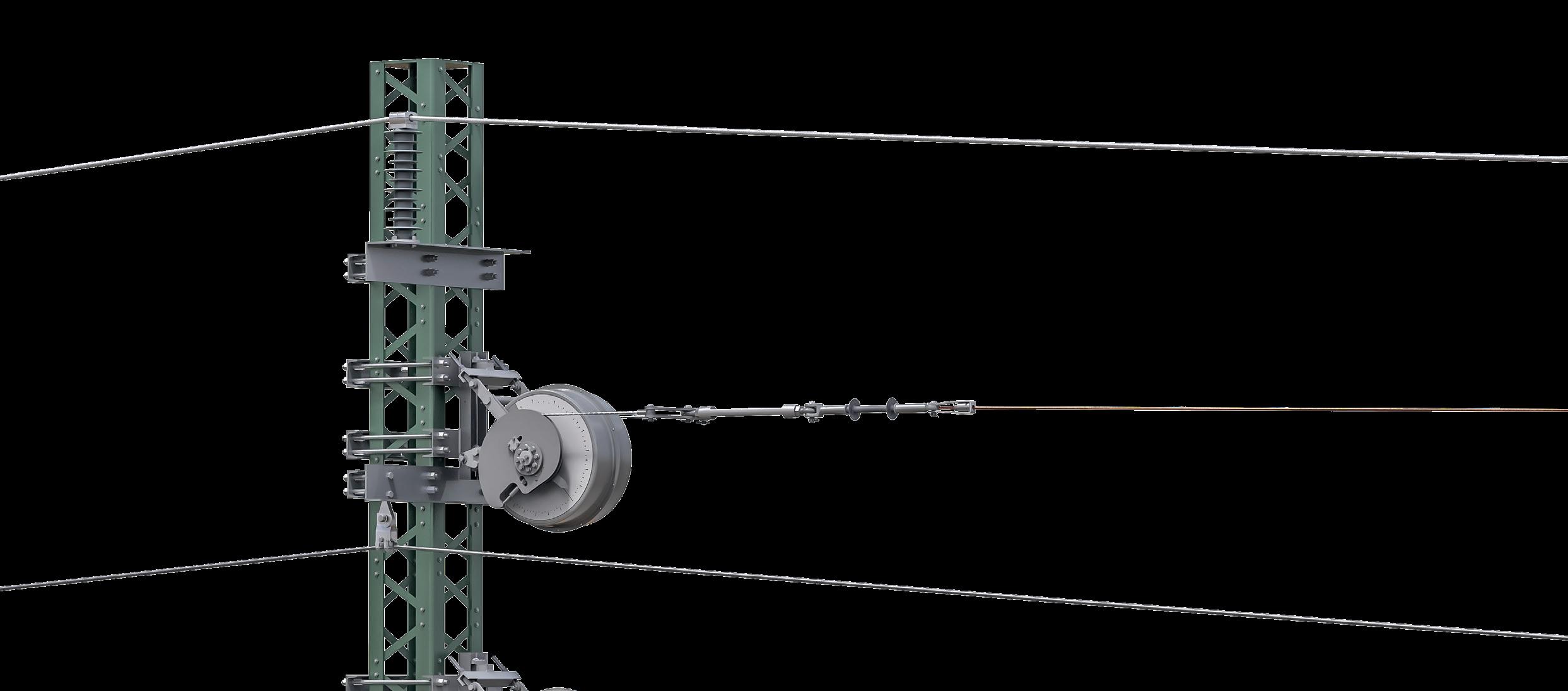

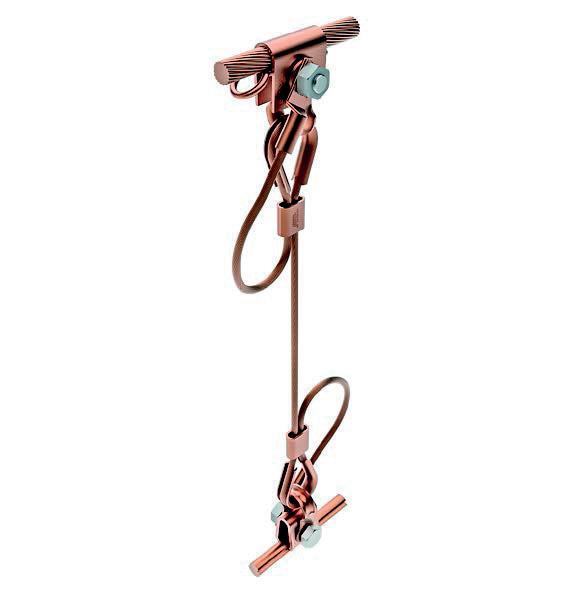

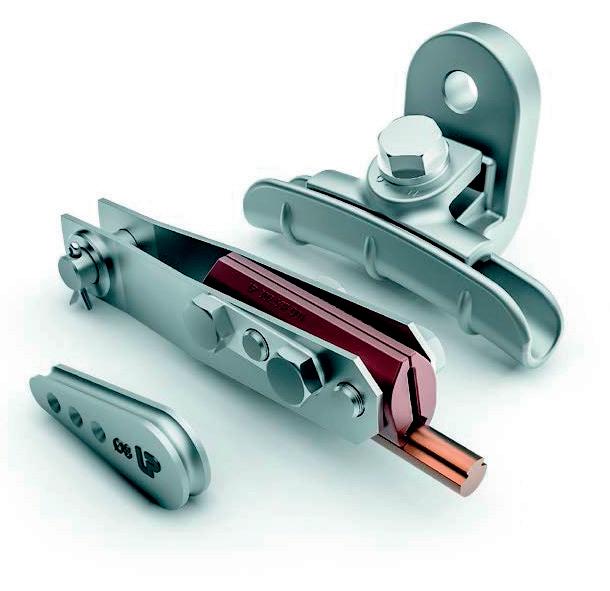
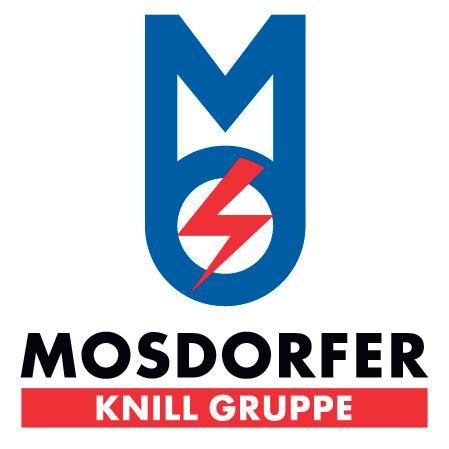



INFRASTRUCTURE SOLUTIONS Our Expertise for Railway and Tramway:
Systems -
-
-
supply - Safety
Rail
– 4
Catenary Clamps Droppers Insulators Safety Equipment FOR TODAY´S AND FUTURE CHALLENGES Bonding Connectors RAILWAY INFRASTRUCTURE SOLUTIONS TENSOREX C+: Spring Automatic Tensoning Device Our Expertise for Railway and Tramway:
Systems -
-
-
-
equipment
Rail
2 – 4 Orgreave
E-Mail:
Catenary Clamps Droppers Insulators Safety Equipment FOR TODAY´S AND FUTURE CHALLENGES Bonding Connectors
RAILWAY
- Railway Catenary
Tensioning
Insulation technology
Power
equipment Mosdorfer
Ltd. 2
Orgreave Place, Orgreave Sheffield S13 9LU, South Yorkshire, UK Phone: +44 114 3878370 E-Mail: OrdersRailUK@mosdorfer.com
- Railway Catenary
Tensioning
Insulation technology
Power supply
Safety
Mosdorfer
Ltd.
Place, Orgreave Sheffield S13 9LU, South Yorkshire, UK Phone: +44 114 3878370
OrdersRailUK@mosdorfer.com
New era of transformed train travel in Wales
Amajor transformation is underway on the Welsh rail network with the arrival of the first of £800 million in new rolling stock.
The 35 FLIRTs (Fast Light Intercity and Regional Train) are continuing to arrive, the 24 tri-mode version Class 756 Units started arriving last month (November) and the first of the 36 CITYLINK vehicles will be delivered to Taff’s Well Depot, which is currently under construction, in January 2024.
“A modern transport network is the fabric that holds society together,” said Rob Hale, head of rolling stock strategy and programmes at Transport for Wales (TfW).
“These new trains will make jobs more accessible for more people, will make it easier for people to see family and friends and provide vital links throughout the country for people to travel for leisure and tourism purposes.”
Leading the upgrade
For the last two and half years, Rob has been leading and directing the project team introducing the new train fleets, and supporting the construction of one new maintenance depot and the upgrade of two existing maintenance depots for TfW’s multi-billion pound rail transformation programme.
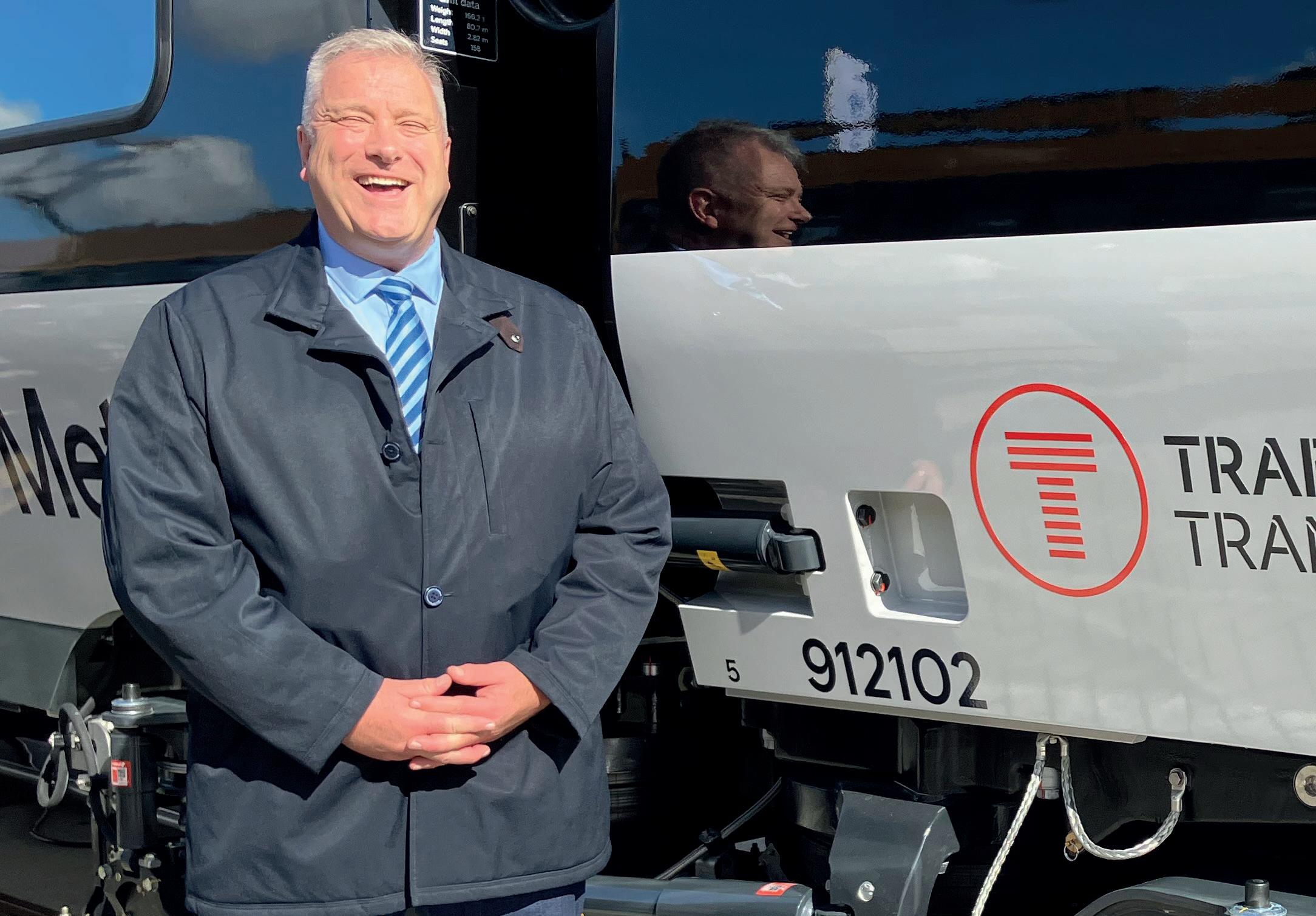
“The aim is to create a high quality, safe, integrated, affordable, accessible transport
network that the people of Wales will be proud of,” he said.
“At TfW we are on a journey of transformation and investment to improve public transport, and through delivering these improvements we want to increase the number of people using public transport and opting to leave their cars at home to support Welsh Government’s agenda to fight climate change.”
A modern transport network
together
All about people people working in public transport...people like you! Financial and medical benefits, a wide range of complementary and alternative therapies, bereavement grants and welfare advice available in times of need, hardship and distress. £1.25 a week covers you, your live-in partner and dependent children. 0300 333 2000 | help@tbf.org.uk | www.tbf.org.uk Transport Benevolent Fund CIO, known as TBF, is a registered charity in England and Wales, 1160901, and Scotland, SC047016. less than 20p a day 18 | Rail Director | December 2022 railbusinessdaily.com Transport for Wales
Rob Hale
is the fabric that holds society
Transport for Wales is investing £800 million in new trains for the Wales and Borders network. Rob Hale, head of rolling stock strategy and programmes, explains more
The 36 Class 398 CITYLINK Units are a tram-train that can operate on both tram and main line networks. It is also equipped with a battery, enabling use on non-electrified sections of the network.
Stadler describes the three-car Class 398s as modular, barrier-free light rail vehicles designed to connect city centres with outlying areas. They will operate on the South Wales Metro, the ambitious project being delivered by TfW.
The first of the FLIRT trains arrived in Wales from Switzerland last November for testing, with the 35 trains being delivered over a two-year period. They aim to add capacity and more frequent services for TfW commuters.
New rolling stock
Twenty-four of the FLIRT Units will be Class 756 tri-modes, capable of running on lines with overhead electric wires as well as with battery power and diesel. The use of batteries on the trimodes will enable a fully electric service north of Cardiff, known as “smart electrification”.
Seven three-car Class 756/0 and 17 four-car Class 756/1s will make up the tri-mode fleet; the remaining 11 Class 231/0 Flirts are diesel-powered. These trains have already been delivered to Wales and are undergoing testing and commissioning.
Rob said: “The new rolling stock is replacing a lot of the old legacy stock in terms of FLIRT, and the CITYLINK is a whole new concept, totally transforming the travel experience for our customers.

“The new rolling stock will offer customers modern, accessible and greener travel and as we introduce them to our network, we will be building an efficient and effective train network that will be resilient and bring many benefits to the people of Wales and Borders.
“Within a few years, 95 per cent of journeys on our network will be on brand new trains which will bring with them economic, social, recreational and environmental benefits.”

“I couldn’t commend Stadler more highly,” added Rob. “We’ve been working very closely with them, particularly in view of the COVID situation.
“We were in the design phase of the project when the pandemic struck, and everybody was instructed to work from home. In spite of this, we worked in a very collaborative way through that design phase to achieve the situation we are in today in which these units are being delivered on time, are of excellent quality and have delivered tremendous performance in all the testing we’ve done to date.”
In addition to the strong environmental credentials of both trains, they will also significantly improve the customer experience with level-boarding, air conditioning, power sockets, wi-fi, up-to-date passenger information screens, bike spaces and accommodation for those with reduced mobility.
Smooth ride
Noise and vibrations will be kept to a minimum, with the new trains being quieter than TfW’s current fleet.
Rob concluded: “The climate emergency is a major challenge for us all and Welsh government is on a mission to decarbonise Wales.
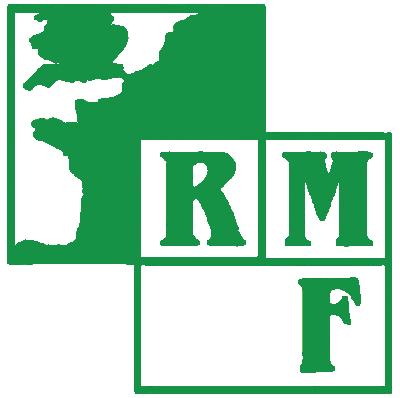
“These new trains will play a vital part in this challenge as we are driving a modal shift away from the private car and towards public transport.
“For us to be successful in changing behaviour and attracting more people to public transport it is essential that the service and alternative to the car is to a high standard.
“The CITYLINK and FLIRT fleets are both high quality with modern features that will provide a true alternative to using the car.”
Stadler has more than 650 CITYLINK and TRAMLINK vehicles in service in eight countries alone, and they are particularly popular in mainland Europe.
Times House, Bravingtons Walk, Regent Quarter, London N1 9AW | +44 (0)20 7042 9961 | david.hiscock@rmf.co.uk www.rmf.co.uk RMF is a leading provider of railway reservation based international settlement and clearing services, providing sophisticated revenue and cost allocation, including business critical management information. The new rolling stock will offer customers modern, accessible and greener travel
the new up-to-date
space
experience railbusinessdaily.com Rail Director | December 2022 | 19 Transport for Wales
Image: Stadler Inside
coach
improving customer
The Autumn Statement: recommitments to East West Rail, HS2 and NPR
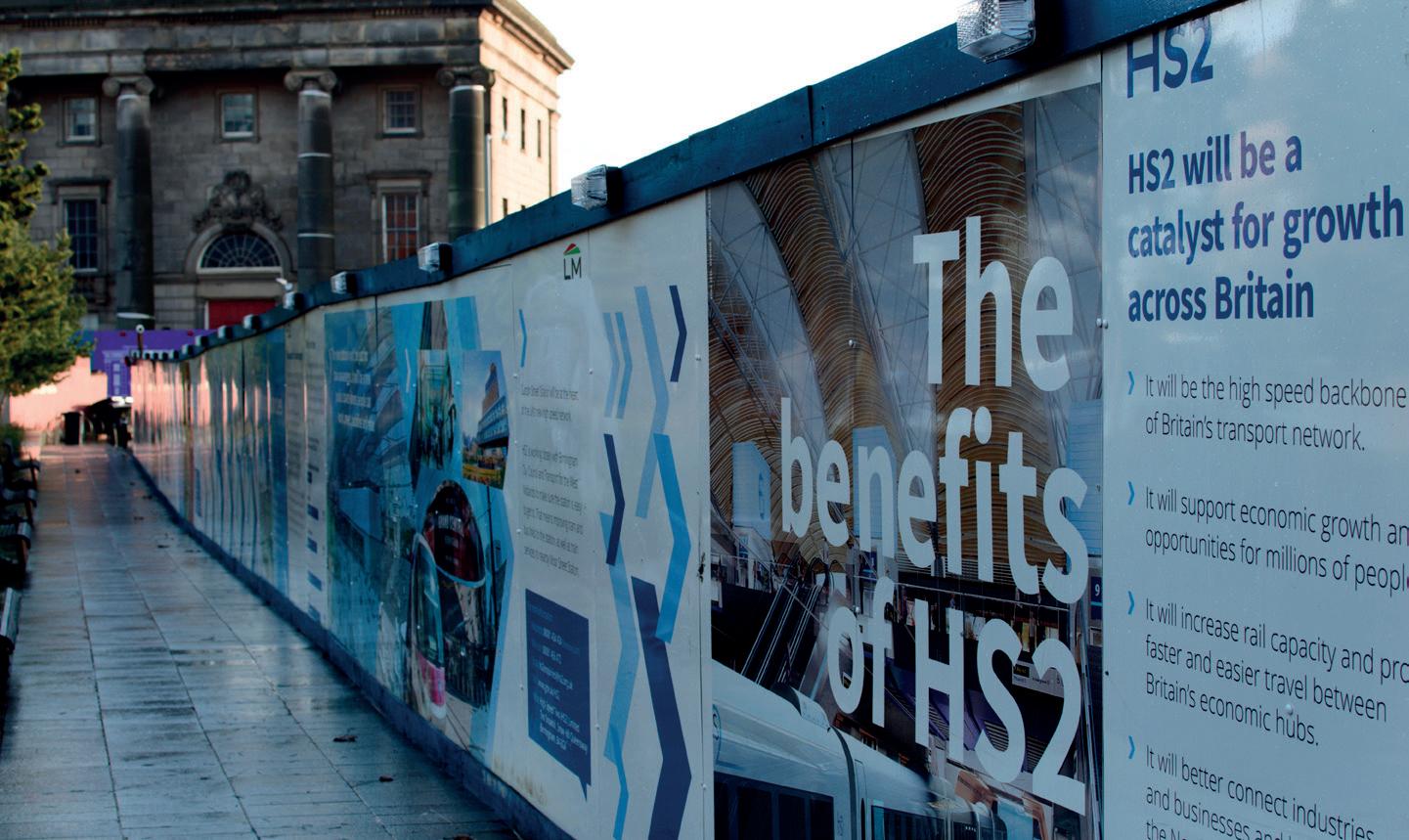
The Chancellor has confirmed that more than £600 billion of capital investment over the next five years will be safeguarded to keep them on track. In the Autumn Statement, Jeremy Hunt also said capital budgets will not be slashed for the next two years, and maintained in cash terms for the next three years.
He said the government will focus on economic growth, despite having to find budget savings. Infrastructure is one of the key priorities.
He said: “I confirm that (because of this decision), alongside Sizewell C, we will deliver the core Northern Powerhouse Rail (NPR), HS2 to Manchester, East West Rail.”
He was clear in his view that it would be a “profound mistake” to cut the government’s research and development budget. Cash will be protected, with an increase to £20 billion over the next two to three years.
Delivering long term interest
The Chancellor plans to cut tariffs to support business supply chains – great news for the manufacturers in the UK – and plans to deliver investment zones will be kept, centred on universities in “left behind areas” to help build clusters of growth (more on that in the Spring, apparently).
Darren Caplan, chief executive of the Railway Industry Association (RIA), said: “On the face of it, it is welcome that the Chancellor has confirmed in the Autumn Statement that three key rail projects will be built in the coming months and years. This isn’t just the right thing to do when it comes to connectivity, but is also in the long-term economic interests of the country and the efforts to decarbonise, as well.
“Rail suppliers are very clear that clarity and certainty are essential, and so while we welcome the government’s announcement today, we urge the Government to simply deliver what it says it is going to deliver. The
industry still needs clarity on the details, including on all elements of HS2 and Northern Powerhouse Rail, and sight of the Rail Network Enhancements Pipeline, which still hasn’t been updated in over three years.
“To deliver both transformational major projects for the future and to protect today’s railway, the industry needs the government to commit to a long-term investment package beyond 2024, including through next week’s publication of the Statement of Funds Available for CP7. This will also ensure best value for money for both rail users and the taxpayer.”
Missing out
“While we welcome the Chancellor’s decisions, it is concerning that capital budgets will seemingly not rise as planned after 2024.
RIA will of course monitor to see that the rail renewals budget is maintained too, to ensure there is no deterioration in the network.
Norman Baker of Campaign for Better Transport said: “We welcome the Government’s renewed commitment to East West Rail, core Northern Powerhouse Rail, and High Speed 2, which will be vital to connecting communities and modernising our sustainable transport network, but we are disappointed that Bradford is to miss out from getting a highspeed stop (no new station is set to be built in Bradford as part of NPR).
“The government could have filled much of the Budget black hole by cancelling a small number of highly damaging road building schemes – it is regrettable that it didn’t take the chance to do this.”
Image: Shutterstock
The Chancellor of the Exchequer said we need economic growth if we want to avoid a doom loop of ever-higher taxes and ever-lower dynamism. We look at what that means for the railways and the reaction from the industry
20 | Rail Director | December 2022 railbusinessdaily.com Autumn Statement
We welcome the Government’s renewed commitment to East West Rail, core Northern Powerhouse Rail, and High Speed 2
Operated during the day or at night
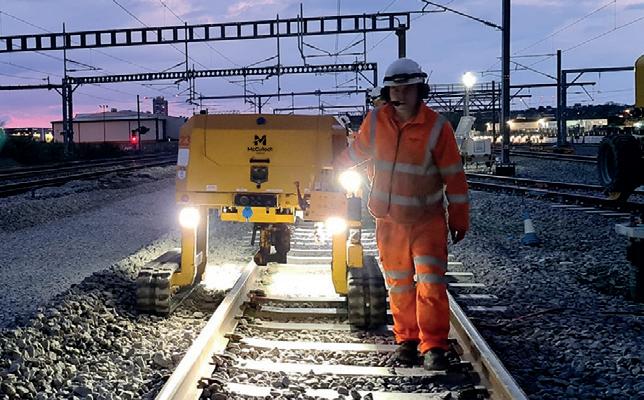
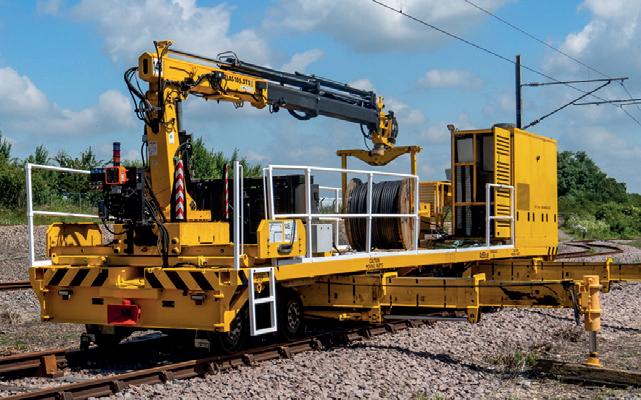

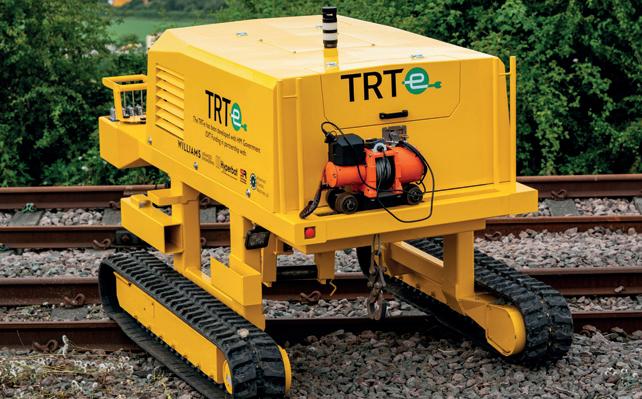

































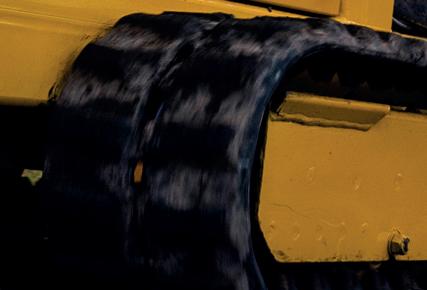




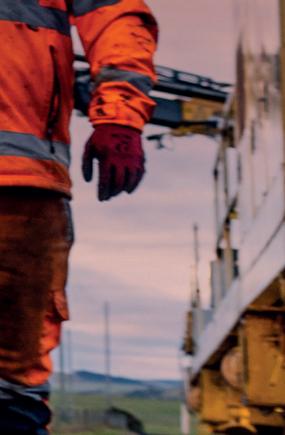
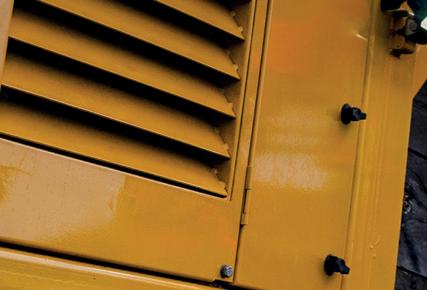

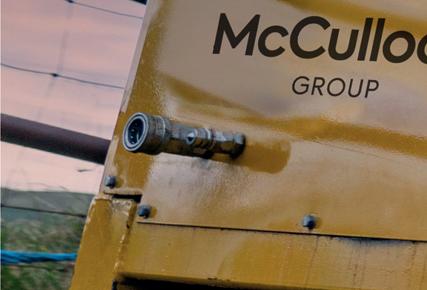





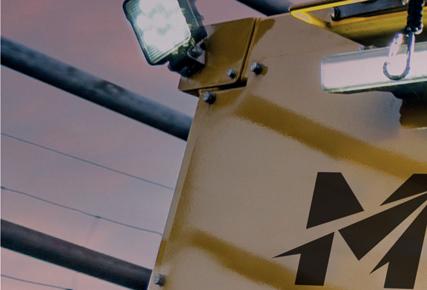











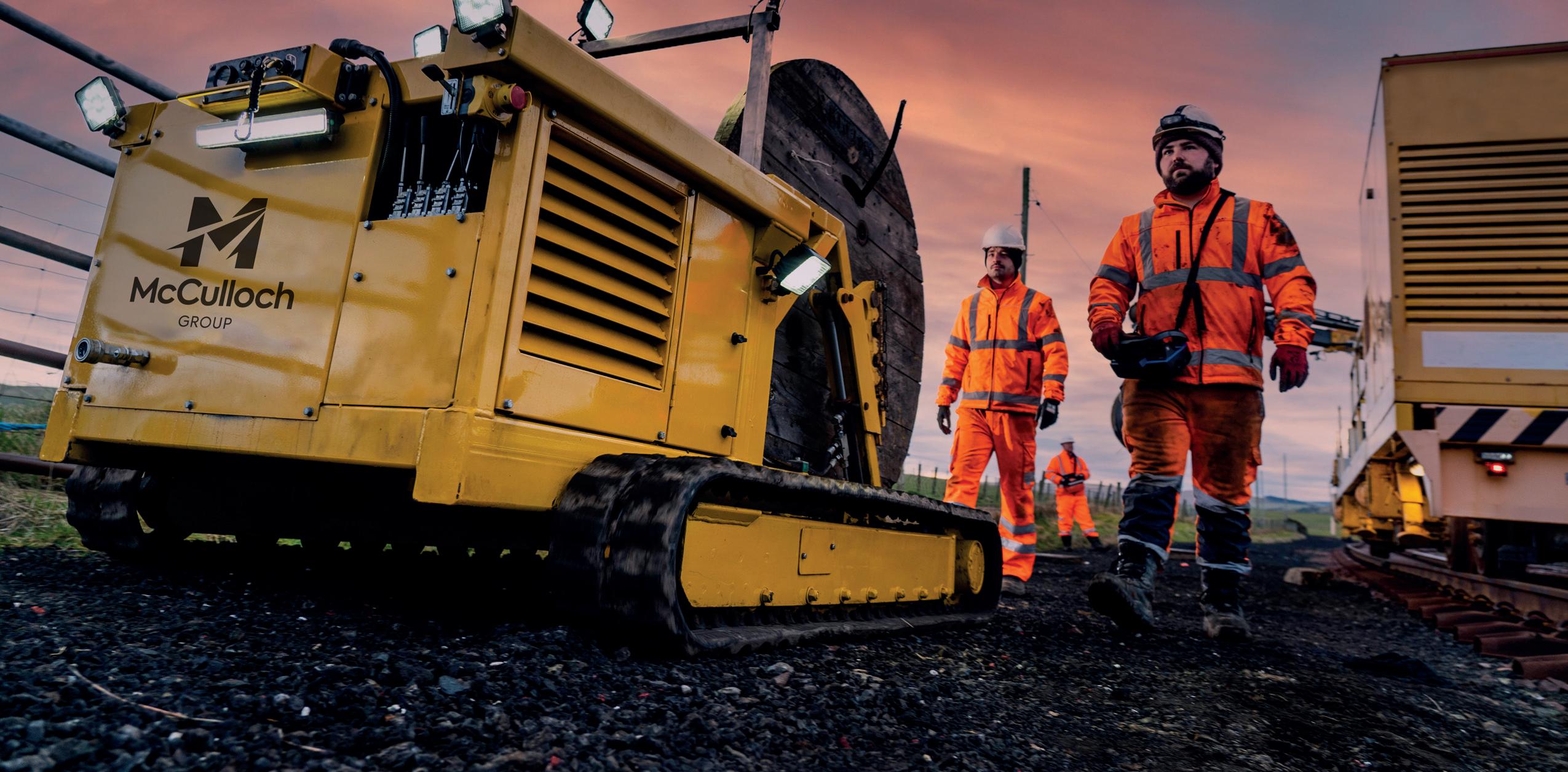
Developing your People from Within
I spoke at an event recently where the attendees were not dissimilar in profile to the readers of this magazine. My talk was on how to develop your people on a smaller budget. Understandably, economic conditions have led to many organisations wielding the axe big time on budgets across the board.
However, whilst fear of the unknown is keeping many people wedded to their current employer it’s not an excuse to downgrade their development. Loyalty is a moveable feast for the best of employees, so giving them reasons to up sticks when the economy improves - because you paid scant attention to them - could cost you dear. If you’re to continue to win the hearts and minds of your people today and tomorrow, then making it clear you remain committed to their growth is fundamental. But you don’t have to write a blank cheque to get results.
People participation
As I shared with a group of attendees that were keen to chat after my talk, if you want to keep budgets within reasonable boundaries it pays to participate in the people planning process. Don’t leave the task of establishing great ideas to your HR people and external specialists alone. If all you’re doing is querying budgets, you’re too remote from the process and are likely to make decisions that will only please your accountant. I would encourage you to be present at some meetings; not least because you’ll be able to discuss the ‘Why’ and the ‘How’ and you can influence the ‘When’ so that everything agreed upon aligns with your overarching business plans.
One of the popular takeouts from my talk was on the subject of identifying your stars for the future and allocating specific resources – financial and human. I’ve worked with organisations where the criteria for their rising stars were a tad narrow, simply fast tracking to the next role in their department. This needs to be expanded to moving them into other areas of your organisation
for example so they can bring along their attitude and aptitude. Your rising stars’ criteria should be broad and roomy but be sure to identify the specifics and if in doubt work with a specialist.
will need and agree the structure for dissemination so they can decant their know-how easily through a number of relevant, creative, and compelling channels.
Finally, I would like to touch on the importance of building a culture where your employee experience ranks alongside the ultimate customer experience. When I begin working with an organisation with a remit to improve their bottom line through people development, I’m always keen to find out how they demonstrate staff appreciation - from the interview process to onboarding, mentoring and ongoing training. That’s because there is a distinct correlation between employees knowing how much their employer appreciates them and their outputs, not to mention low absenteeism. As I said in last month’s column, this may sound like a dose of common sense but few employers talk this language so you can bet that if they’re not talking it, they’re not doing it. It pays to be on the road less travelled! I’m back next month but if you have any questions in the meantime, please get in touch.
About Amy Blick
Of course, not everyone is a star in your business, which is why a mentoring programme – members of your team supporting, inspiring, and encouraging others - is a low-cost way of bringing people on. Spoiler alert, the biggest mistake I’ve witnessed with these programmes is the lack of mentor training, which can lead to a programme being curtailed in its preliminary stages.

The same principle applies to expert knowledge champions. There will be people in your organisation brimming with experience and expertise. This must be captured and shared. So, identify the support your knowledge champions
Amy is an associate CIPD professional with many years’ experience and expertise gained in fast-paced business environments with a strong focus on growth. She works with organisations to accelerate efficiencies within all areas of the business. Her qualifications and training include CIPD Level 7 in HR Management, UK Employment Law Diploma, IOSH Working Safely certified, Finance for Non-Finance Managers, and GDPR for Business. Amy has developed a series of one and two-day HR MOTs which give you the opportunity to focus on key HR issues in your organisation. Find out more on her website.
You can contact Amy at: Amy@exhilHRate.co.uk www.linkedin.com/in/amy-blickexhilhrate/ www.exhilHRate.co.uk
If you want to keep budgets within reasonable boundaries it pays to participate in the people planning process
Amy Blick is an experienced HR specialist and the founder of ExhilHRate. She is internationally renowned for her work with global brands and SMEs. In her second of three columns for Rail Director, Amy looks at how you bring your people closer to the heartbeat of your business
22 | Rail Director | December 2022 railbusinessdaily.com People






VIEW AND DOWNLOAD OUR E-BOOK trust us to deliver onSaveC02 emissions with our generatorsbattery PRE PLAN YOUR RAIL FESTIVE BLOCKADES By working in partnership with Speedy Rail, we can: • Deliver a complete managed service for your site • Supply up-to-date quality products / engineers / operators to match your needs • Reduce carbon footprint • Manage transport costs • Advise the correct products for safely lighting up your site • Support you with our on-call 24/7 dedicated rail desk Visit speedyservices.com/rail/festive-blockades or contact 01942 277 982 for more information and to plan for your festive blockades SUSTAINABILITY IN A WHOLE NEW LIGHT Portable and Managed Lighting Solutions for every Scenario We can provide managed site lighting services for all scenarios. • Plan ahead • Save on cost • Reduce risk See how our lighting solutions can reduce your carbon emissions with our online calculator. Visit: speedyservices.com/rail-calculator 01942 277 982 speedyservices.com
Nearly 70 million journeys in six months on the Elizabeth line
Transport for London (TfL) has revealed that nearly 70 million journeys have been made since the opening of the Elizabeth line six months ago, with half of these made in the central section between Paddington and Woolwich.

The latest ridership data shows that around 600,000 journeys have been made on the line each day, with the most popular journeys made all involving Tottenham Court Road station, and with Stratford, Paddington and Canary Wharf the most popular destinations with people leaving the West End.
TfL says that use of Tottenham Court Road has increased by more than 80 per cent since the Elizabeth line launched and use of nearby
Bond Street station has increased by more than 25 per cent since the station opened in October. The Mayor of London, Sadiq Khan,
said: “Delivering the transformational Elizabeth line has provided a massive boost to London’s businesses this year, crucial after the pandemic. This is helping us to continue building a better London for everyone – a city that is fairer, greener and more prosperous for all.
“Since it opened six months ago, millions have already travelled on the Elizabeth line and it’s already brought a huge range of benefits – encouraging people back onto public transport, helping them to make the most of the capital and supporting businesses right across our city. The benefits of the Elizabeth line expand far beyond London, as it’s helping to contribute £42bn to the UK economy and support businesses right across the country.”
Andy Lord, London’s transport commissioner, says he is proud the line has not only become part and parcel of travelling in London and the South East, but is also showing how sustainable and affordable transport can drive economic growth and recovery
24 | Rail Director | December 2022 railbusinessdaily.com Elizabeth line
Since it opened six months ago, millions have already travelled on the Elizabeth line and it’s already brought a huge range of benefits
Last month direct Elizabeth line services started running from Reading, Heathrow and Shenfield into and out of central London, which means customers can travel east all the way to Abbey Wood without needing to change at Paddington mainline station and can travel west from Shenfield without changing at Liverpool Street mainline station, making journeys quicker and easier. Trains now run every three to four minutes between Paddington and Whitechapel.
Customers can also now use the Elizabeth line seven days a week following the start of regular Sunday services through central London. This is all the more important for businesses in the run-up to the festive period, which is the busiest time for many retailers.
Andy Lord, London’s transport commissioner, said: “I am extremely proud that the Elizabeth line has not only become part and parcel of travelling in London and the South East over the past six months, but that it is also showing how sustainable and affordable transport can drive the city’s economic growth and recovery.
“We look forward to welcoming many more customers onboard as they experience and enjoy the very best of what the capital has to offer as the festive season begins.”
All 41 Elizabeth line stations are step-free from street to platform from Paddington to Woolwich, and Heathrow is step-free from street to train.
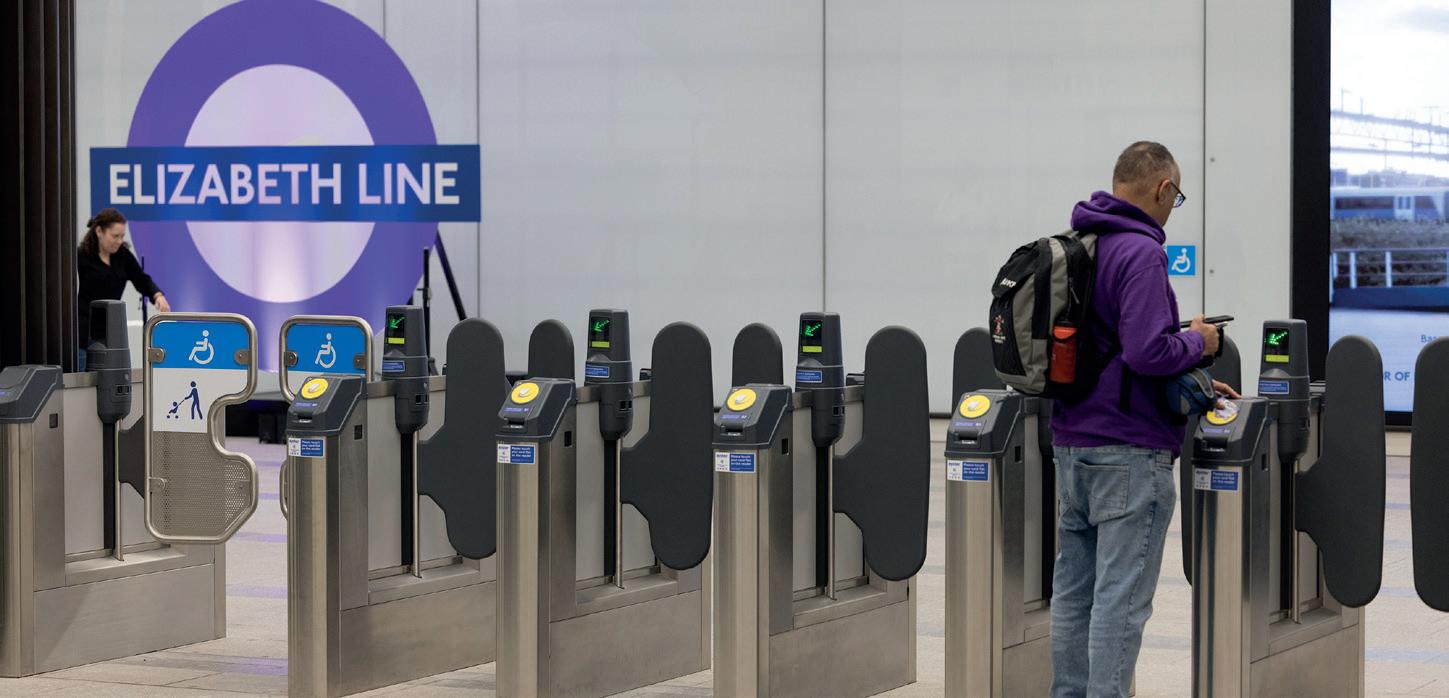
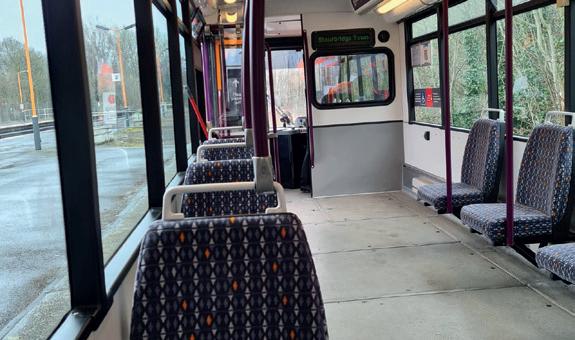

Driving growth
In May 2023, the full peak timetable will be in place. At this point, the peak time frequency will increase to 24 trains per hour between Paddington and Whitechapel, with 16 trains per hour off-peak. Direct services from Shenfield to Heathrow Airport will also commence, boosting connections into central London and

creating more opportunities for businesses near the stations.
Transport secretary Mark Harper said: “In just six short months we’ve seen more than 60 million journeys along the Elizabeth line, driving growth not only within London but across the wider region. This incredible project, which government invested over £9 billion into, has already created over 55,000 jobs, and is expected to generate £42 billion for the entire UK economy, is a shining example of what we can do when working together.”

Pre Metro Operations Ltd, Regent House, 56 Hagley Road, Stourbridge, West Midlands, DY8 1QD Tel: 01384 441325 Email: info@premetro.org Website: www.premetro.co.uk pre-metro-operations-limited PreMetroOperationsLtd @pre_metro Working with leading UK transport companies and investors to provide low-cost light rail solutions. • Specialists in VLR and LRT • Consultation, establishment and operation services • Targeting carbon zero • Over 16 years of operations experience
railbusinessdaily.com Rail Director | December 2022 | 25 Elizabeth line
Thousands tune in to watch
Halsall, chair of the Rail Wellbeing Alliance, says he is proud of how the event has evolved
Musician
Professor Green and TV personality and hypnotist Paul McKenna were among the list of celebrity speakers joined by wellbeing experts at this year’s Rail Wellbeing Live, the industry’s biggest free health and wellbeing event.

The two-day event concluded with the winners of the Wellbeing Hero Awards being announced, showing appreciation to colleagues in the railway and recognising those who go the extra mile to promote and deliver health and wellbeing in the industry.
Awards
The individual award went to Andy Healey from Siemens Mobility, who is described as going above and beyond to put the health and wellbeing of his colleagues first. He also sets aside one day a month to focus on all the wellbeing matters that have been put into place, checking on their progress and ensuring they are always actioned.
The winner of the team award was The Core Valley Lines Team at Amey. The organisation has implemented many wellbeing initiatives; one of them is ‘Coffee Roulette’, where you can chat with people you’ve never met before.
Once a month, your name is drawn out of a hat, and you have a conversation with someone from the business for 20 minutes.
supported the event and for being part of our mission to make the rail industry a healthier and happier place.”
Rail Wellbeing Live is the brainchild of the Rail Wellbeing Alliance, a cross-industry rail group made up of train operating companies, suppliers, and industry bodies. The free two-day online event offered everyone in the rail industry the opportunity to come together and connect with industry and high-profile speakers, getting inspiration, tips, and guidance on how to tackle a wide range of health and wellbeing issues.
Wellbeing Wednesdays
John Halsall, chair of the Rail Wellbeing Alliance and managing director for Network Rail’s Southern Region, said: “This year’s event has been a great success, with thousands of people joining us over the two days. I’m proud of how Rail Wellbeing Live has evolved into such a large industry event that encourages everyone to share and talk about issues relating to health and wellbeing. I’d like to thank everyone who
Rail Wellbeing Live isn’t just a once-a-year event –on the first Wednesday of every month the industry hosts ‘Wellbeing Wednesdays’, starting at 11 am and again, it’s free to join online. A different health and wellbeing topic is covered each month. On 7 December, the focus will be on how the rail industry tackles some of the most challenging projects during the holiday period.
John
26 | Rail Director | December 2022 railbusinessdaily.com Wellbeing
This year’s event has been a great success, with thousands of people joining us over the two days
Sign up here: https://www. railwellbeinglive.co.uk/
Transforming lost and found for public transport
Automate manual tasks
Improve visibility of lost property and comply with GDPR
Deliver a modern, mobile experience for travellers


Free up valuable staff time
Reassure your passengers, save time & money and return more items of lost property with our lost and found software.
MWe have been providing a valued lost property service for travellers in London since 1933 and we are excited to upgrade our lost property system so that our staff can deliver a better experience to those customers who unfortunately lose their belongings on our network. We look forward to working with NotLost in delivering a system that modernises our approach to lost property, ensuring more customers get back their valued possessions.
TfL Performance Manager
For a free demonstration contact: russ@notlost.com
notlost.com
Trusted by
EDI Charter welcomes 200th signatory
“EDI is one of the foundational principles for GBRTT (Great British Railways Transition Team) so is core to the culture we are building within the organisation.”
That is the message from Anit Chandarana, lead director of GBRTT, after the organisation became the 200th signatory of the Rail Equality, Diversity and Inclusion (EDI) Charter, led jointly by the Railway Industry Association (RIA) and Women in Rail.
The EDI Charter was launched in November 2020 and is open to all companies, clients and organisations working in the UK rail sector who wish to play a role in promoting positive change in the industry.
Attracting organisations
The voluntary initiative has attracted organisations of all sizes and disciplines across rail, including government bodies, major clients, operators, suppliers and SMEs.
Anit said: “We are very proud to be the 200th organisation in the rail industry to sign up to the EDI Charter. EDI is one of the foundational principles for GBRTT so is core to the culture we are building within the organisation.
“We are committed to integrating and embedding equality, diversity and inclusion into everything that we do within GBRTT and in the design, mobilisation and formation of GBR as well.
“This is one of our many commitments to making our industry more equitable, diverse and inclusive and we look forward to our partnership with Women in Rail to progress this further.”
The Charter aims to promote an inclusive culture within railway organisations, and ultimately build a more balanced and higherperforming sector, which attracts, develops and retains the widest possible pipeline of talent and skills.
All signatories commit to several key commitments, including to:
Appoint a member of the senior leadership team as an ‘EDI Champion’;
Agree an action plan, monitor and report on progress made;
Provide opportunities for training and education of employees and support the progression of diverse individuals into senior roles to improve diverse representation at senior and executive level of the UK railway industry;
Create a culture that fosters inclusion and provides a safe space for all employees to talk openly, including at industry events and in meetings; and
Make recruitment and progression processes accessible and attractive to all to attract, retain and develop people of all backgrounds, ages, genders and identities.
more equal and more diverse railway industry. Reaching 200 signatories – and across all types of organisation - marks a major milestone for our industry.
“We now look forward to seeing even more organisations signing up to the Charter in the next year and we will continue to report on the good progress being made.”
Reaching targets
The first annual progress assessment of signatories is now underway. Preliminary results show around 90 per cent of signatories have either agreed an action plan or are in the process of agreeing one and nearly all signatories have an internal EDI Champion confirmed. The results also show a positive correlation between how comfortable people feel championing EDI, and how good the EDI culture is perceived to be within an organisation.
Christine Fernandes, chair of Women in Rail, said “Women in Rail are delighted that we have reached a new target of 200 signatories that have signed up to the EDI Charter.
Darren Caplan, Railway Industry Association (RIA) chief executive said “RIA is delighted to see so many different organisations, from all parts of the sector, signing up to support a fairer,
“This underpins the support and engagement we have from the industry and the willingness to want to make a change and difference. It’s incredibly encouraging that our 200th signatory was GBRTT.”
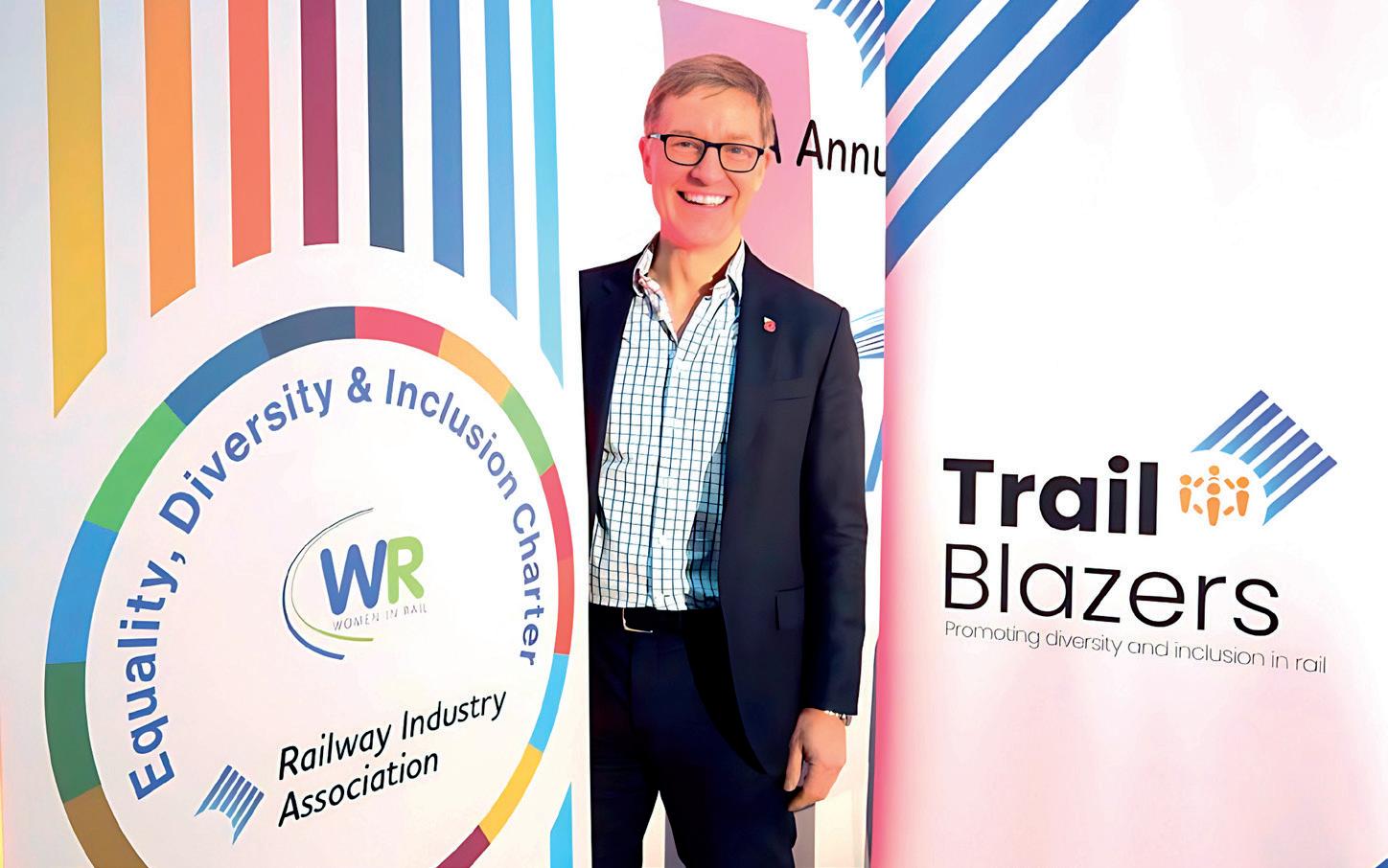
We now look forward to seeing even more organisations signing up to the Charter
28 | Rail Director | December 2022 railbusinessdaily.com EDI Charter
The Great British Railways Transition Team has become the latest organisation to sign up to play a role in promoting positive change in the rail industry


For more details, call our specialised team to discuss your particular project on: 01233 639039 sales@sunraydoors.co.uk www.sunraydoors.co.uk SECURITY DOORS FOR THE RAIL INDUSTRY ● SPECIALIST RAIL SOLUTIONS - Overground, Underground/TFL, DLR ● REFERENCE PROJECTS - Crossrail, DLR, TFL, EuroTunnel ● BESPOKE SOLUTIONS - Tailored designs to meet project criteria. ● INSTALLATION & MAINTENANCE - Qualified, Compliant & Trained Operatives ● TECHNICAL SUPPORT - Consultative advice with complete back up concept to installation.
Digital connected worker technologies
Working smarter, not harder and ensuring that they get it right first time is something all organisations strive for. Providing the platform to achieve this is software development specialist Intoware, set up in 2015 with one vision; to become the first-choice partner for the connected workforce.
Its workflow automation platform, WorkfloPlus, is revolutionising many industries, particularly the railways, where complex industrial systems and paper-based processes have made work increasingly challenging.
“Our solution provides real-time access to supporting linked resources, including videos, technical documentation, stock management systems, training materials and remote expert assistance, at the point of need, on any mobile device,” explained Hannah Bailey, Intoware’s business development director.
Digital workflow
WorkfloPlus transforms paper-based processes into a digital workflow using its intuitive online drag-and-drop editor. It also enables technical sheets, videos, pictures, text documents or web links to be added to improve the safety and accuracy of the work, the organisation, planning and distribution of workflows and live work status.
The system is already transforming Network Rail after a trial deployment of the software was set up, initially for six months, at Aston depot. It was used to gather evidence and user feedback to help the organisation assess and decide how digital connected worker technologies could greatly enhance, and bring clear value, to the organisation operationally, commercially and from a staff safety and regulatory compliance aspect.
Hannah said: “Simple solutions to complex problems, supporting the digitalisation that people and organisations are looking to deliver, is what we pride ourselves on offering. In this case, we were approached by Network Rail’s research and development (R&D) team partnered with the Central Rail Systems Alliance (CRSA), who were looking to address a series of challenges.
“Through our work we have helped them massively reduce their reliance on paper forms
and other benefits such as time lag of data collection and overall making the whole process a lot more efficient and safer by reducing the amount of time frontline workers are spending trackside.”
forms data input (one-two hours per form), 40 per cent time saving on data collection, 40 per cent increase in data accuracy/completeness, instant digital document access, and up to 50 pieces of paper saved per site walkout.
The project was also put forward as a nomination from Network Rail’s R&D team and the Central Rail Systems Alliance for the Digitalisation category of the Rail Tech Innovation Awards, which it won.
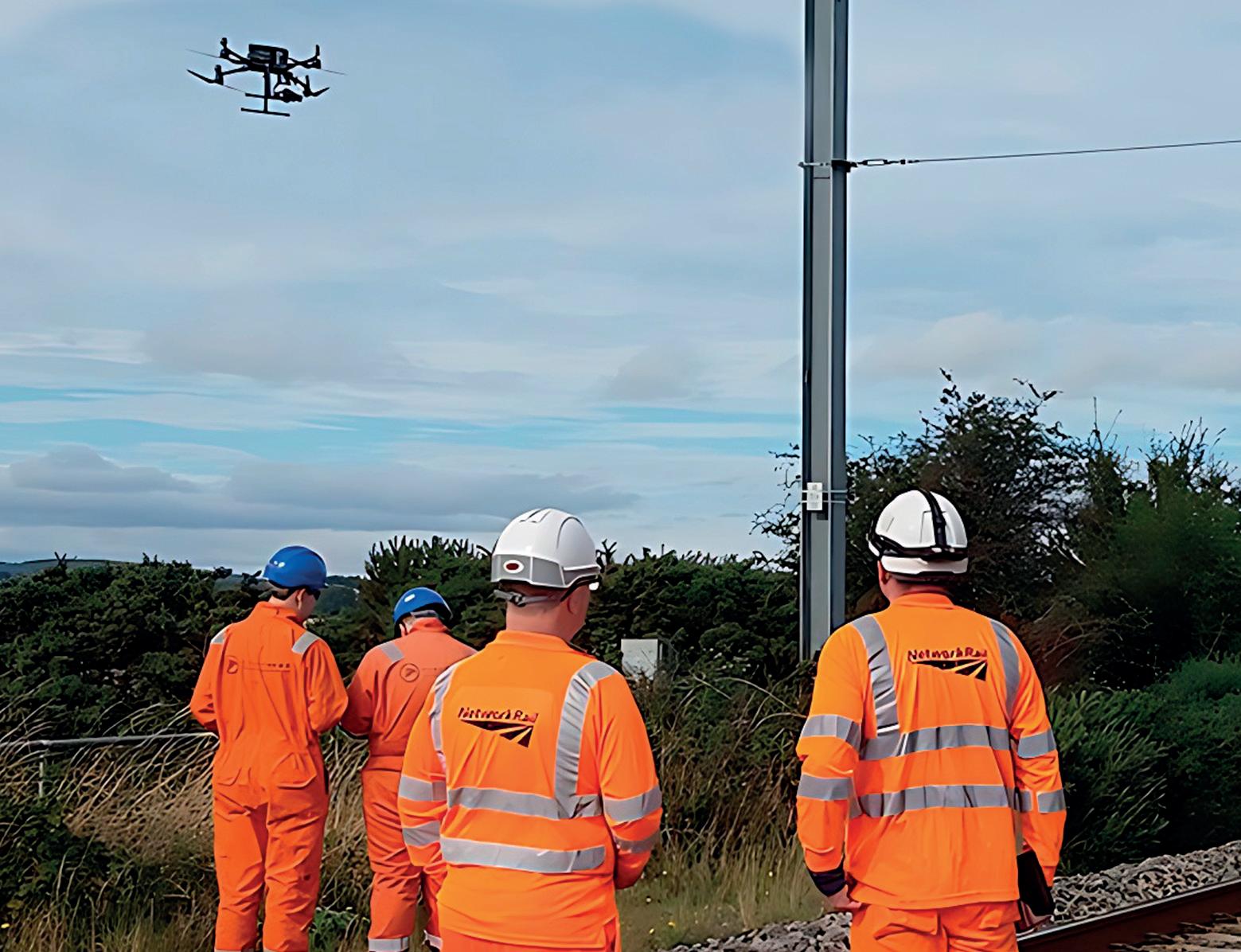
Information access
“Although the pandemic might have initially thrown a spanner in the works, it also highlighted how important WorkfloPlus is, particularly at times when there are reduced teams; it’s about looking at ways information and resources can be accessed and work processes translated into digital workflows,” said Hannah.
Intoware’s all-in-one connected worker platform brings the industry software to digitise processes, manage teams and access real-time data. The team has worked alongside Network Rail to ensure the system is game-changing for staff, making their work easier, more efficient and safer.
The outcome has seen some fantastic results, including 100 per cent savings on site walkout data input (four-five hours) and time savings on
“Initially working with the Aston depot, it was found that for every £1 spent £14 was saved as a result of the whole digitalisation process around digitising the TEF (Track Engineering Forms). We worked with the team training them on WorkfloPlus and they became the champions and ambassadors of looking after their own processes. We then looked at other aspects, working on integrating some of it into their legacy IT infrastructure.
Hannah Bailey, business development director at Intoware, explains how the company is helping put Network Rail on the right digital track
30 | Rail Director | December 2022 railbusinessdaily.com Feature Industry Spotlight Advertorial
Initially working with the Aston depot, it was found that for every £1 spent £14 was saved
“One of the key things about our platform is its flexibility; you can almost parachute it in like a digital bridge. With their Track Locator, we’ve managed to use the geolocation from the device and translate that in WorkfloPlus. They also wanted to integrate with Sharepoint to allow easier access to the reports, very much in real-time.”

Since the launch, Intoware has also worked closely with RealWear to develop a workflow automation platform for its market-leading industrial wearable devices, the HMT-1 and Navigator 500 headset. Wearable devices help to keep workers completely hands-free, allowing them to stay connected to operate tools and equipment needed for the job, smarter, safer and faster.
Worker safety
It has been created to ensure workers are safer with full access to digital workflows, resources, and the ability to capture knowledge and share staff expertise. It also reduces walk-time and repeat visits, and gives workers the opportunity to view technical drawings via the headmounted display.
“We are the best in class in what we do and are continuing to develop features with our product roadmap based on what our customers are looking for or saying they need, with our team sitting down and working closely with them to understand their needs,” said Hannah.
“With Network Rail we have been doing further trials and are now deploying the system in different areas, including Newcastle, Doncaster and York, taking another set of processes called the asset maintenance processes, digitising and turning those into workflows which will be accessed on iPads, mobiles and tablets. We’re also working with a company looking at how to integrate their drone footage from overhead line inspections with the actual information being collated on the track by the teams, linking the aerial imagery with the actual data.”
Network Rail is just one success story for the WorkfloPlus system, which has also been used
in improving processes in sectors including oil and gas, with Petrofac using its real-time reporting, product management productivity collaboration, and data and insight applications.
Working with customers
“The key to our success so far is the team at Intoware’s unbridled passion for supporting organisations. We work closely with customers, helping them to adopt a more digital and integrated way of working, which has allowed us to continue to grow our product,” said Hannah. “We’ve got a new version of it coming out shortly, a web-based client which will allow us to add new features and adapt quicker while providing an even richer and more enhanced user experience. It is supported on a robust microservice architecture, the same as used by Netflix and Google.
“We are constantly working hard to make our product and platform future-proof, agile and quicker to add features to; it is all about speed and adaptability as technology is constantly evolving. Digital transformation isn’t a destination; you can’t get there as it will be forever evolving as more technologies come on board.
“For us at Intoware it is about keeping pace with its evolution, ensuring we take our customers on that journey with us to adopt new technologies and change their way of working for the better. In the railways we have built up a lot of experience, understand the challenges and have the tools and enthusiasm to accelerate organisations’ digital journey.”
WorkfloPlus – A feature rich solution
Intoware’s WorkfloPlus works on PC, tablet, mobiles and wearable devices, optimising processes, reducing downtime and improving efficiency. The feature benefits include:

Digitises any paper-based process or manual task
On-demand access to documents, videos, etc.
Ensures compliance in regulated industries
Standardisation of processes ensures consistency and quality
Real-time data captured for reporting and full digital audit
Integrates into IT infrastructure and legacy ERP (enterprise resource planning) systems
Integrates external devices such as barcode scanners, drones etc. to capture and exchange live data
Provides access to resource at the point of need
Supports voice-activated instructions
Provides safe hands-free access to remote expert
railbusinessdaily.com Rail Director | December 2022 | 31 Feature Industry Spotlight Advertorial
Working for change in the railways
Maria Grazia Zedda is passionate that people feel empowered to speak up, and speak out about their disability and in doing so make a difference to people’s lives and drive positive change right across the rail industry.
HS2’s workforce equality, diversity and inclusion (EDI) senior manager has been recognised by the Shaw Trust for her work supporting people with disabilities, named in the UK’s top 100 most influential people with an impairment or disability.

Positive thinking
“Think positively about your disability and what you have learned from it and how valuable your experience is for yourself and for any employer who’d be lucky to hire you,” said Maria, who is severely deaf.
“Anyone with experience of disability, don’t let that stop you from pursuing employment and a career in the railways, as there’s plenty of employers who seek out people with diverse experiences and backgrounds. With a Disability Confident employer, organisations want you to work for them and benefit from your insights, skills and experience.
“Being named as one of the UK’s top 100 most influential disabled people feels amazing and very humbling and as part of my role in EDI it’s an opportunity to help build a legacy of accessibility and disability inclusion in the rail, engineering and construction industries through HS2.”
of people from underrepresented groups in employment.
Among her achievements over the last 12 months, which were pivotal to her Shaw Trust recognition, includes the development and launch of HS2’s new accessibility policy and digital accessibility hub – which launched on International Disabled People’s Day in December.
Bringing skills and new perspectives
“I am very proud to be working on HS2 because we have an incredible opportunity to leave a legacy of inclusion for future generations; but they’re also lucky to have me” smiled Maria, who has previously worked as an EDI and disability inclusion consultant for various train operating companies, including access auditing the then Virgin Trains East Coast stations along the route.
Maria has worked at HS2 Ltd for almost five years and plays a lead role in ensuring the organisation meets its EDI commitments and targets – this includes attracting more women into the sector and increasing the number
“And the same goes for the many disabled people who bring their skills, intellect and resilience to any project or employer. We bring informed and intersectional diverse perspectives that pave the way for innovation, business competitiveness and protect against risks.
Maria Grazia Zedda, HS2’s EDI manager, has been recognised by the Shaw Trust for her work supporting people with disabilities. She shares her story:
32 | Rail Director | December 2022 railbusinessdaily.com HS2
Anyone with experience of disability, don’t let that stop you from pursuing employment and a career in the railways
“Disabled talent has long been overlooked due to employers’ fears on making workplace adjustments and fears of “getting it wrong”. HS2 and many other Disability Confident Leader organisations like us are demonstrating how being inclusive to disabled colleagues and enabling accessibility policies actually helps them be ahead of the change curve and better equipped to prevent and address future challenges.
“The adjustments made for disabled people (such as flexible working hours, equipment or software) have been proven to help every single employee during the pandemic, for example, and those lessons and examples of best practice are here to stay.”

Overcoming bias
Maria’s successful career hasn’t come without its challenges, which she still continues to face to this day, which she says often stem from the lack of planning and understanding of accessibility principles, as well as bias of those who upon meeting her jump to conclusions about her ability to do a job because she is severely deaf.
“At times it’s funny, sometimes there’s an expectation that as a severely deaf person I can lip-read everything – it should be called lipguessing, not lipreading – or that the automated captioning will accurately capture everything everyone says, no matter how fast they talk or the regional accent they have,” Maria said.
“Many underestimate the fatigue that catches up with you at the end of a working day, in which you’ve been reading captions or lipreading for seven-eight hours. But, working for a DisabilityConfident Leader organisation like HS2 and the only Platinum Clear Assured accredited organisation, we make it possible for disabled colleagues and myself to get the workplace
adjustments we need to do our job to the best of our ability.
“We use Clear Talents to help ensure we provide adjustments for our disabled colleagues, whether that’s equipment or software or flexible working. For me, that means I’m able to work flexibly and cut out some breaks during the day and catch up later on. We also have our 2Gether Disabled Staff Network which is a source of support and we regularly meet to socialise, help, listen and support each other.”
“However I also met low expectations and challenges in the UK too, with the additional barrier of assumptions about me as foreignaccented “immigrant” which turned into feeling like a “persona non grata” after Brexit.
“But this made me realise that in every life there’s challenges and it’s about how we as individuals cope and react to them so that we are active players in our own story.
“I’ve not yet overcome all of my struggles, I’m still learning, but what motivates me is my work in EDI as I’m advocating and working for change not just for myself but for many others too.”
Facing barriers in finding employment as a mother with a disability, Maria took the decision to retrain as an access auditor, setting up her own company when she was nine months pregnant with her second child. Through Wideaware Ltd, she provided training and e-learning on disability equality to thousands of people, including working with Network Rail and the Rail Delivery Group.
Industry engagement
Maria, who is originally from Cagliari, Sardinia, and now lives in Southeast London, moved to the UK aged 20. After completing a vocational course, she worked at the BBC’s Disability Programmes Unit, leaving to complete a degree in sociology and work with disabled people as an employment manager, supporting candidates to help them get jobs in corporate sectors in the UK, the USA and Italy.
“Leaving Italy was heartbreaking and exciting at the same time,” she said. “It was the 90s and I wanted to escape the narrow social confines of my local culture in Sardinia and low-set expectations about my abilities as a woman or as a deaf and disabled person.
It is a passion that continues today, with Maria describing her ultimate goal as the day in which accessibility becomes ‘business as usual’ and not a special request.
“My personal view is that the rail industry needs to engage more often and better with their disabled customers and employees,” said Maria, who has written a novel inspired by her life which she hopes sends a message that anyone can aspire to achieve their dreams through self-development, good advice and access to basic human rights.
“Consulting with local disabled people mustn’t be a box-ticking exercise, and should actively factor in accessibility and disability inclusion at the very start of the design stages. I’m incredibly proud of how we’re doing that at HS2. Embedding these principles at design stage, from our worksites, to stations through to the rolling stock, through our inclusive design strategy and the EDI expectations we set right through to our supply chain. We’re not doing this because it’s a nice thing to do, it’s because we are building the best railway in the best way, and that means it’s for all of us.
“Finally, it’s important to understand that accessibility and inclusion are constantly evolving and changing, and many barriers can be overcome not only through design but through technology and inclusive service. Actively and consistently seek out engagement with disabled customers and colleagues and you’ve got a recipe for business success and longevity.”
railbusinessdaily.com Rail Director | December 2022 | 33 HS2
At times it’s funny, sometimes there’s an expectation that as a severely deaf person I can lip-read everything
Four-day charity mission to support Ukraine
AaronRail and sister company Aaron Guard recently joined other members of the Transpennine Route Upgrade (TRU) West Alliance in a four-day charity mission, helping to collect and deliver several tonnes of donated supplies to the Poland/Ukraine border.
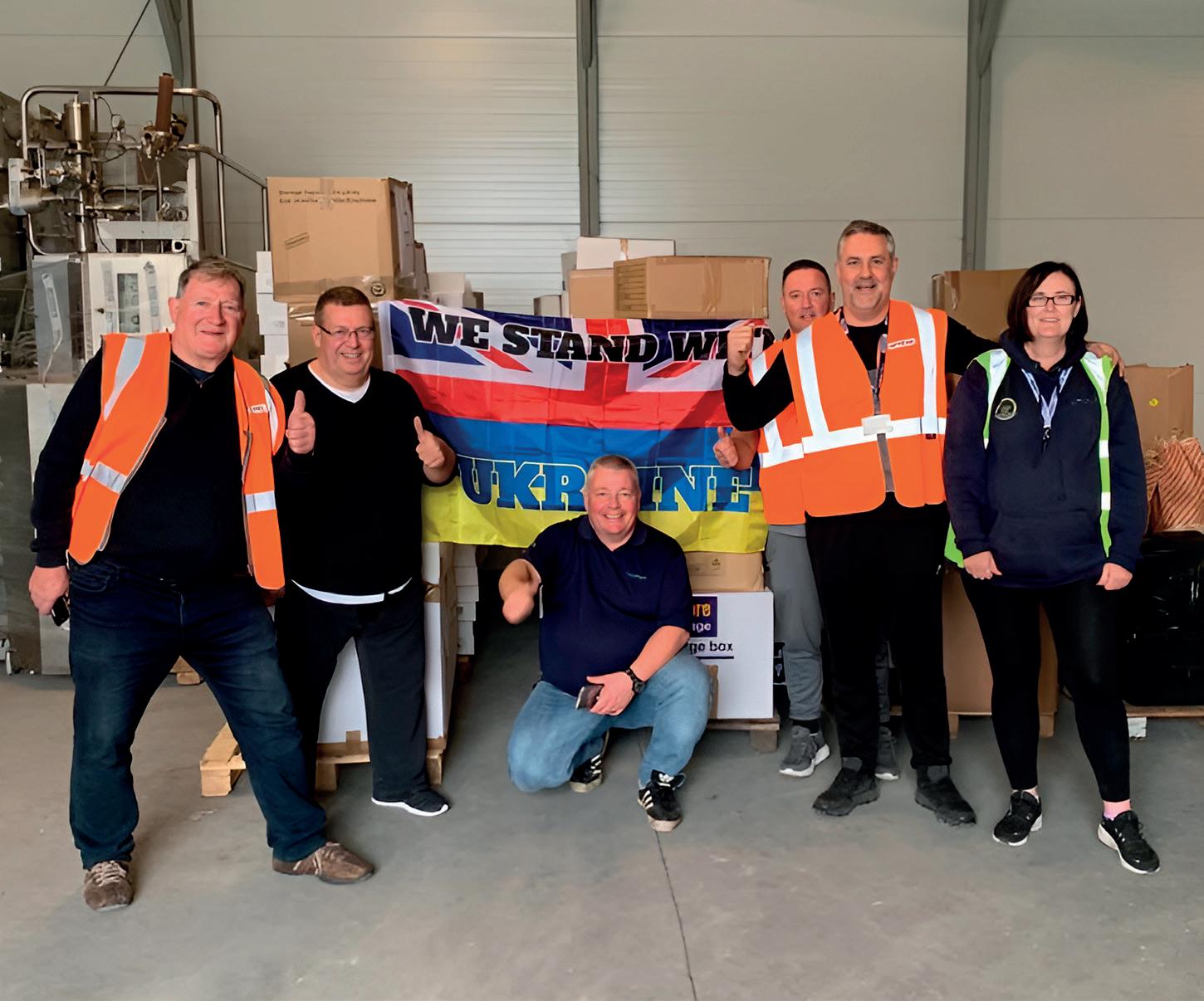
The mission (which involved alliance contractors Aaron Rail, Robinsons/FRG Group, and TXM and its partner company, E. Tupling and Son) saw a convoy team of six drivers deliver supplies to the Polish city of Przemysl, just 10km from the border. From there, the essential items are being distributed to refugees and frontline personnel.
Two vans left Aaron Rail’s Stockport headquarters last month for a 2917.6-mile round trip, catching a ferry from Dover to Calais and travelling through Belgium, the Netherlands, Germany and Poland. Amongst the drivers was Aaron Rail employee Roland Rowark, who also helped to load and unload vehicles.
Essentials delivered
The convoy reached Przemysl on Tuesday 8 November, and was able to unload its cargo of bottled water, nappies, sleeping bags, energy bars, torches, first aid kits, blankets, footwear, waterproof coats, soap, toothpaste, and toothbrushes. Many of these items were donated by Aaron Group’s suppliers.
Aaron Rail and Aaron Guard’s involvement in the charity mission was coordinated by Aaron Rail managing director Dave Barnett. While the TRU West Alliance had initially planned to collect and send supplies to Ukraine, Aaron Rail was able to provide two vans, ensuring that donations could be driven there directly. It also covered the cost of fuel, ferry crossings, and food for the convoy team.
Dave said: “We wanted to show our support for Ukraine, and I’m incredibly proud of our team, who worked hard to collect, organise and deliver these essential supplies. I also want to thank the suppliers who so generously donated items.”
In a message to Dave, the delivery’s Ukrainian organiser wished the Aaron team a “safe and
happy journey home”, adding that Ukraine had “forever fallen in love with the British people.”
The mission was a considerable undertaking, and the team worked tirelessly to collect donations, ensure that the fleet was compliant with border legislation, arrange ferries and accommodation, load and offload supplies, and tie in with contacts in Poland and Ukraine.
TRU West Alliance member Lee Blissett helped to deliver the donated goods, and said: “It certainly has been an extremely challenging yet
emotional four days, but an amazing experience. The effort, determination, teamwork and persistence from the convoy team was exemplary.”
Helping to meet basic needs
In the six months following Russia’s invasion of Ukraine, 13 million people were forced to leave their homes, and the Red Cross estimated that 18 million would need humanitarian aid. Aaron Rail and Aaron Guard hope that their donations will go some way to meeting the basic needs of those living and working in Ukraine today.
Part of the wider Aaron Engineering Group, Aaron Rail strives to support communities, both local and overseas. Earlier this year, it signed the Armed Forces Covenant, and has also helped Fijian soldiers to access job opportunities in the rail industry.
To learn more about Aaron Rail, visit https://www. aaronengineeringgroup.com/aaron-rail/
Aaron Rail’s Dave Barnett on collecting and delivering items to refugees and frontline personnel in Ukraine
We wanted to show our support for Ukraine, and I’m incredibly proud of our team, who worked hard
34 | Rail Director | December 2022 railbusinessdaily.com Charity


2022 As an Internationally recognised rail infrastructure service supplier, we offer a comprehensive range of services, covering S&T, civils, operational communications & overhead line equipment. Our Services Include: Delivering Engineering Railway Solutions • System Design • System Integration • System Assurance • Installation, Test Commisioning • Surveying • Civils • Life Extention Works • Isolation & Possession Management xrailgroup.com +44 (0) 3450 600 700 Engineering Together
Powering the freight trains of the future
a misnomer that internal combustion engines have to use fossil fuels. The internal combustion engine predates the petroleum industry, with the early engines using what we’d now call biofuels.”
That is the message from Shimon Shapiro, director at SBL-Rail, which alongside G-volution recently presented its dual-fuel evolution concepts of the Class 37, Class 59 and Class 66 locomotives, representative of Type 3 and Type 5 locomotives respectively and their operations.
“Engines have used fossil fuels because they were cheap and available, but engines don’t have to use fossil fuels. The work we’ve been doing shows that you can keep internal combustion but move away from fossil fuels,” he said. “The technology can stay, but adopt different fuels.
“In this case with dual-fuel it is renewable alternative fuels with diesel, but the diesel component can be replaced as well; you can have a renewable diesel-like substance which does the same job but is not a fossil fuel.”
Replacing diesel Dual-fuel engines use compression ignition and combust two fuels simultaneously, with the organisations’ concepts released earlier this year showing how diesel fuel can be displaced by renewable net zero carbon emission fuels.
Shimon said: “The benefits of dual-fuel engines are low running costs and moving away from fossil fuels; you’re on a pathway and route to market for alternative fuels and they have lower particulate emissions as well.”

The solution uses diesel with biomethane, diesel with biopropane and diesel with hydrogen. The Class 37’s English Electric 12CSVT engine and the Class 66’s EMD 12-710 engine are replaced by new dual-fuel engines meeting the Stage V emission standard. A twin engine concept Class 66 using new dual-fuel engines has also been developed as well as a dual-fuel evolution of the Class 66’s incumbent EMD engine.
The repower with new dual-fuel engines would also be applicable to the Class 59 locomotive. While the locomotives’ original engines could also be evolved to dual-fuel, modern engines offer higher efficiency, the opportunity to use advanced combustion control strategies and compliance with the latest emission standards.
The original diesel tanks of the locomotives are replaced with a smaller diesel tank and cylinders for biomethane. Alternatively, biopropane or hydrogen cylinders are installed in place of part of the original diesel tank. A range of fuel tank solutions were developed for each fuel, featuring either a number of smaller cylinders or fewer larger cylinders.

“There has been quite a bit of interest since we released our concepts, particularly from locomotive and freight operators who are looking for solutions to address the challenges involved in moving from fossil fuels, decarbonisation and improving air quality,” he said.
“Initially it was expected that locomotives would have a 40-year service life, but they are actually operating and working a lot longer than that, with the Class 37s now 70 years old. It is a challenge coming up with a solution for rail freight because of the high power of the locomotives and the high energy density that you get with diesel, but what we’ve found is that this is a valid solution.
Reduced cost and CO2
Shimon continued: “They can move from diesel, they can adopt alternative or even better renewable net zero carbon fuels and address air quality by dual-fuelling and if you repower with a new engine you get a further reduction of exhaust emissions and lower running costs as well.”
Dual-fuelling lowers particulate emissions and if a diesel particulate filter (DPF) is fitted, the engine spends less time working against an increased back pressure as the DPF fills.
“It’s
Shimon
Shapiro, director at SBL-Rail, explains more about delivering repowering feasibility studies to railway operators worldwide, particularly its dual-fuel evolution concepts
36 | Rail Director | December 2022 railbusinessdaily.com Feature Industry Spotlight Advertorial
Figure 1 – Class 37 dual-fuel concept by G-volution and SBL-Rail
Fewer DPF regenerations are then needed, improving engine efficiency and further lowering fuel consumption.
“In this project, we replaced the original engine and then dual-fuelled the new one to get you an improvement in efficiency,” he said. “We’re also looking at dual-fuelling the original engines as well, as an in-between step.
““It is cheaper to do because you are keeping the original engine, but you don’t get the efficiency gain as you haven’t moved up to newer engine design and you don’t get to meet the later emission standards as easily. Even so, it’s a way to deliver a lot of the things that dual-fuelling offers. You’re still adopting renewable fuels, moving away from diesel, you’re still reducing particulates, so we’re looking at that now as well.”
Looking at alternatives to the alternatives
SBL-Rail is also looking at other locomotive types and other fuels, with details set to be published in the near future. So far, the organisation has looked at biomethane, biopropane and hydrogen, but is also looking at hythane, which is a blend of hydrogen and methane.

“It is a way to get hydrogen into use, but you’re able to put it in the cheaper fuel tanks that methane, natural gas and biomethane use,” said Shimon. “We’re also looking at biogas which is the
initial product from an anaerobic digestion plant, but after the initial clean-up stage; it’s a mix of methane and CO2
“CO2 is not a fuel, but the initial biogas product is a cheaper fuel and engines can still run on it. It’s also possible to dual-fuel using ammonia so we are presenting a pallet of fuel options. With each of these fuels, there is a ramp up globally of supply and production routes, and renewable routes to those as well, so we’re aligning with that and showing what other fuels can be used.”
The future
For SBL-Rail the immediate future will involve the progression of its combustion modelling work, working to improve the engine calibration and the combustion that is being used for each of the fuels it has already worked with.
“We’ll continue looking for alternative combustion modes and ways to improve the use of those fuels: higher substitution rates, use of less diesel and improving that alternative fuel to diesel ratio.
“Work is also underway on progressing the combustion modelling of the new fuels, working on fuel packaging options, updating the concept and applying it to new rolling stock. This is as well as working with other locomotives and looking to do a new fuel conversion or retrofit.


“Rail is already efficient in terms of moving goods compared to lorries, but we need to make it better and address the diesel locomotives, and I think what we are doing offers the answers. We’re offering some interesting alternatives and interesting ideas, and I think they are deliverable.

“Furthermore, we are able to provide the full picture as to why they are deliverable, how the vehicle can be converted and, through operatorspecific route simulations, can show the impact they can have.
“At SBL-Rail the ideas keep coming and it is a broader offer than we have published so far, so I can’t wait to share some of the other work we’ve got on the go in the near future.”
a misnomer that internal combustion engines have to use fossil fuels” ackaging studies SBL -Rail y studies orldwide • Powertrain modelling • Route simulations • Packaging studies • CAD modelling Contact us: info@sbl-rail.co.uk|www.sbl-rail.co.uk
powertrain feasibility studies to railway operators worldwide Figure 2 – Class 66 dual-fuel concept by G-volution and SBL-Rail
railbusinessdaily.com Rail Director | December 2022 | 37 Feature Industry Spotlight Advertorial
“It’s
SBL-Rail Delivering
For more information, visit sbl-rail.co.uk
Top of the stops: London Waterloo regains title of UK’s busiest station
London Waterloo has been named the most used station in Britain, although its total number of passenger entries and exits is less than half of the number from two years ago (April 2019 to March 2020).

The figures have been revealed in the Office of Rail and Road’s (ORR) estimates of station usage statistics for the year April 2021 to March 2022, which include the annual total of passenger entries and exits at each of the 2,570 stations in Britain.



The history book on the shelf is always repeating itself
It is a return to the top for London Waterloo which, after a 16-year reign, was knocked off the top by Stratford (London) last year. But the station is back in pole position after 41.4 million passenger entries and exits in the latest year (April 2021 and March 2022). However, that total is some way short of the estimate of 86.9 million from two years ago.
London Victoria retained its position as the second most used station with 36.8 million entries and exits, while London Bridge stayed in third spot with 33.3 million. Stratford (London) dropped down to fifth with 28.2 million, although that is more than double last year’s estimate.
There are eight stations that serve the capital in the top 10, with Birmingham New Street the most popular station outside London in eighth place (22.7 million) and Manchester Piccadilly in tenth position (19.6 million).
The Office of Rail and
has revealed the most used
finding overall numbers are down on pre-pandemic levels Tel: +44 (0)1775 821222 - Email: info@premierpits.com - Web: www.premierpits.com MAINTENANCE AND INSPECTION TRANSFORMING ROLLING STOCK Premier Rail Pits offer the following benefits: • Welded construction to ensure a water tight finish • Quicker installation time compared to precast concrete • High quality finish • All internal service ducts fitted prior to installation • Easy to clean • Rail attachments fitted prior to installation • Full or part installations are available A full range of accessories and safety products are also available Improve the efficiency of your workshop with our range of pre-fabricated steel maintenance and inspection pits, built to CE certified standards 38 | Rail Director | December 2022 railbusinessdaily.com Stations
Road
railway stations,
Highbury and Islington, Clapham Junction, Barking, and East Croydon, located outside London Fare Zone 1, dropped out of the top 10. In the latest year, there were 24 stations in Great Britain with more than 10 million entries and exits.
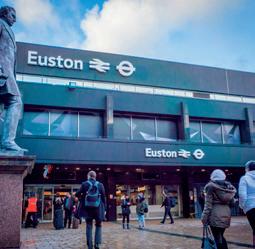

This is compared to just five stations the previous year and 43 stations two years ago.
In Scotland, Glasgow Central remained the most used station with 15.3 million entries and exits, up from 5.3 million last year, but down from 32.5 million two years ago.




Edinburgh was the second most used station with 13.6 million entries and exits and Glasgow Queen Street was the third most used station (8.5 million).
Across Wales, Cardiff Central remained the busiest station in the latest year with 7.5 million entries and exits, up from 2 million last year, but down from 12.7 million two years ago.

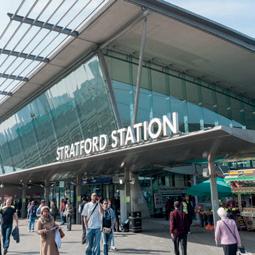

Newport was second (1.8 million) and Swansea moved up from fourth to third, with 1.5 million.
Elton and Orston in Nottinghamshire was the least used open station in the latest year, with 40 recorded entries and exits. It had the second lowest usage two years ago (April 2019 to March 2020) when it had 68 entries and exits.
There were six open stations with fewer than 100 entries and exits in the latest year:
1. Elton and Orston, Nottinghamshire (40 entries and exits)
2. Teesside Airport, Darlington (42)
3. Stanlow and Thornton, Cheshire (44)
4.Denton, Greater Manchester (50)


5.*Kirton Lindsey, North Lincolnshire (68)
6.Sugar Loaf, Powys (76)
*The weekly service from Kirton Lindsey was suspended between 1 April to 22 May 2021 and again from 1 January 2022 to 31 March 2022.
Feras Alshaker, director of planning and performance at the ORR, said: “It is heartening to see passengers return to travelling by rail following what was a difficult period for the industry during the pandemic. There’s still some way to go in order for station usage figures to return to pre-pandemic levels.
“Once again it is important to thank all those in the rail industry, who continue to work hard to help people travel safely and with confidence.”
The top ten: 1. London Waterloo 41,426,042 2. London Victoria 36,776,338 3. London Bridge 33,309,348 4. London Liverpool Street 32,165,310 5. Stratford (London) 28,182,238 6. London Paddington 23,870,510 7. London Euston 23,097,606 8. Birmingham New Street 22,682,526 9. London Kings Cross 20,476,492 10. Manchester Piccadilly 19,581,442 railbusinessdaily.com Rail Director | December 2022 | 39 Stations
Revolutionising asset optimisation with innovative new technology
“Operators can spend unnecessary resources and lose valuable train availability due to the unknown operational state of their rolling stock whilst on diagram. In particular, the status of fluid and solid levels.” That’s according to Martyn Bendall, TXM Consult’s head of engineering and part of their Engineering, Asset Management & Maintenance (EAMMS) team.
With more than 30 years of experience in the rail industry, Martyn has seen many aspects of asset optimisation change over the course of his career. But not all areas are operating at the level you would expect to see in the modern, digital age.

Martyn said: “It’s common to see recently manufactured rolling stock using either algorithms or a binary approach with hard-wired sensors to estimate fluid and solid levels. The former can prove to be inaccurate and the latter lacks granularity. This ultimately translates to trains being stood down for longer periods than necessary.
“Sand levels on trains are a good example of this inefficiency. Sanding is a key safety function on trains to improve adhesion levels between the wheel and rail interface during braking and to aid traction. The availability of sand, its condition and system function are all areas in which operators lack visibility. This raises safety concerns and leads to premature visits to the maintenance shed or the need to check and replenish on diagram – an inefficient and costly approach. It’s like driving your car without a fuel gauge – it may be possible but there is a better way.”
Digital solutions for the digital age
As part of their asset optimisation services, TXM Consult’s engineering and turnkey solutions are working with their technology partner to introduce innovative IoT (Internet of Things) technology that provides live data monitoring of fundamental train systems to remove the guesswork and keep operators ahead of the game. Martyn said: “With this approach, real-time, accurate data can be monitored, ensuring certainty of train state. This means maintenance can be optimised and
availability improved.
“The system reports live information on system state and can be set up to report by exception through an alert protocol.
humidity, and sand ejector flow rate, to understand each system’s true operational state. In addition, the system is linked with track and weather data to provide insights into performance during braking and traction, which aids in the identification of low-adhesion areas on the network. This technology allows operators to see exactly what is happening in real-time and lets them directly target areas in need of improvement, exposing a plethora of opportunities that help optimise performance and reduce sand usage, saving time and money.
Accurate data
“Clients using this new technology will benefit from accurate live data feeds and insights into actual operational state, meaning their vehicles remain in use longer and the highest safety standards are upheld. They can replace what’s needed, when needed, better provision consumables and rebalance maintenance based on real data ( condition-based) – a vital ability to possess as we move into winter and face inclement weather which puts additional strain on the railway infrastructure.”
Martyn is part of a team of senior business leaders, engineers, project managers and executive coaches with extensive UK and international experience in driving business transformation across the transit and energy sectors.
Established in 2020, TXM Consult has more than 130 specialists who have worked with operators, manufacturers, maintainers, asset owners and partners on key projects in the UK, Australia, the Middle East and North America.
This, combined with additional technology, and when linked with other data feeds, provides a holistic view of the overall asset and its interfaces. No more finger-in-the-air guesswork or analogue, labour-intensive practices such as sending teams out trackside to check sandboxes.
“Digital monitoring via sensor technology provides a live status of sand levels, temperature,
TXM Consult is part of the TXM Group, a global organisation that provides consultancy and resourcing solutions worldwide, specialising in engineering, healthcare, and technology. Founded in 2005 and headquartered in the UK, it has become a £220 million-turnover business with a global workforce of over 300 employees across Europe, the Middle East, Africa, Australasia, and North America.
train
Martyn Bendall, from TXM Consult, outlines how technology can be used to increase safety, reduce costs, and boost efficiency
It’s common to see recently manufactured rolling stock using either algorithms or a binary approach with hard-wired sensors to estimate fluid and solid levels
www.txmconsult.com 40 | Rail Director | December 2022 railbusinessdaily.com Feature Industry Spotlight Advertorial
For more details, visit https://
Instrumentation, test, and measurement capability and support when you need it
We’re proud of our ability to fully integrate into our customers teams and work with them to create genuine partnerships with the focus on developing a solution and providing them with the test data they need to enable them to progress.
As experts in our field of engineering, we thrive on developing tailored solutions to solve challenges and immerse ourselves at every opportunity. We adapt, we evolve, we interrogate, but fundamentally we overcome through determination, ownership and responsible decision making.
Being there when they need us is one of the pillars of our success; we offer initial consultation within hours, we aim to deploy to understand your requirements within 24 hours and have the potential to start data gathering with our rapid response capability for rolling stock, infrastructure, and engineering projects within 48 hours.
Alongside our rapid response capability, using the latest technology and intuitive thinking, we are an integral part of new vehicle acceptance testing, vehicle modifications, testing at component level, accident investigations and service problems. Our team can facilitate commissioning, maintenance, repairs, life extension and upgrades based on a wealth of gathered test data.
We’re exploring new markets to continuously diversify our engineering skillset; the result being that our engineers gain an ever-evolving outlook on achieving solutions based on learning and experience. The benefit of our culture is that our customers are provided with a refreshing, unique and tailored service each and every time.
Pantograph and Overhead Line Equipment (OLE)
Extensive fitment and testing of instrumented pantographs have led to us being able to offer a full suite of pantograph performance
and overhead line interface testing on most manufacturers’ pantographs.
We undertake pantograph force and acceleration measurement system verification using our in-house transfer function test rig.
In addition, our on-track testing capability extends to pantograph aerodynamic tuning and operational augment testing, true contact force OLE interaction and performance testing, new and existing OLE proving with data and report provision to a standard that can support System and Construction conformance verification.
Our measurement systems, developed and refined over many years in the field, enable us to reliably monitor and record pantograph head contact forces and accelerations on multiple pantographs simultaneously and at operating speeds up to the maximum of the vehicle.
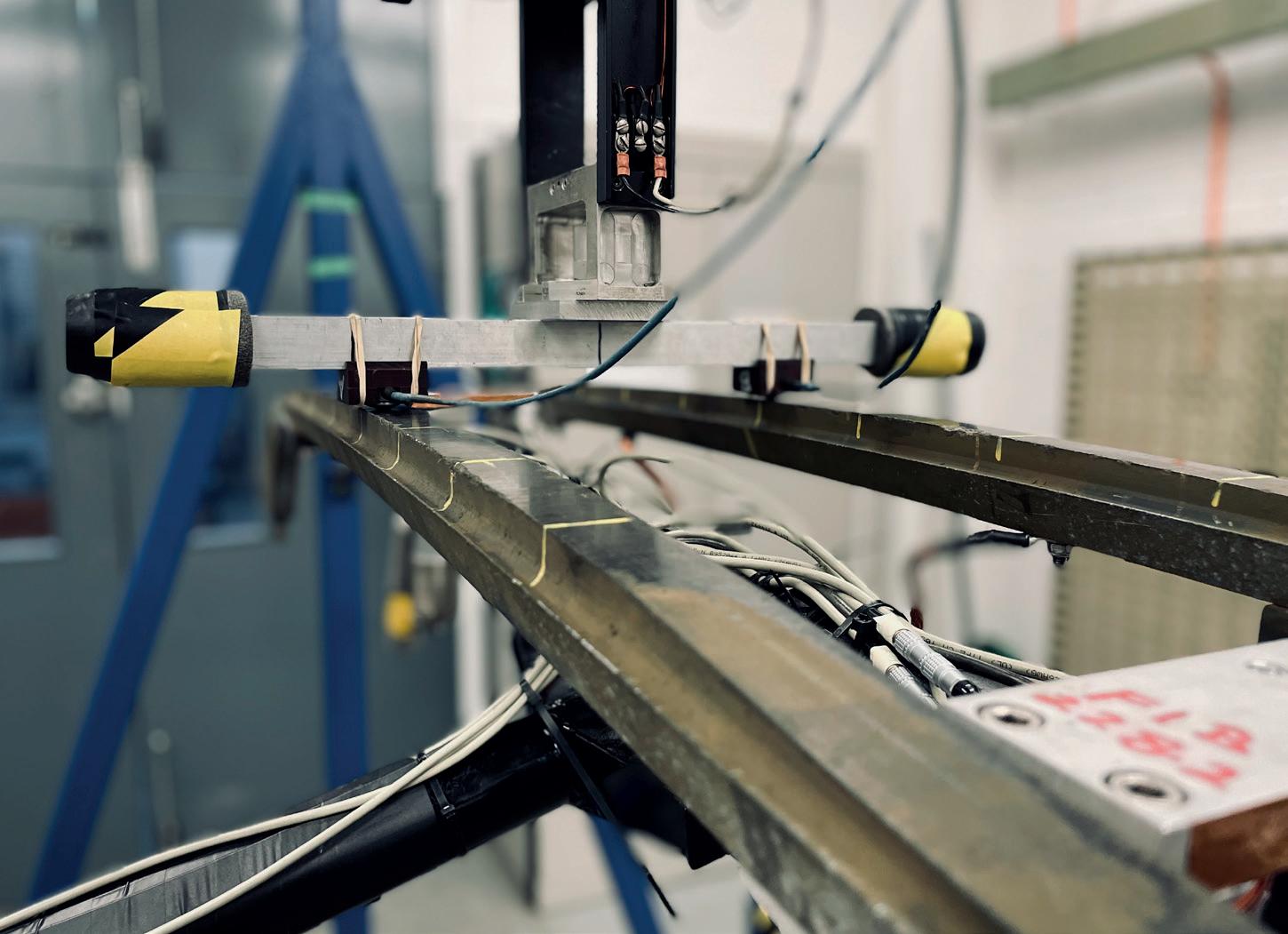
Data channels are recorded alongside realtime video signals and vehicle speed and GPS location channels, allowing anomalies to be examined and pin-pointed accurately.
Engineering Test and Measurement Services
In addition to pantograph and OLE, we have a wide range of vehicle and infrastructure testing and measurement capability including acceleration, displacement, temperature, pressure, strain, force, voltage, current, and electrical interference to name a few.
Our test installation allows real-world data to be obtained via:
Attended and unattended installation on dedicated test vehicles
Attended and unattended installations on vehicles running in passenger-carrying services
Attended and unattended installations on in-service freight vehicles
Unattended systems fitted to operational infrastructure.
Visit
Ensuring their customer’s success is the primary focus of the Instrumentation,
Test and Measurement team within the Engineering Services department at Serco Rail Technical Services
railbusinessdaily.com Rail Director | December 2022 | 41 Feature Industry Spotlight Advertorial
https://http.serco.com/ srts for more details
Decarbonisation of rail freight traction – what needs to be done to accelerate change

The UK has committed to achieving net zero greenhouse gas emissions by 2050. Rail is a low-carbon transport mode, accounting for only 1.4 per cent(1) of total transport emissions. The railway’s contribution to this target is set out in the Department for Transport, ‘Transport Decarbonisation Plan’ published in July 2021. The sector’s commitment to decarbonising is outlined below:
‘We will deliver a net zero rail network by 2050, with sustained carbon reductions in rail along the way. Our ambition is to remove all diesel-only trains (passenger and freight) from the network by 2040’. (Transport Decarbonisation Plan July 2021.)
Scotland has a more ambitious target to phase out all diesel trains by 2035.
Sustainable Rail Strategy
The decarbonisation target sits within a broader Sustainable Rail Strategy (SRS), which is under development. It will contain the sustainability elements required for the Whole Industry Strategic Plan (WISP). A useful SRS Prototype document has been developed as a roadmap and is an important step on the journey towards a definitive whole-industry strategy for sustainable rail, across both environmental and social topics. In terms of net zero carbon rail, it discusses traction decarbonisation targets but has little detail on how they are to be achieved. The SRS Prototype document is intended to be finalised in December 2022.
This article focuses on decarbonisation of rail freight traffic, and the particular challenges faced by the sector in determining the next steps in delivering its contribution to the target. Freight moved by rail results in 76 per cent (2) less carbon generation than freight transferred by road. However, only nine per cent of freight is moved by rail in the UK. Any modal shift from road to rail freight would
likely have a significant environmental benefit. Rail freight traction emissions (2019 figures) represent 17 per cent (2) of total rail traction emissions.
Widespread electrification of the network is the most effective method of supplying zerocarbon energy, at least at the point of use.
Unfortunately, the majority(3) (62 per cent) of the UK’s railway network is non-electrified. The industry has been focusing on methods to provide alternatives to diesel traction, which is currently used on non-electrified routes. Before focusing on rail freight, it is useful to provide a short overview of initiatives in other rail sectors, such as the passenger sector.
Decarbonisation of rail traction
The passenger sector is progressing a number of projects to replace diesel traction with zeroemission alternatives.
The Alstom Coradia iLint launched in June 2021 in Germany, and is the world’s first and only operational passenger train powered by hydrogen fuel cells. This completely emissionfree train is quiet and emits only water vapor. A UK version is under development.
Hugh
O’Neill, senior consultant
at Frazer-Nash Consultancy, writes
about future pathways to decarbonise rail freight
42 | Rail Director | December 2022 railbusinessdaily.com Freight
We will deliver a net zero rail network by 2050, with sustained carbon reductions in rail along the way
The UK train leasing company Porterbrook, along with the University of Birmingham, have developed HydroFLEX, which is the UK’s first hydrogen-ready passenger train. Based on a Class 319 multiple unit, it can operate under electric, battery, and hydrogen power, making it the world’s first ‘tri-mode’ train. Up to 277kg of hydrogen fuel is safely contained aboard HydroFLEX, in 36 high-pressure tanks. Porterbrook has also had a class 350 EMU converted into BatteryFLEX, a battery/electric bi-mode. Energy and power demands have been modelled for routes such as the Windermere branch, where a version of BatteryFLEX would eliminate diesel use on non-electrified lines and maintain the ‘beneath the wires’ capability of these highly reliable trains.
More sustainable Angel Trains, as part of their commitment to making UK rail more sustainable, is converting a Class 165 Diesel Multiple Unit (DMU) to a low-emission hybrid drive with innovative selfcharging battery technology, in collaboration with Chiltern Railways, UK-based electric vehicles specialist Magtec, and maintenance experts Loram. In a separate 2021 project, Angel Trains and Hitachi Rail created an intercity battery hybrid train on TransPennine Express, replacing some diesel engines with batteries.
Eversholt Rail and Hitachi are in the advanced stages of designing and engineering an electricdiesel-battery (tri-mode) train, with plans to trial on a Great Western Railway (GWR) Class 802 train in 2022.
UK manufacturer Vivarail has converted D78 London Underground rolling stock into
Class 230 battery and battery hybrid trains for metro, commuter, and regional applications. The trains can use battery bank infrastructure to store off-peak power from renewable sources. This seamless recharging capability can give the Class 230 unlimited range.
ScotRail is planning to buy 150 new electric, battery, or hydrogen-powered trains to replace two-thirds of its fleet over the next 13 years. As announced by Transport Scotland in 2020, the new trains are part of the plan to phase out all of ScotRail’s diesel trains by 2035.
Decarbonisation of freight traffic
There is a large disparity in terms of the energy and power requirements for typical passenger and freight trains. A typical Class 66 freight diesel locomotive has installed power of 2.46 MW and hauls bulk commodity (4) trains, typically 2,000 – 2,500 tonnes, at speeds up to 60mph, or intermodal trains, typically 800 tonnes, at speeds up to 75mph. Some electric locomotives capable of hauling freight trains, for example the Brush Class 92, have installed power up to 5 MW.

At face value, this is significantly greater than a typical passenger train, but the usage profile must also be considered. A typical 115tonne 3-car multiple unit passenger train has an installed power of 1.1 MW. But the multiple unit train only intermittently calls upon this peak power (at start-up) whilst the freight train needs to draw maximum power for extended periods.
The Rail Safety and Standards Board (RSSB) developed the T1229 project, as part of the wider DECARB programme of work, to understand the power and energy demands of freight trains on typical freight corridors. This understanding will help to shape requirements for future lowcarbon freight locomotives.
T1229 ‘Low carbon freight traction and routes to deployment’
The T1229 project, awarded by RSSB to FrazerNash in 2021, has developed a model of traction power and energy requirements for freight corridors. The project was prompted by the intermittent nature of UK mainline electrification. Of the mainline network under the management of Network Rail, approximately 38 per cent of route km is electrified(3). Major freight trunk routes are intermittently electrified or mainly nonelectrified. For example, Southampton to Trafford Park, a key route for intermodal traffic, is a mix of third rail (14 per cent), non-electrified (37 per cent) and overhead electrified (49 per cent).
Another key intermodal route is Felixstowe to the WCML(5) (West Coast Main Line) at Nuneaton via Peterborough and Leicester, which is mainly non-electrified. Important aggregate flows are from the Peak District quarries to London; the northern parts of the route are non-electrified.
Some electric locomotives capable of hauling freight trains, for example the Brush Class 92, have installed power up to 5 MW
Image: Direct Rail services
railbusinessdaily.com Rail Director | December 2022 | 43 Freight
Figure 1: Class 66 freight locomotive
There is a firm scheme underway to electrify just one part-route (Kettering to Market Harborough) and no schemes even in the planning stage for the other freight routes.
Even on electrified routes, Class 66 has been the ubiquitous form of motive power for freight. The existing Class 68 electric/diesel and new Class 93 electric/diesel/battery under construction by Stadler will provide a useful lower-CO2 alternative for intermodal traffic.
The T1229 project seeks to answer the questions: what are the energy gaps for a freight train travelling on intermittently electrified infrastructure? What onboard energy would a future low-carbon locomotive require to bridge those gaps?
T1229 used an agent-based physics model of a Class 66 loco (Figure 1) hauling 10×IKA ‘megafret’ intermodal wagons (Figure 2) or 22×JNA box-wagons, carrying aggregate on five routes which are representative of the GB freight network.
The routes were carefully chosen, in conjunction with a project steering group, to cater for different traffic types. They were to be a mix of overhead electrified, third rail, and non-electrified power sources, as well as a mix of gradients and level track.
The geometric route data (gradients, curve data, speed profile etc) was provided by our partners, Lampada,(6) from their industryleading NR+ software tool. Scheduling data (typical waiting times, diversionary routing, TIPLOCs(7) (timing point locations), etc) was obtained from TRUST(8)
Although the model used a Class 66 locomotive, it was configured to model regenerative and non-regenerative energy recovery (for example into batteries, should they be fitted).
The model calculated the power required to maintain train speed on gradients, taking into account curve resistance, and included different driver behaviours, for example defensive driving policies. As well as energy and power calculations, the model estimated CO2, PM2.5, PM10 and NOx emissions using the outputs of RSSB project T1187. The model was extensively validated using OTMR(9) (on training monitoring and recording) data provided by our partners, Direct Rail Services (DRS), as well as data kindly supplied by Freightliner and GBRf (Great British Railfreight)(10)
The T1229 project considered a range of scenarios, such as increasing the trailing load by 50 per cent on both the intermodal and aggregate trains, and increasing the permissible speed of the intermodal train to 90mph, with a view to modelling future freight growth. Where there are limitations on the existing electrification infrastructure, for example power-draw limitations from third rail, these were included.
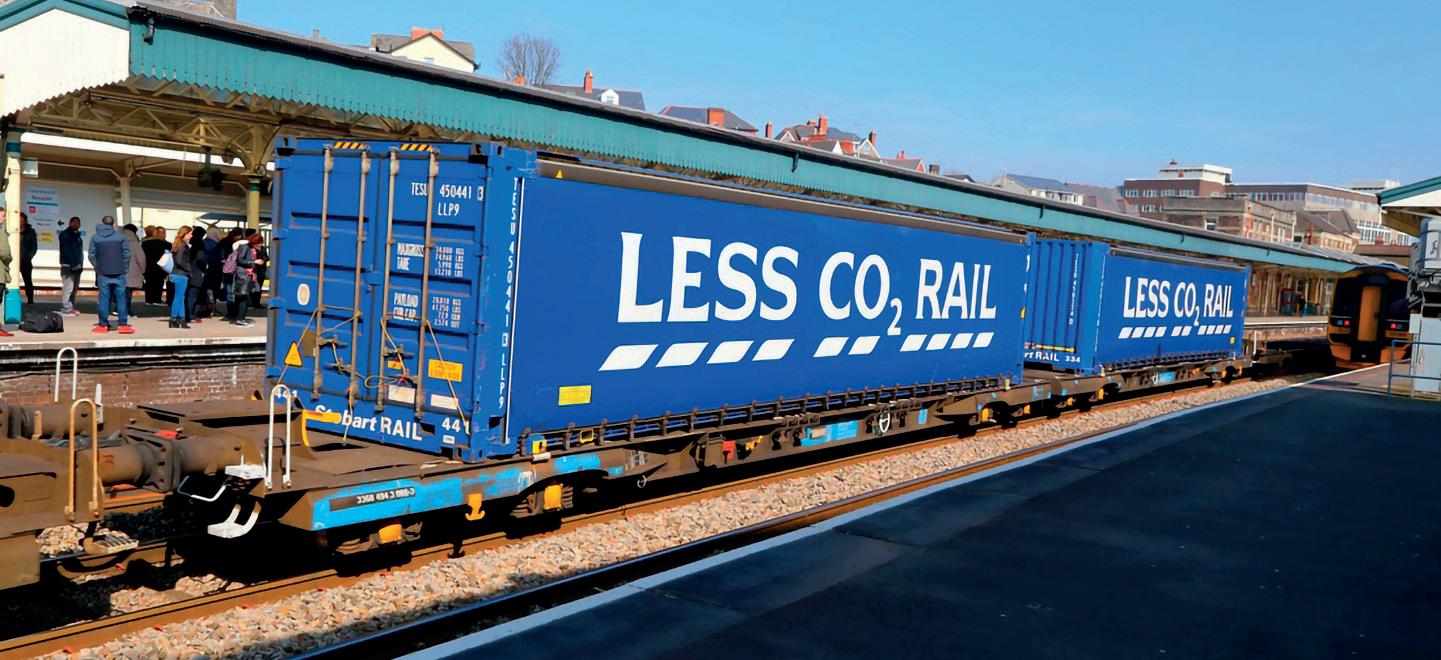
On-board energy requirements T1229 showed that the onboard energy requirements to bridge gaps in routes between
electrified sections, are considerable. As an example, for a comparatively short nonelectrified segment of the Southampton to Trafford Park route between Didcot North and Coventry, length 106.9km, the energy required by the intermodal train was of the order of 2,000 kWh. About 25 per cent of that (500 kWh) was energy depleted by braking the train, therefore some of it could be potentially recoverable(11) through regeneration.
The energy demand for the heavier aggregate train was predicted to be higher, as expected. On the Tunstead to Thorney Mill route, the initial 177.2km section from Tunstead to Corby is non-electrified. The onboard energy required for a future low-carbon locomotive is about 4,400 kWh as shown in Figure 3; up to 3,000 kWh of that is energy depleted by braking the train.
Future traction options
The two most discussed future traction options, in the absence of further electrification, are hydrogen and batteries. Hydrogen could be burnt in a modified internal combustion engine; JCB and others are exploring this technology, although not for rail applications. Hydrogen is more likely to be used in a fuel cell, in conjunction with onboard batteries for energy regeneration purposes. Hydrogen has a higher gravimetric energy density (12) than diesel, so as a rough comparison, one kilogramme of hydrogen contains approximately the same energy as about three litres of diesel.
Hydrogen typically has 33.6kWh of usable energy per kg, so a future hydrogen-powered locomotive would consume about 119kg of hydrogen on the non-electrified 177.2km section from Tunstead to Corby. For the 106.9km nonelectrified intermodal route between Didcot North and Coventry, it would consume half of that figure. No braking energy recovery is considered in these values, but it’s expected to only have a minor effect.
Image: Nathan Williamson
1,000 0 2,000 3,000 4,000 5,000 6,000 7,000 Energy used (kWh) Hend to Acton Wells (8.69km) Tunstead Sidin to Cor (177.18km) Error bars represent a 12% uncertainty in the model prediction. 55 Baseline Aggregate Train4,400 kWh S1 Baseline lntermodal S2 Longer lntermodal S3 Unscheduled lntermodal S4 90mph limit lntermodal S5 Baseline Aggregate S6 Longer Aggregate Fogure 3: Route 4 energy demand along each prolonged section without electrification 44 | Rail Director | December 2022 railbusinessdaily.com Freight
Figure 2: IKA Megafret Intermodal Wagon
A future hydrogen freight loco would need appropriately scaled fuel cells, energy storage batteries when regeneration is taking place, sufficient hydrogen storage (probably 500kg in 65 storage reservoirs, assuming they are the same size as used in the HydroFLEX), and current collector equipment to run ‘under the wires’.
It is unclear if all this equipment could be mounted on a single locomotive, or whether a slave unit or tender would be required.
Turning now to batteries to power a freight locomotive, this seems to be less credible because of the markedly lower energy density compared to diesel or hydrogen. As an illustration, the battery pack in a Tesla long-range SUV automobile has a battery capacity of 100 kWh. A future battery-powered locomotive would need >50 Tesla battery packs just to bridge the non-electrified 177.2km section, from Tunstead to Corby, and this assumes that they are fully charged on entry into the section and are 20 per cent residually charged on exit.
For the 106.9km non-electrified intermodal route between Didcot North and Coventry, about 25 battery packs would be required. Given that each battery pack weighs 480kg, and has a volume of 0.4m3, the mass and volume of batteries could be 24 tonnes and 20m3 respectively. These could not be accommodated on the locomotive itself, given that it would require full-power performance ‘under the wires’ with a transformer and power equipment, meaning that a ‘battery tender’ would be required. It may be possible to recharge the batteries once the locomotive goes ‘under the wires’ to maximise operational flexibility.
RSSB is considering using the outputs of T1229 to inform the T1268 research project on future freight motive power, and it is clear that significant technical and operational challenges lie ahead.
(1)
What needs to be done to accelerate change
There is a need for a strategic rail body to direct policy in this area, and to incentivise initiatives for the freight sector to decarbonise its traction. Great British Railways (GBR) could fulfil this role, although its terms of reference are still under development. Given the recent announcement that the development of GBR is on hold, there is not a lot of ground for optimism that much will change in the short to medium term.
Electrification is the most effective way of decarbonising railway traction, certainly at point of use. The most notable electrification schemes(13) can be classified as ‘in delivery’ or ‘funding approved’ as follows:
In delivery
Manchester Victoria to Stalybridge – piling work complete
Glasgow Central to Barrhead and East Kilbride
Kettering and Market Harborough Haymarket to Dalmeny
Funding approved: Wigan North- Western to Lostock Junction (Bolton)
York to Church Fenton and Huddersfield to Leeds
Whilst the above schemes are laudable, the scope of electrification needs to be greatly increased if the railway’s commitment to decarbonising is to be met. In Switzerland, 100% of the network is electrified; which needs to be the goal of the UK network.
The RSSB is running a number of sister projects to T1229 under the DECARB programme to calculate the whole-system, whole-life carbon footprint of the railway and its supply chain. This will enable it to set achievable targets to decarbonise and to consider a framework
Source: https://dataportal.orr.gov.uk/media/1993/rail-emissions-2020-21.pdf, valid for 2019. In comparison 9.5 per cent of all passenger kilometres were made using rail.
(2) Source: https://assets.publishing.service.gov.uk/government/uploads/system/uploads/attachment_data/file/552492/railfreight-strategy.pdf
(3)
Source: ORR publication Rail infrastructure and assets April 2021 to March 2022
(4) Ore, aggregates, crushed stone, ballast
(5) West Coast Main Line – the electrified route between London, Birmingham, Manchester, Liverpool and Glasgow.
(6) The commercial arm of the University of Hull.
(7) Timing Point Locations.
(8) TRUST (Train Running Under System TOPS) is a Network Rail computer system used for monitoring the progress of trains and tracking delays on Great Britain’s rail network.
(9) On Train Monitoring and Recording.
(10) GB Railfreight – a major freight train operator.
(11) With current technology, only the locomotive braking energy could potentially be recovered. The wagon braking energy is lost in friction braking. For an 800 tonne intermodal train being hauled by a 129 tonne locomotive, only about 14 per cent of braking energy may be available for regeneration, assuming each vehicle contributes equally to the train braking, and that the locomotive does not use its friction brakes.
(12) Per unit of mass.
(13) Not including the HS2 project
of policy, regulation, standards, funding and contractual mechanisms to incentivise decarbonisation of the railway. Example projects are T1197, T1198, T1201, T1228, T1237 and others. However, the framework needs the oversight of a strategic body, such as GBR, and the current uncertainty is a concern.
RSSB project T1214 looked at DC (third rail) electrification infill schemes, mainly to remove diesel passenger trains from parts of the third rail network in the South of England. There could be some small benefit for freight trains, although freight traffic on some of the non-electrified sections proposed for infill is minimal. The only existing locomotives suitable for hauling freight on the third rail network are the Class 92, and a small number of Class 73 electro-diesel locomotives. From a carbon perspective, DC electrification using a third rail is better than non-electrified, but a long-term plan to replace third rail with OLE 14 is needed. It is not known if the WISP will consider this topic.
Usable solution
One feature of the existing freight railway that shows the industry in a negative light is the operation of diesel locomotives under the wires and on 3rd rail. DRS has introduced the Class 88 dual mode locomotive for use predominantly ‘under the wires’, but with a diesel engine to haul trains for the ‘last mile’ to non-electrified freight sidings. The new Class 93 electric/diesel/battery locomotive under construction from Stadler provides a more usable solution on routes with a higher proportion of non-electrified sections. These locomotives are most suitable for intermodal trains where the trailing load does not exceed 1,000 tonnes. Developing a dual mode heavy freight locomotive, whilst retaining the full power diesel engine of a Class 66 but utilising a pantograph for use ‘under the wires’ would be a significant technical challenge, because the transformer and power equipment would probably have to be mounted on a separate vehicle due to space and axleload constraints on the locomotive.
One way to encourage modal shift from road to rail freight would be to build (or reinstate) rail connections to factories, chemical plants, and distribution centres in order to minimise the ‘last mile’ freight conveyance by road trucks.
I hope that this article will start to throw some light on future pathways to decarbonisation of rail freight. Although there are undoubted challenges, the end goal is worth the effort.
railbusinessdaily.com Rail Director | December 2022 | 45 Freight
Tackling the autumn adhesion problem

Leaves on the line may be a bit of a joke for the mainstream media, but it is a serious problem for the railway industry. Lack of adhesion can lead to trains slipping and sliding which causes delays to journeys, as well as situations that can be far more serious.
When autumn arrives, thousands of tonnes of leaves fall onto the railway. They stick to damp rails and passing trains crush them into a thin, hard layer on the rail which, a lot like black ice on the road, can affect braking and acceleration.
On 31st October 2021, two passenger trains travelling on converging lines collided at Fisherton tunnel in Salisbury. Fifteen people were taken to hospital and one of the train drivers suffered life changing injuries. The initial report into the incident said low adhesion due to railhead contamination was a significant contributing factor to the accident.
This autumn, Network Rail and South Western Railway (SWR) strengthened their fight against leaves on the line, working closely on a wide-range of measures. One of which is Network Rail deploying a fleet of leaf-busting trains with high-power water jets to blast away the leaf mulch and this year they have been running those services at higher frequencies so key parts of the railway are treated twice every 24 hours.
Improved working
As well as other mitigations, including working closely with drivers, signallers and mobile operation managers (MOMs) to identify high risk sites and trialling new technology to monitor the wheel slip and slide protection system, Network Rail is working with SWR and One Big Circle to trial camera technology to collect images of the rail. The data collected from both treatment and passenger trains is being used to develop artificial intelligence that will monitor that data and trigger treatment in areas that need extra attention.
South Western Railway’s managing director Claire Mann said: “The safety of our customers and colleagues is our number one priority, so we are constantly reviewing and updating our autumn action plans to embrace new technology – such as One Big Circle’s AIVR cameras on treatment trains - to safely keep our customers moving.
“Every autumn, leaves on the line cause real challenges for the railway and we’re working tirelessly in partnership with Network Rail to mitigate the problems they cause”.
This innovative system allows railway workers
to dip into a live map of assets, images and conditions. Being able to access data that gives a snapshot of an event in real-time is incredibly valuable in safety-critical industries like rail. It is this which can be used in the industry’s fight against Mother Nature
The Salisbury Low Adhesion project was funded through Network Rail’s Research & Development (R&D) portfolio. The project aims to improve the safety of staff by reducing the need to go lineside to inspect the condition of the rail head and help reduce the risk of what happened at Salisbury reoccurring.

‘Can we accurately confirm the levels of contamination on the railhead? And can we do it at a frequency that’s better than in-person inspection at the moment?’
46 | Rail Director | December 2022 railbusinessdaily.com Feature Industry Spotlight Advertorial
This autumn, Network Rail and South Western Railway have been strengthening their fight against leaves using high definition cameras from One Big Circle
Keren Moxey, programme manager, R&D said: “In Network Rail we are finding ways to make the railway safer and be more efficient and are looking to find new solutions to existing problems. Research and development along with innovation is critical to this. The work we do addresses a wide range of challenges including how to make the railway safer and more affordable, and this project is a great example of this work.”
Network Rail Senior Innovation Engineer Wayne Cherry has been working with One Big Circle and the concept of AIVR (Automated Intelligent Video Review) cameras since its first technical trial in 2019 and has seen it rolled out across large parts of the organisation.
Wayne said: “This technology uses forward facing video, thermal, overhead and track imagery, combined with machine learning, to give us a real time insight into the condition of the track. The challenges faced in Salisbury gave us even greater determination to develop the technology further. Being able to inspect the railhead, show events, anomalies and inconsistencies that wouldn’t be visible to the naked eye makes a huge difference in our ability to monitor the track remotely and safely.”

The video technology transmits data to the cloud from the train in rapid time and enables stakeholders to study, automate and provide more insight into the data collected. The system can pull out and highlight certain pieces of data that are not always seen during a manual review and this also allows Network Rail to reduce the number of manual checks, thereby further increasing safety.
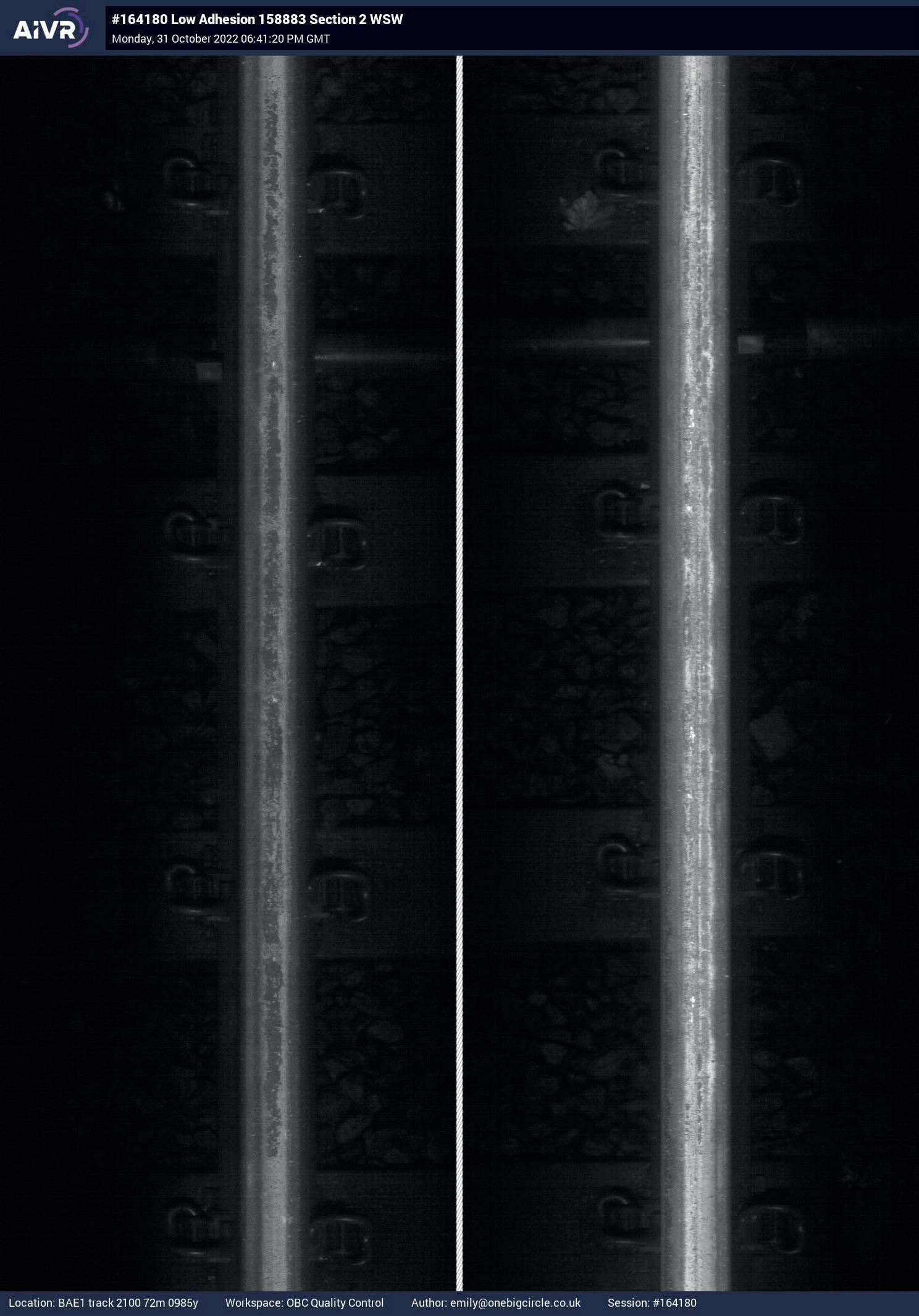
Better technology
Network Rail programme engineer manager for Intelligent Infrastructure, Stephen Moore, explains that their current system, which monitors track circuits, can report on suspected contamination but requires manual confirmation. He continues; “When a contamination report is received there is always a suspicion that there’s something on the railhead and, in the autumn, it is assumed that the problem is leaf related. Previously, the only way to confirm this was to send someone to physically check the location. This goes against Network Rail’s drive to improve safety by reducing the amount of people needing to go trackside.”
Network Rail has recently introduced a Class 153 single-car diesel multiple unit (DMU) to undertake switches and crossings (S&C) inspections with technology supplied by Bristolbased SME One Big Circle. This was completed
using forward facing cameras fitted to the cab of the DMU. The successful outcomes from this trial were redeployed to the railhead monitoring trial.
railbusinessdaily.com Rail Director | December 2022 | 47 Feature Industry Spotlight Advertorial
For the autumn trials, the cameras were fitted underneath the bodyshell of two 158-diesel SWR trains and one of Network Rail’s leaf-busting trains.
The system has been designed to be used at high-speed and whilst the SWR fleet is limited to 90mph, it could be used at higher speeds elsewhere on Network Rail’s infrastructure should the trial prove successful.
There are two cameras per train, with each one pointed directly at each of the rails, and they operate independently, providing high resolution footage of the rails. A forward-facing camera is also fitted to give environmental context of the rail corridor and can be used to understand weather, conditions and locations.
Stephen explains: “One of the key drivers as a success criterion for the end of the year was, can we accurately confirm the levels of contamination on the railhead? And can we do it at a frequency that’s better and safer than in-person inspection at the moment?”
He continues, “There are lots of issues that affect the current methods including the time available; some inspections are only undertaken weekly, for example, whilst high risk areas may be two or three times a week.
“What we’re able to do with this is, even if we only send one train out once a day, is have a better frequency than what we’re doing currently, and people don’t have to go near the track which brings huge safety benefits,” added Steven.
A sensible solution
The technology has also been fitted to a Network Rail Multi-Purpose Vehicle (MPV) that is operating on railhead treatment circuits in the Wessex region.
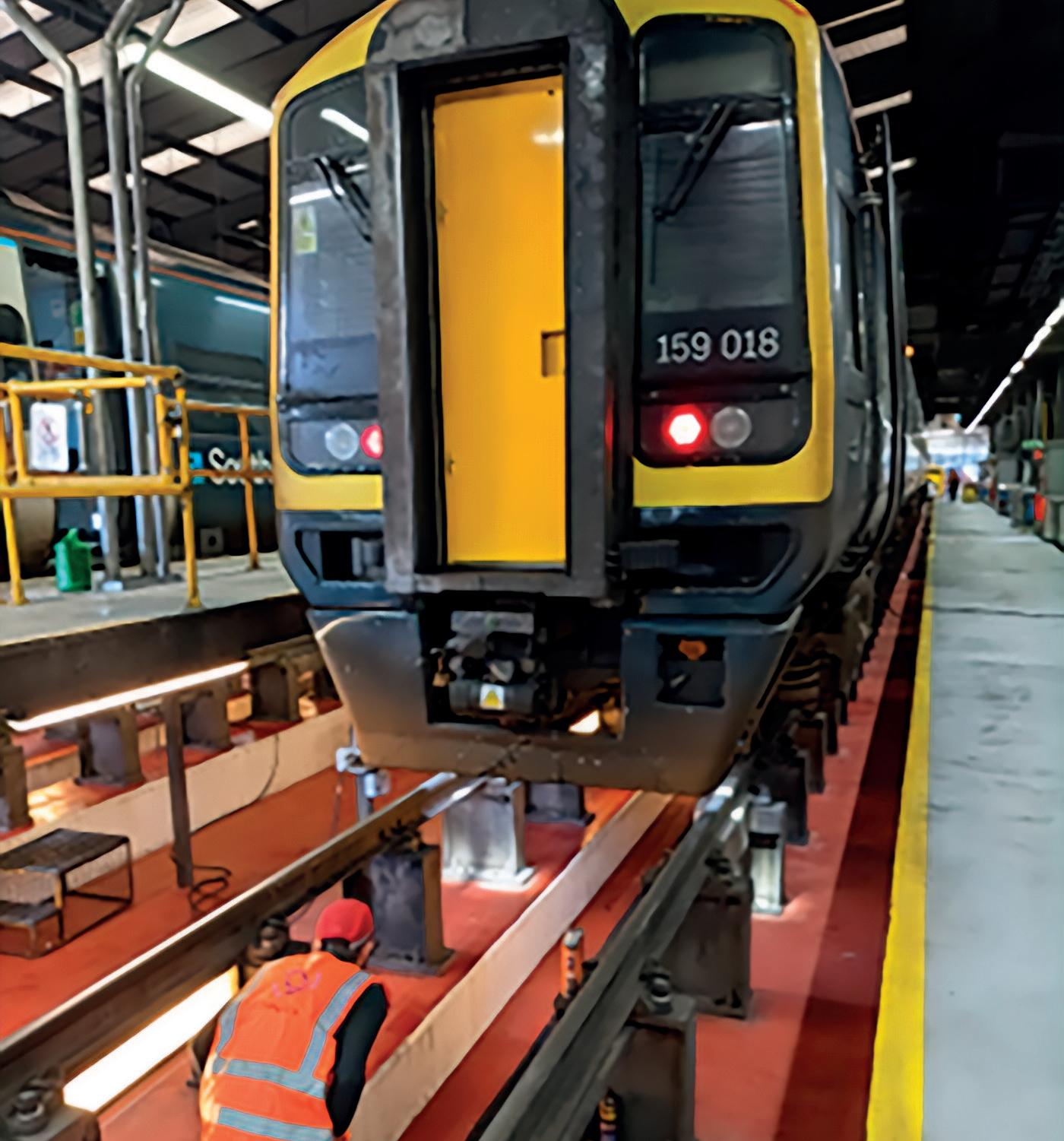
Wayne explains the thinking behind this: “The reason we chose to fit it on the MPV too is because we thought if this works it probably makes more sense to fit it on the MPV fleet. If we fit it onto our six MPVs on Wessex that would cover the whole route, rather than the passenger trains that would only cover the Salisbury area.”
He says that if they are all fitted across the entire network then there is almost real-time monitoring of the railway.
Currently the train and MPV are sent out on standard schedules on standard routes. Once the data is captured it is transmitted to the AIVR Cloud, developed by One Big Circle and is then reviewed straightaway online in the AIVR Dashboard by the appropriate stakeholders.
The camera can show where the contamination is located and another can show if it has been cleared. Previously that could only
have been done by sending a MOM to physically complete the inspection.
Stephen explains: “One of the key things that we’ve been working with One Big Circle on is that we’re only going to be able to determine degradation rates if we can compare one thing to another, so it’s all well and good being able to look at something and say we have contamination, but it’s even better if we can go: ‘yesterday this is what the rail looked like, today it’s this and tomorrow it will look like this.’ It gets bad really quickly.”
Prior to the start of the trial, data was fed into the system as part of the autumn preparation, with all the high risk areas identified. One Big Circle was able to integrate that locational data so that trains, when passing an area, can review it and the technology immediately knows what it’s looking for. This also allows those reviewing the data to filter for a section so that several months’ data can be compared quickly.
“The game changer is the ability to see what we need to see in rapid time and in context with other data, and make decisions without needing to be on site,” says Wayne. “As an example, we’re running two sessions at the same time looking at one rail on one screen, and one on the other and
keeping them at the same point. With this system you can compare and contrast rapidly online.”
Bringing real results
The project is currently providing around 30 captures per day rather than once a week every month, with the imagery being used to build a robust Machine Learning model that will automatically identify and alert areas of concern. As this autumn passes and we move into winter then spring, data will continue to be collected so comparative seasonal data can be analysed and other impacts on the railhead can be identified.
Wayne concludes: “Within months of the incident in Salisbury, Network Rail, SWR and the supply chain had a live trial up and running bringing in real results for the subsequent autumn period. The speed of this collaboration and the engagement of everyone involved will improve performance, increase safety and reduce incidence of low adhesion.”
This trial offers the opportunity to really improve train performance and safety on the railways and shows the valuable role that data and machine learning can have for the industry.
48 | Rail Director | December 2022 railbusinessdaily.com Feature Industry Spotlight Advertorial









0845 838 7178 enquiries@onebigcircle.co.uk www.aivr.video
Go Thermal
Focus
Users can access digital tools which allow them to locate, measure, annotate, and analyse images whilst also carrying out planning, sighting, reporting, and sharing within and across teams and groups.
The multi-award-winning AIVR system provides digital inspection capability, enabling experts from multiple disciplines to monitor the rail and lineside environment remotely and safely. The AIVR systems collect and transmit a range of data - from Forward Facing Video, Thermal, Overhead to Line Scanning and IR Data can be integrated with a range of fault detection systems or have Machine Learning applied to automatically detect assets and anomalies.
Powered by
Providing the tools to assist in the delivery of highly complex operations
KMT is a key player in the rail industry when it comes to assisting businesses who manufacture equipment and rolling stock. Technical director Adrian Degg puts it down to engineering competence in abundance and a team of enthusiastic people keen to see the business succeed.
“KMT has market-leading capability in bespoke engineering from a design and practical perspective,” he said. “We specialise in providing precision assembly-line jigs and machines for the rail industry and most notably we have built and installed bespoke production line machinery for leading train OEMs (original equipment manufacturer) in the UK.”
Bespoke engineering
Based in Cheadle, Staffordshire, KMT has a strong reputation for providing bespoke machinery and engineering services to major manufacturers. The business recently installed custom production machinery to support the rail manufacturing operations of Alstom and Hitachi Rail.

“We have rapidly built a reputation as the go-to machine specialist for the rail industry,” said Adrian. “We thrive in providing turnkey engineering solutions, offering design, prototyping, testing, manufacturing, fabrication, installation and maintenance services.
“Our full electromechanical engineering capability ensures that all aspects of machines, from frames to control systems, can be designed and delivered in-house.”
A popular KMT innovation is their SmartLine Jig, designed to allow welding, assembly and preparation of rolling stock as part of a lean production flow. Onboard hydraulics, custom fixtures and controls allow for multiple processes to be carried out with a reduced footprint.
This maximises production efficiency and minimises the movement of parts and personnel. The jigs are enabling rail OEMs to follow the lead of the automotive industry in implementing lean production strategies.
“KMT has supported the production of highspeed trains at Hitachi Rail’s Newton Aycliffe assembly plant by providing custom-built SmartLine jigs,” said Adrian. “The custom jigs
have been supporting the fabrication, welding, finishing and inspection of rolling stock.
“The SmartLine jigs produced by KMT for this project are entirely bespoke, designed to accommodate specific train models manufactured by Hitachi Rail. Highly automated and operated via custom hydraulics, the jigs allow fabrication, welding, finishing and inspection processes to be condensed within one area of the production line.
As well as delivering new machines, KMT also specialises in machine refurbishment and re-building services. If customers require a legacy machine to be reproduced, the engineers at KMT can create one to modern standards while increasing efficiency and reliability. As an example the team recently reverse engineered a welding gantry for the manufacture of train underframes and roofs for Alstom, ensuring it could be integrated into the existing production line.
“We have supplied a wide range of jigs and fixtures to support UK rail production and building bespoke machines is an integral part of the service,” added Adrian. “Operator interfaces and software can even be designed to match other machines onsite to ensure operator familiarity.
“The jigs hold key subassemblies, such as the floor, sides and roof, in position for this work. Consequently, efficiency is improved and available space on the line maximised, helping to boost productivity. Furthermore, we provide on-site technical and maintenance support to Hitachi Rail around-the-clock, ensuring that the equipment is always running at optimum efficiency and maximising productivity.”
“KMT engineers work on-site to quickly react to any requirements. We’re used to meeting the needs of leading OEMs across multiple sectors, which has greatly aided our work for the rail industry.”
A brand of the Klarius Group of companies, the business also has a proven track record in the automotive industry and more recently has also worked on high-profile projects in the construction and marine sectors.
For more for more details, visit https://kmt.tools/
KM Tools Ltd (KMT) specialises in providing precision assembly-line jigs and machines for the rail industry. Adrian Degg, technical director, explains more
We have rapidly built a reputation as the go-to machine specialist for the rail industry
50 | Rail Director | December 2022 railbusinessdaily.com Feature Industry Spotlight Advertorial

ARE YOU OVERPAYING FOR YOUR MARKETING? Get in touch with our marketing services team today phil@railbusinessdaily.com | 07947 353 914 Marketing Manager (£35k) Content Developer (£25k) Graphic Designer (£30k) Web Developer (£35k) SEO Expert (£28k) Working with RBD, you get all of this PLUS access to the most powerful media business in the UK .... THE AVERAGE MARKETING TEAM COSTS £153,000 PER ANNUM (£12,750 PER MONTH) ... For as little as £1,650 per month
‘One of the most important, creative and urgently needed projects in European rail today’
Team outlines Global Centre of Rail Excellence vision to private investors

Investors from across Europe met in London this December with the management team behind the new Global Centre of Rail Excellence (GCRE) being constructed in South Wales.
Due to open in 2025, the purpose-built GCRE facility will be a ‘one-stop shop’ for the rail industry, providing a site for world-class testing of rolling stock, infrastructure and innovative new rail technologies that will fill a strategic gap in UK and European rail.
GCRE recently launched a major new procurement process to secure private investment for the project and the management team was in the city for a ‘Meet the Buyer’ event
to brief potential investors on the project and the investment process.
The event included a presentation by the GCRE team followed by a series of one-to-one discussions with those interested in investing. A feature of the day was a series of powerful endorsements by Welsh and UK Government Ministers, as well as major figures in the rail industry.
Outlining the benefits
The day began with the chief executive of the GCRE project, Simon Jones, highlighting the main benefits of the facility. He said the UK and Europe had lacked an integrated, single-site facility to undertake world-class rail innovation.
52 | Rail Director | December 2022 railbusinessdaily.com GCRE
Having a facility like GCRE will help speed up the process of innovation across the rail industry
He said that led to significant problems across the industry including major projects being impacted by significant delays and budget overruns, caused in part by a lack of early testing and integration. He added that it forced operators to resort to inadequate, fallback options, including testing on the railway mainline.

Once constructed, the 700-hectare site for GCRE, equivalent to the size of Gibraltar, will provide a facility for international quality rail research, testing and certification. When it opens, GCRE will become the UK’s first ever net zero railway. Outline planning consent for GCRE was granted by Neath Port Talbot Council and Powys County Council in 2021.
One of the major benefits of the facility stressed by Simon Jones was its ability to fasttrack innovation in rail so new technologies and ideas can be deployed on mainline railways quicker. While the UK and Europe do have partial rolling stock testing sites, the nearest major rail infrastructure testing facility is in Colorado in the United States.
Simon Jones, CEO, GCRE, said: “GCRE represents one of the most important, creative and urgently needed projects in European rail today.
“It will support government to manage project costs much more effectively and be the UK’s first net zero railway during operations.
“Having a facility like GCRE will help speed up the process of innovation across the rail industry. Previously, new innovations have had to be tested on live railways and could take years before they are approved. With the GCRE site, we will have an integrated, world-class centre operating 24/7, which can test new technologies earlier and, crucially, give the industry greater confidence about their deployment in major projects. In turn that will help the industry better manage the costs of rail.
“Our initial investment is allowing us to buy the site and start the groundworks, as well as establishing a storage facility so income can be generated straight away.”
GCRE has signed an agreement with the University of Birmingham’s Centre for Railway Research and Education (BCRRE) to partner on R&D and innovation activities connected to the GCRE site. Jones was keen to stress that the facility will be run on open access principles, so that any company can book and test there.
Next step – finding private sector investment
The GCRE team outlined the detailed work that had been undertaken in recent years to develop the project. £50m of funding has been secured from the Welsh Government and £20m from
Endorsements
“[GCRE] could provide the robust testing assurance needed to bring a wide range of innovative rail products to market. The UK is a hub of rail innovation – we already have an impressive rail R&D and testing ecosystem. These are the great strengths that GCRE can draw on to bring something new. We in government believe such a facility will make the UK an even greater place to do business in rail. That is why my colleagues in the Welsh Government and the Department of BEIS have provided start-up funding to aid the project’s development.”
Huw Merriman, Minister of State for Transport of the UK

“I believe [GCRE] is one of the most important and innovative infrastructure projects anywhere in Europe. When it is completed and opened in 2025, this facility will plug a strategic gap in the rail industry as a way to test new ideas and new innovation on a world-class site, and help us towards a greener, integrated, and more reliable transport system that we need for tomorrow.”
Vaughan Gething, Minister for the Economy of Wales
“We all know that railways are critical to our national future. As the lead director of GBRTT, one of the key areas I am focused on is the way we look at innovation across our network. We want to foster a culture of innovation and encourage greater collaboration so that we understand and solve challenges at pace across the network and regain the reputation this industry once had. I believe when it is operational, the new GCRE facility can play an important role in that world. It will fill a strategic gap in the UK and create a world-class facility.”
Anit Chandarana, lead director, GBRTT

“We support GCRE – we are passionate about developing new technology that enables us to provide a better, safer and more cost-effective service to our passengers and freight users. The new GCRE facility, when it is built, will enable us to test infrastructure components without the need to use the mainline railway. It will allow us to test the reliability of our designs without causing delays for our customers. We are supportive and look forward to working closely as the project develops.”
Lord Peter Hendy, chair, Network Rail
the UK Government. A further £7.4m was being provided by Innovate UK for research and development activities.
The project is now taking the next step in its development with GCRE Ltd, which is currently wholly owned by the Welsh Government, seeking a joint venture partner (“Strategic Investor”) to develop and fund GCRE to completion.
The Strategic Investor will play a lead role in the project’s successful and timely implementation, along with further commercialisation of the significant GCRE opportunities on site.
Jones said that the Strategic Investor could be a single investor or a consortium of investors, who will acquire a majority shareholding in and control of GCRE Ltd. A formal procurement process has begun with the publication of a Prior Information Notice (PIN).
As part of the process, GCRE is seeking equity

investment of £330m from the private sector. A Contract Notice will be published in January, with an Invitation to Tender issued in April 2023. Once chosen, the strategic investor will take a minimum of a 51 per cent share in GCRE. The investment process will run until the early autumn of 2023.
Simon Jones said the plan had always been to work with private sector partners to seek their investment, as well as their knowledge and skills in key areas such as rail and energy, to realise the exciting GCRE vision as strategic partners.
He said that both Welsh and UK governments recognised that as a commercial venture GCRE needs private sector support to be built and become established. He said GCRE wanted to encourage partners from across the world to look at the GCRE project and see the strong investment on offer.
railbusinessdaily.com Rail Director | December 2022 | 53 GCRE
The GCRE team has been working with EY as financial adviser and Ashurst LLP as legal adviser to develop the procurement process, details of which have been published through a Prior Information Notice (PIN) on Sell to Wales.
Groundworks for the project started in December 2022 and, by the time the strategic partner has been determined and additional funding is provided, GCRE will be operating warm storage facilities, generating commercial income.
Skills sought
The GCRE project includes the construction of a facility operational 24 hours a day, seven days a week. The site will include two electrified test loops, one a 6.9km high-speed rolling stock track and the other a 4km track for heavy infrastructure testing. Further phases of investment include development of the wider commercial potential of the 700-hectare site – including the creation of a new business technology park and hotel.

Simon Jones said the investment opportunity was unique and that the GCRE team welcomed interest from investment partners with
experience in areas including rail infrastructure, energy and major projects.
Jones said: “An important part of our work will be in energy. To ensure that we meet the power needs of our customers, deliver on our net zero ambitions and harness the commercial potential of our large site, we are also keen to talk to investment partners with experience of large energy systems with an appetite to invest in decarbonising the railway and supporting the work we are doing.”
With its consultant Mott Macdonald, GCRE has investigated the potential of an energy solution, using the site to host technologies including wind turbines, solar panels, and battery energy storage facilities. Through this, the site can become more self-sustainable from an energy perspective. As a low-risk brownfield site, GCRE is well placed to link into the positive renewables planning regime set out by the Welsh Government.
Reaction
The event was accompanied by a series of high-profile endorsements for the GCRE vision from new UK Government Rail Minister Huw Merriman MP and Welsh Government Economy Minister, Vaughan Gething MS.
Senior industry figures including Lord Peter Hendy and Great British Railways lead director Anit Chandarana also provided backing for the scheme, along with other major figures from the industry.
The day then continued with a series of oneto-one conversations with the GCRE team. Chief Executive Simon Jones said the reaction had been positive:
“The one-to-one sessions were hugely positive, and we are reassured by the discussions we have had so far. We know the demand that exists for a Global Centre of Rail Excellence, and it is evident that potential investors understand that as well as the wider commercial opportunities that are available around the site.
“The energy opportunities around GCRE are some of the most interesting and significant parts of the commercial proposition and make this an attractive investment opportunity.
“We are looking for experienced partners who have relevant experience in rail operations and infrastructure, working in complex greenfield projects and in energy development. The initial talks we’ve had have been very positive and we are looking forward to working with partners to realise the ambitious vision we have set out.”
54 | Rail Director | December 2022 railbusinessdaily.com GCRE



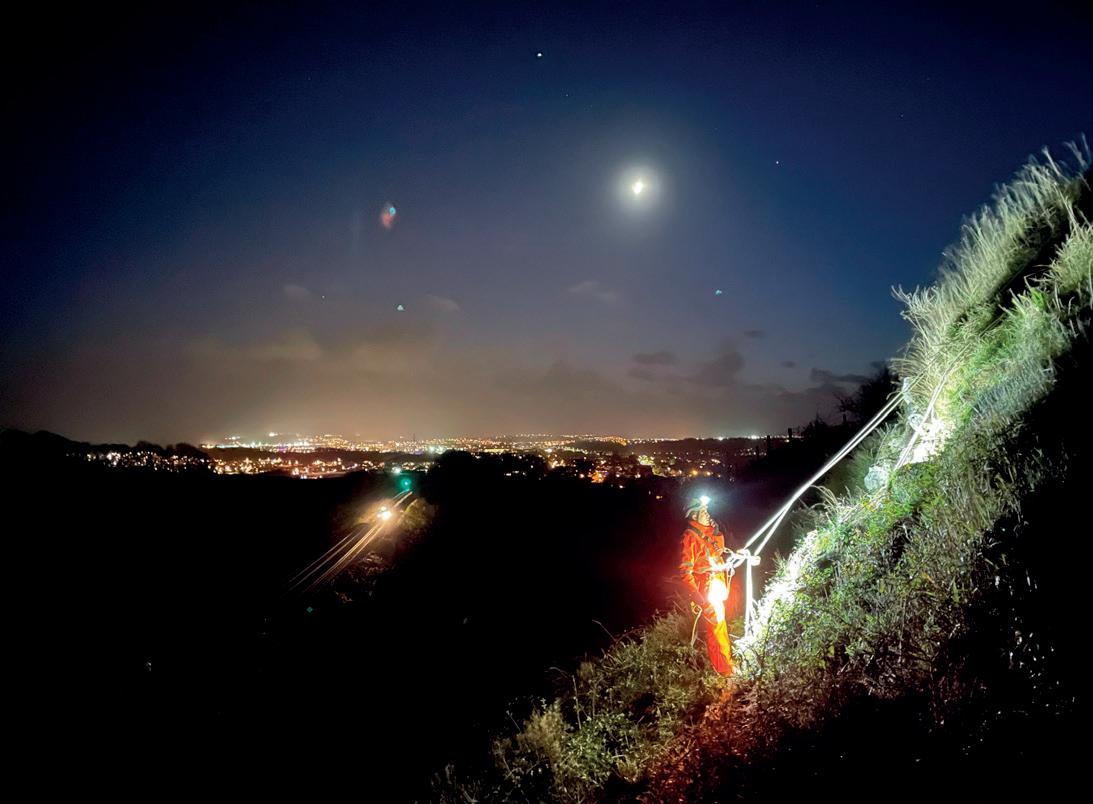




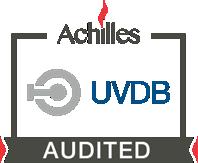

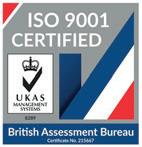


ASSET INSPECTIONS Earthworks Structures Drainage ACCESS SOLUTIONS Rope Access Underwater Drones Confined Space T: 01543 411994 E: info@geoaccess.co.uk www.geoaccess.co.uk WE COLLABORATE WE INNOVATE WE SOLVE
New Year’s Resolution: let’s embrace transparency and ditch the vacuum of uncertainty in rail
You would have thought we in the railway industry would be feeling slightly more chipper as we approach the end of 2022.
Politically, things feel a bit more stable, despite three prime ministers and three transport secretaries in the second half of 2022. The financial statement given by new Chancellor Jeremy Hunt on 17 November, whilst challenging, wasn’t as bad as many had feared. And from a railway perspective, there was confirmation that major rail projects would go ahead, including HS2 between Birmingham and Manchester, the “core” Northern Powerhouse Rail (NPR) scheme, and also East West Rail. And in early December, the £1.5 billion Midlands Rail Hub ‘Outline Business Case’ plans were lodged with the Department for Transport (DfT), to a broadly positive welcome for another major and nationally significant project.

Supportive of rail developments
Other ministers commented that the £96 billion Integrated Rail Plan for the North & Midlands was still government policy, which to the rest of us presumably means it will be delivered. And we have rail supporters in key decision-making positions: as well as Jeremy Hunt, the new Transport Secretary Mark Harper and new Rail and HS2 Minister Huw Merriman are said to be supportive of major rail developments too.
Furthermore, on 30 November, the Department for Transport (DfT) announced its Statement of Funds Available and HighLevel Output Specification (HLOS), confirming that funding on Operations, Maintenance & Renewals (OMR) in the five years of Control Period 7 (CP7, from April 2024 to March 2029) would be broadly comparable to CP6. That is, £44 billion for CP7 compared to roughly £37.5 billion in CP6, though of course inflation eats up some of that increase.
56 | Rail Director | December 2022 railbusinessdaily.com Darren Caplan
In his latest column, Railway Industry Association’s chief executive Darren Caplan says clarity of the work pipeline and working together should be the New Year’s resolution of both new ministers and rail suppliers
However, given the current tough economic circumstances, the rail supply sector should broadly welcome this, providing there is better sight, and a smooth pipeline, of upcoming work.
Still uncertainty, though So, given all this, why are we still uncertain? Well, regardless of the obvious current challenges – including the ongoing industrial relations disputes and the disappointing service levels on parts of the network - when it comes to longerterm rail infrastructure, as afore-mentioned inflation is likely to play a significant role in deciding whether future CP7 OMR funding is actually an increase or a de facto cut.
Added to this, it’s now been over three years since the publication of the Rail Network Enhancements Pipeline (RNEP), which is not included in the CP7 settlement, and which lists almost 60 projects due to be completed thanks to an initial £10 billion+ enhancements budget – but of which we still have little detail when it comes to progression.
Annual updates of enhancements have been promised since 2019, yet despite the Railway Industry Association (RIA) conducting its own research for its members showing there has actually been progress on several projects, we still remain in the dark about the Government’s intentions, and at least £1 billion has been lost from the RNEP budget already.
Those major projects require clarification too. To get the full benefits of HS2, the full scheme – including the Eastern ‘Birmingham-Leeds’ Leg – needs to be built, and the Golborne Link or its replacement needs to be delivered too, if high-speed trains are to get to Scotland in the volumes required. Similarly, on NPR, what does “core” actually mean? Will it include Bradford or not, for example? If there is agreement that the scheme is good and essential in principle, why revert to a core? On Midlands Rail Hub, with a General Election likely around May 2024, what cross-party political cover is there that this will go the distance, for a scheme which only costs around £1.5 billion, takes a mere seven-10 years to deliver, but which brings so much benefit both within and in terms of national connections to the region?
The message from the railway industry is simple: whatever the actuality about CP7 funding, enhancements, or major projects, please can policymakers tell us clearly what they are thinking? And then stick to delivering what’s been agreed. We can manage good or bad news – we just can’t manage a vacuum of uncertainty where Government announcements either aren’t made, or the industry advised of its intentions.
Knowledge and certainty of the pipeline, whatever is in the pipeline, means businesses can plan their teams and resources, decide whether and when to buy plant and machinery, and consider whether or not to take on new apprentices or train staff on required skills.
transition to Great British Railways (GBR) will continue, with the GBR Transition Team leading the way in making non-legislative changes from now. Others believe it is being kicked into the long grass for good. And others, with half an eye on a general election in 2024, reckon that the next phase of restructuring – and whether GBR goes ahead – will simply have to wait to progress depending on the outcome of the vote and who is in power subsequently. This ‘uncertainty’ has clear impacts for businesses. They want to know who will be taking key decisions and when responsibilities will change.
For SMEs, a smooth and certain pipeline – compared to uncertainty and ‘boom and bust’ in work – can be the difference between survival and going under. There are some good passages about this in the HLOS; but let’s not wait until CP7 to deliver, why can’t we improve on this now?
Suppliers positive about their businesses but not so confident about the market
A recent independent poll, commissioned this autumn by RIA and conducted by Savanta, is instructive. Over 160 rail business leaders were surveyed on confidence in the rail supply sector going forward into the New Year. Admittedly held before the Financial Statement and CP7 announcements, the survey showed that more companies (43 per cent) now expect the rail industry to contract in the coming year than expect it to grow (34 per cent), which is a reversal of sentiment compared to a year ago, when 45 per cent thought the sector would grow and 31 per cent contract. However, the businesses themselves showed they could be nimble to market conditions and could allocate their expertise and resources if they knew the state of the market. Fully 59 per cent expected their own business to grow in the next year, compared to just 13 per cent who foresee a contraction, thanks to their ability to adapt their plans and move their own resources around – whether to other sectors or other countries.
The other uncertainty in the UK is, of course, rail reform policy. There seem to be several schools of thought developing on this given that legislation is not progressing in the timescale originally envisaged. According to some, the
Related to this, that same Savanta survey showed that 77 per cent of rail suppliers considered a hiatus in rail work either quite likely or very likely over the next 12 months, for example due to uncertainty over future rail funding or further delays in rail reform. It also found that rail suppliers are most likely to respond to the continuation of this hiatus by pausing or slowing expansion plans (36 per cent of businesses surveyed), prioritising work outside of the UK (33 per cent) and increasing the cost of products and services (31 per cent).
More transparency and certainty, please People working in rail are a pretty down-toearth bunch and realise that we can’t have everything, including perfect information. However, given the long-term nature of rail; given rail customers – both passengers and freight – are clearly strongly returning to the network (a record 99 per cent of pre-Covid passenger levels was recorded on Friday 18 November, and freight returned to 100% levels in September 2021); given we now have a more stable political position; given we know UK rail can do so much good to help boost the economy, and its jobs and growth prospects, at a time of economic turbulence; given all this, surely now is the time for the Government and its new ministerial players to be as transparent as possible and simply tell us what they are thinking for the year ahead, and work with us in rail supply to deliver.
The New Year’s resolution of both new ministers and rail suppliers should simply be, let’s clarify and collaborate to provide real certainty and transparency in 2023, and then work together to deliver the work pipeline going forward – whatever that looks like.
Whether it is the scope of major projects, the RNEP, rail reform, or further developing a CP7 funding settlement from 2024 which takes realistic levels of inflation into account, the New Year could be a really positive one for rail and should not be a time for a vacuum of uncertainty in rail.
railbusinessdaily.com Rail Director | December 2022 | 57 Darren Caplan
The New Year’s resolution of both new ministers and rail suppliers should simply be, let’s clarify and deliver the work pipeline going forward –whatever that looks like
Leading the way in wagon maintenance and repair
Davis Wagon Services (DWS) is today recognised as one of the UK’s leading specialists in wagon maintenance and repair. It is a reputation that has been built over the last 15 years, since the business was created following the acquisition by WH Davis Ltd, the UK’s last remaining wagon builder.

“The objective of the acquisition was to broaden the services that WH Davis could offer to the UK rail market,” said John Hall, managing director of DWS for the last six years, but involved in the company since 2008. “This objective is still pivotal in today’s market where a collective collaboration still exists, and we have achieved sustained growth and development year on year.”
Business goals
DWS’s mission is to be a leading supplier of rail wagon maintenance, with its aims and objectives to exceed customers’ expectations in quality, reliability, delivery and cost through continuous improvements and customer interaction, while at the same time providing services that are technically and operationally superior but do not harm people or the environment.
“The last few years have been excellent and in the last 12 months we’ve increased our turnover by 17 per cent.
“We have continued to grow to meet our customers’ demands which has seen our turnover increase 283 per cent in the last 10 years,” said John. “It is important to make sure we are based where the wagons are operating. Our focal points and key objectives are always with our customers in mind, ensuring that we understand what their visions and aspirations are and how we can meet their expectations, while at the same time ensuring we are running a cost-effective business and trying to improve the environment of the industry.”
The company’s head office is located in Immingham, with nine outstations strategically positioned throughout the UK to support fleet owners with a robust, reliable and convenient service offering, spanning all areas of rail wagon maintenance and repair. As a certified Entity in Charge of Maintenance (ECM), the business can also provide lifetime management of all types of fleet vehicles, ensuring the integrity of operational, regulatory and commercial requirements and obligations.
Growing stronger
“The business has gone from strength to strength and in the last 10 years our employee numbers have increased by 94 per cent and that has led to us taking on additional wagons with additional customers, ensuring that we can provide the service they need, understanding their needs,” said John.
“To see the business from where I came in to where we are now and see it grow and develop is such a proud achievement, but it wasn’t just me, it has been a real collective team journey with lots of committed people doing a lot of incredible work.
 John Hall, managing director of DWS
John Hall, managing director of DWS
John Hall, managing director of Davis Wagon Services, discusses broadening its services and playing a wider role in ensuring the UK rail freight industry thrives
58 | Rail Director | December 2022 railbusinessdaily.com Feature Industry Spotlight Advertorial
Important to our success is being strategically positioned across the UK network
“But this is just the start. I want us to continue to develop our competency systems and to be able to develop our staff further. I also want to increase our nationwide coverage, providing the best facilities in the industry to allow for a quicker turnaround and positioning them strategically along the line of route to avoid any further mileage for the vehicles.
“As well as increasing turnover and profit, we have set specific milestones for the business to achieve in relation to customer growth that strengthens our position in the market.”
As a certified ECM, DWS can provide a comprehensive offering that not only spans a broad range of maintenance and total management services, but also ensures the safety and integrity of its customers’ fleets. Its rigorous processes and procedures comply with EU Directive 455/2011 (ROGS).
From a maintenance and repair perspective, DWS provides best-in-class maintenance and wagon repair solutions with all its depots having fully equipped mobile units able to react to situations which occur either in depots or on the main line.

It can also supply a full range of products to fit all types of rolling stock, from complex components to high-performing machine parts. The range of spare parts and components for rolling stock includes Y-series components (dampers, plungers, trunnions, pins and bushes, springs and liners), headstock arrangement (draw hooks, screw couplings and tail pins), brakes and buffers (all buffer types and buffer capsules, overhaul of air brake equipment, brake blocks and brake pads), and TF25 wheel pans and axles.
Customer focused John said: “We have 66 people in the business who are all customer-facing and passionate to put the customer at the heart of everything we do. We recognise our position in the industry and the role our expertise can play in fulfilling their aims and expectations, particularly based on more than 15 years of growing the business and taking our colleagues on that journey of developing their skills and capabilities.”
The key to DWS’s success is a passion to not just drive the business and its clients forward, but the industry as well, highlighted by John’s director role at the Rail Freight Group. He began his railway career in 1998 at the former York Carriage works at Thrall Europa, working at Marcroft Engineering in 2003, before joining DWS, initially as operations services manager.
“As an industry we need to make sure rail freight is in the conversation and that it isn’t the poor relation to the passenger industry,” added John.
“During the height of the pandemic when fewer passenger trains were running, the freight sector was far more punctual, showing how effective rail freight can be on the network when given the respect it deserves.
“It is an issue we’ve experienced at DWS and has been an area of emphasis when it comes to the retention of our staff, creating the best working conditions we can and making sure they have the opportunities to progress and develop and we are seeing improvements,” he said.
“There is a challenge across the whole rail freight industry in making it more attractive, particularly around transferring the skills of traditional maintenance methods. We must make sure that industry colleagues feel valued, and that the industry continues to develop facilities and improve the working environment.
“With the support of our customer base, we want to try and improve the working conditions and facilities for where our staff operate. Our Ferrybridge facility for Drax vehicles sets the precedent of what can be achieved in collaboration. Here a mothballed rail yard was transformed into a dedicated site to rebrand and maintain the power station’s fleet.
“We are constantly looking at how we can make our depots safer, improving the working conditions, but it all boils down to finances and working collectively with the wider industry as this has to come from a collective investment and not just one organisation. In an ideal world, the majority of the work would be done undercover, but I do feel there will always be a field-based element to maintenance. Through our continual improvement programme, we continue to put the welfare of our colleagues at the heart of everything we do.”
John also believes the rail freight industry
Hugely optimistic
“It goes beyond the immediate recruitment challenges though, new technologies and additional power sources will mean a whole new set of skills will be required, something that has never really been needed before, not just at an operational level, but at all levels. Passenger trains have monitoring systems on all the vehicles which tell people when the vehicle needs attention and the freight industry needs to follow suit in that direction, but we recognise it comes at a cost to the industry.
“Overall though I am hugely optimistic for rail freight in the future. We have some incredible people working in the industry and it is now about coming together to invest to make it an even better industry for our colleagues and customers.”
For more information, visit https://daviswagonservices.co.uk/
faces some major challenges when it comes to recruitment and is urging the industry to come together to play its part to attract the next generation.
As an industry we need to make sure rail freight is in the conversation and that it isn’t the poor relation to the passenger industry
railbusinessdaily.com Rail Director | December 2022 | 59 Feature Industry Spotlight Advertorial
Stronger together by joining forces
In these uncertain times, it is even more important for organisations to support each other and work more closely together. We have witnessed several collaborations forming between RBD Community members and it is great to see.
Just some of the examples include Orange Train Wash and Dura Composites, the S&C Alliance made up of DWG Infraco, Staytite, Interflon, KONUX and One Big Circle, Tended and AmcoGiffen, and Scott Parnell with their Transpennine Route Upgrade (TRU).
The RBD Community continues to welcome new members and we are delighted to be working with so many brilliant organisations. This month we have welcomed: BCIMO (Black Country Innovative Manufacturing Organisation)
Highlights in the last few weeks include the launch of the RBD Community and Railway Industry Association (RIA) joint offer.
There has already been strong interest from both existing members of both organisations, and those that aren’t members of either.
It was great to see so many organisations at RIA’s annual conference in London that are already mutual members of both.
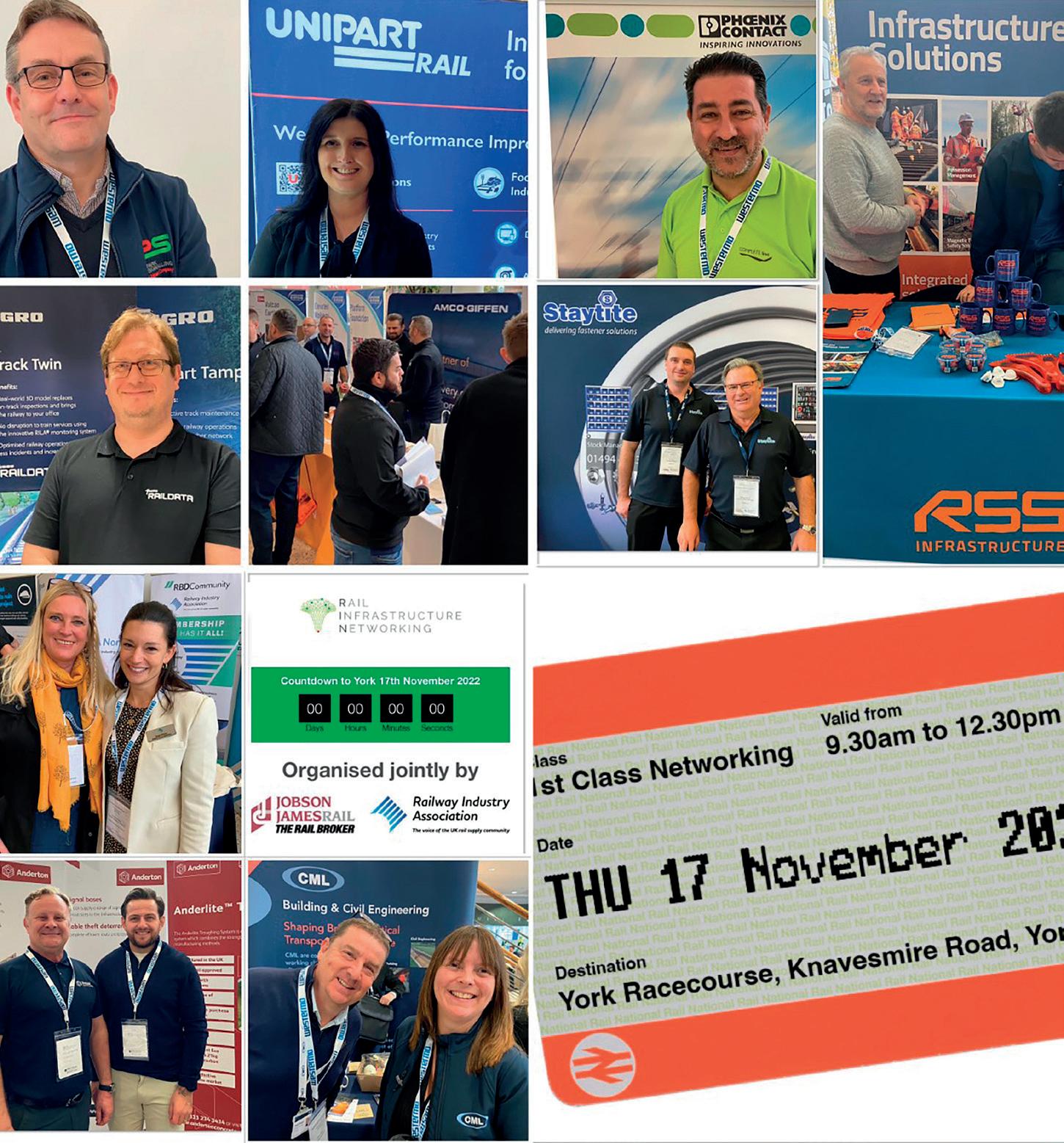
We are delighted to be working with the RIA team and look forward to developing the relationship further in 2023 with additional
to the RIN London event which takes place in
We are already excited about 2023 and will be making some important announcements in the New Year about some new opportunities for members to take advantage of. There will also be a series of online events taking place in collaboration with the RBD Advisory team and

Making Innovation Happen – series of three webinars - first to take place 18 January 2023.

Contract
Plant Hire CPC Project Services Enotrac Ground Control Infrastructure Project Services P M Training QTS Group Railsense Solutions Limited TDL Equipment Twinfix
The RBD Community exists to bring organisations and people together for mutual advantage and to support business growth. We can help you make valuable connections and raise your business profile in rail. We will also share opportunities whenever we come across items of interest, in addition to giving you access to an invaluable range of tools, resources, and discounts. And if that’s not enough, you have the added bonus of calling on the expertise of the entire RBD team! SCAN HERE to find out more LET US BE YOUR CHAMPION IN RAIL Impact Shine the RBD spotlight on your business using the UK’s most powerful media platform in rail Interact Access high quality networking and make new connections Insight Take advantage of unlimited access to market intelligence, news, reports, and business resources Introduce Find your perfect business partner and b2b matchmaking Inform Knowledge sharing, thought-leadership, and resources all in One Place We care about your business; it is at the heart of what we do. Join the RBD Community Today MEMBERSHIP COSTS £350 PER YEAR 60 | Rail Director | December 2022 railbusinessdaily.com
Eli Rees-King, head of the RBD Community, looks at the highlights of the recent weeks and how members are joining forces to be stronger together
The RBD Community exists to bring organisations and people together for mutual advantage and to support business growth. We can help you make valuable connections and raise your business profile in rail. We will also share opportunities whenever we come across items of interest, in addition to giving you access to an invaluable range of tools, resources, and discounts. And if that’s not enough, you have the added bonus of calling on the expertise of the entire RBD team!

Insight Take advantage of unlimited access to market intelligence, news, reports, and business resources Introduce Find your perfect business partner and b2b matchmaking
Inform Knowledge sharing, thought-leadership, and resources all in One Place

care about your business; it is at the heart of what we do.

SCAN HERE to find out more LET US BE YOUR CHAMPION IN RAIL
We
Impact Shine the RBD spotlight on your business using the UK’s most powerful media platform in rail Join the RBD
Interact Access high quality networking and make new connections Today MEMBERSHIP COSTS £350 PER YEAR
Community
Schaeffler acquires ceramics components manufacturer, CERASPIN











News in Brief Nestlé Waters France to use first hydrogen-powered freight train



The automotive and industrial supplier Schaeffler has signed a contract with the CERATIZIT Group for the 100 per cent acquisition of Luxembourg-based CERASPIN. With more than 25 years’ experience in the development of premium ceramic products, the majority of which are processed into rolling elements for various bearing applications, CERASPIN products are key components in wheels, bogies and axles on rolling stock across Europe. It is also used extensively in the wind energy, aerospace, medical equipment, electrical engineering, and vacuum pump industries.
Hitachi Rail wins £687m Philippines contractl
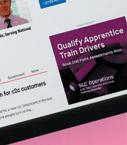



Hitachi Rail has been awarded a major contract by the Philippine Government’s Department of Transportation to deliver electrical & mechanical systems and track works, including digital signalling for the new commuter railway from Solis to Malolos in the Philippines. The contract, worth around £687 million, will cover around 35.4km and nine stations on the North-South Commuter Railway, a 147km commuter line from Calamba to Clark, and will be funded by the Japan International Cooperation Agency (JICA).
Nestlé Waters will be the first company in Europe to benefit from the hydrogen fuel cell solution for massified rail freight, including renewable hydrogen supply, developed by Alstom and ENGIE.

It is estimated that this project will reduce emissions by 10,000 tonnes of CO2 equivalent per year, in the long term – a reduction of 90 per cent of its current emissions. This is equivalent to the annual emissions of more than 30,000 round trips from Paris to Nice by car Sophie Dubois, chief executive officer of Nestlé Waters in France said: “At Nestlé Waters, we favour rail freight whenever possible. We are constantly looking for efficient solutions to reduce the carbon impact of our supply chain.
“We are very proud of this project as it represents a significant investment by our railway team to find innovative solutions to answer to climate and environmental challenges. This collaboration with Alstom and ENGIE will accelerate the development of a decarbonised/ carbon-free supply chain.”

As a significant innovation, the new hydrogen solution will be developed from a high-powered fuel cell system that can power electric locomotives in nonelectrified areas. This solution will






be able to transport goods over long distances, on a national and European scale.







From 2025, this freight train powered by electricity from the rail network and from hydrogen in non-electrified sectors will aim to progressively ensure the transport of VITTEL® natural mineral water between the factory located in the Vosges and its various distribution centres in France (Vittel/Arles 600km and Vittel/MontreuilBellay 760km).
The dual-mode solution will be composed of a generator wagon incorporating a highpower fuel cell system powered by renewable hydrogen and a lineelectric locomotive, all connected by an electrical power cable. The generating wagon will be able to supply the locomotive with electricity without the need for any catenary.
Nestlé Waters will be the first company to benefit from the hydrogen fuel cell solution for rail freight, including renewable hydrogen supply, developed by Alstom and ENGIE under a partnership announced in April 2022.

This innovative solution will make it possible to carry out all freight journeys with the same electric locomotive, powered by the catenary on electrified main lines and by the hydrogen generator wagon in non-electrified areas. In terms of performance, the solution will provide all the power of a catenary-based mainline electric locomotive and enough power with hydrogen energy to pull a freight train over non-electrified line segments. ENGIE will supply the renewable hydrogen for this solution through the deployment of an innovative supply chain.
NOTHING TO SNOOZE AT
































today for all the best news in UK rail from 7am daily
Subscribe
news.railbusinessdaily.com
62 | Rail Director | December 2022 railbusinessdaily.com International News
Image: Alstom Advanced & Creative Design
Alstom to supply 18 X’trapolis battery-electric trains for Irish Rail
Iarnród Éireann/Irish Rail (IE) has signed a further order with Alstom for 18 more five-car X’trapolis trains, valued at €162 million.
The deal adds to the original 19 five-car order made by IE, 13 of which were battery-electric and six were electric. The additional deal is inclusive of an extension to a 15-year Technical Support and Spares Supply (TSSA) agreement under the ten-year framework agreement announced in December last year.
Nick Crossfield, Alstom’s managing director UK and Ireland, said: “As the world’s leading innovator and supplier of green mobility solutions, Alstom is here for the long-term to support Ireland in delivering transformative change to its citizens through sustainable
rail travel. “This further order of X’trapolis trains signals Irish Rail’s intent to move quickly in greening the Greater Dublin commuter network, Ireland’s most populated commuter belt as a first step in that national transformation.”
Chief executive of Irish Rail Jim Meade said: “These further 90 BEMU carriages, coupled with last year’s order of 95 units, will help us in Irish Rail to achieve our ambition of being the backbone of Ireland’s sustainable transport network.”


News in Brief
First privately-owned highspeed rail operator launches in Spain
The first privately-owned highspeed rail operator in Spain has started running services, with the first iryo train departing from Madrid to Valencia last month.
Delivered by a consortium between the Spanish airline Air Nostrum, the train company Trenitalia, and Globalvia, iryo will deliver services in Madrid, Zaragoza, Barcelona, Valencia, Alicante, Cordoba, Malaga, and Seville. ALLRAIL, the Alliance of Passenger Rail New Entrants in Europe’s secretary general Nick Brooks, said: “It is great to see how commercially driven Open Access services – such as iryo – are making long-distance rail more attractive and winning travellers away from less sustainable transport modes, namely airlines and cars.”
railbusinessdaily.com Rail Director | December 2022 | 63 International News
Image: Paul Sharp
Jim Meade, chief executive, Iarnród Éireann; Ann Graham, chief executive of the National Transport Authority; Nick Crossfield, managing director, Alstom UK & Ireland
Modernisation programme delivers new job opportunities at Direct Rail Services (DRS)


Direct Rail Services (DRS) is part of Nuclear Transport Solutions (NTS), the leading global provider of safe, secure and reliable nuclear transport – helping to make the world safer and more sustainable. With decades of experience and expertise, we deliver innovative rail solutions for our nuclear and non-nuclear customers.
DRS is undergoing the biggest modernisation programme in our history; it’s an exciting time to join the team. We’re making a significant investment in our business to ensure what we do is more efficient. That means we’ll be improving our processes, using the latest technology to enhance our work, creating clear career pathways, and investing in the development and performance of our people.

We’re committed to the culture of our business and ensuring we create great places to work, where people feel able to share their ideas, and are supported, trusted, valued and respected.
Our three business principles of Freedom,
Helpfulness and Drive are part of everything we do. Our drive to create a more inclusive work culture means we require a diverse range of specialist skills and expertise, so treating everyone equally, with respect and creating an environment where differences are encouraged, isn’t just the right thing to do, it’s essential for our mission. Our employees have access to various employee-led networks that
help deliver change in all areas of diversity and inclusion, such as gender, LGBTQ+, disability and race.
We pride ourselves on being a modern and inclusive employer where people are proud to work and feel respected and able to perform at their best. So, get your career on the right track and apply for one of our amazing opportunities today!
Get your career Follow the QR code to view our current vacancies on the right track 64 | Rail Director | December 2022 railbusinessdaily.com Feature Industry Spotlight Advertorial
ITAL works with businesses looking for productivity improvements, in both the management of people and systems. We bring technology improvements to generate efficiencies that positively impact the bottom line, employees and customers. ryan.leather@ital-uk.com www.ital-uk.com 08445 447 327

Jobson James Rail is a national specialist railway insurance broker, the market leader in the UK by a huge margin with over 325 rail clients across the UK, Middle East and Australasia. keven.parker@jjrail.co.uk jjrail.co.uk 07816 283949

Kelly Rail is a principal contractor to all major UK industry service providers, specialising in multi-disciplinary solutions including telecommunications, SISS, signalling, M&E, lineside civils and electrification HV & LV. info@kellyrail.co.uk www.kelly.co.uk 0208 424 0909
Mike
We specialise in the design and manufacture of rail signalling equipment and associated accessories. Our innovative technical expertise has helped make us the go to supplier for solving industry challenges. railsales@mallatite.co.uk www.mallatite.co.uk +44(0)191 933 1740
Railsy offers an unmatched variety of courses and programs across the rail industry, created for individuals or groups of all academic levels. info@railsy.co.uk

Created by Rail Business People for Rail Business People, the RBD Community offers an unrivalled rail business resource designed to help your business grow. sarah@railbusinessdaily.com community.railbusinessdaily.com



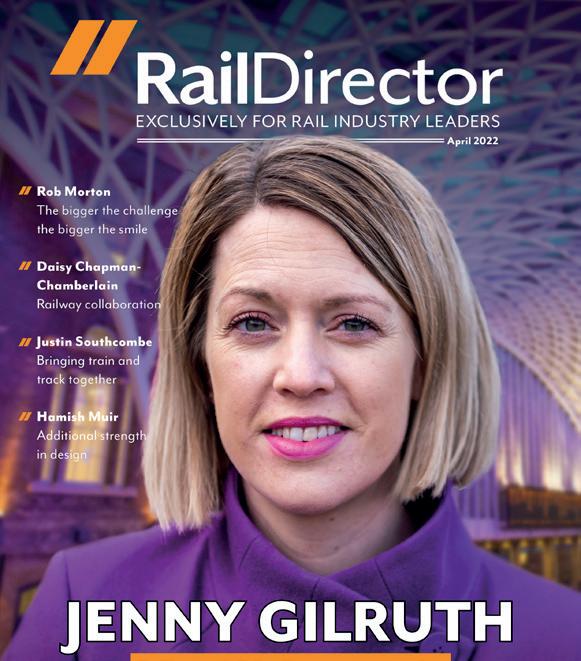


RISQS audited chartered land and engineering surveyors with 40 years’ experience measuring and mapping the railway infrastructure. survey@mw-sc.co.uk www.mw-sc.co.uk 07767 456196

Repay Solutions is an innovative software and technology provider delivering the first fully digital platform to automatically process both station and online purchased ticket refunds for train operators. info@repay.solutions www.repay.solutions



SURVEY CONSULTANCY LTD Chartered Land and Engineering Surveyors
Reach 17,000+ senior rail industry professionals List your business here for just £200 Contact Christian Wiles Chris@
Directory BE FEATURED IN FUTURE ISSUES Email: Chris@RBDPublications.com A platform for success EXCLUSIVELY FOR RAIL INDUSTRY LEADERS OliviaCayley Saving lives on the railway Professor Paul Allen A decade of Huddersfield rail research institute September 2022 Let us put you in front of the rail industry’s work-winning influencers and decision-makers in our Rail Director magazine
RBDP ublications.com
so important to take a proactive role in keeping people safe and preventing harm as
How does it feel to be joining the train operator from your role as vulnerability researcher at British Transport Police?

I feel proud and excited to be joining the railway industry. It’s such a crucial sector across the whole of the UK, with millions of passenger journeys taking place each day. I really enjoy meeting new people, so being able to collaborate with so many different partners who all do such important work and have a common goal of making the railway safe for all is brilliant.
What attracted you to the role?
The main attraction of the role was being able to drill down on a specific area and really focus on the various issues that we see across the rail industry. The prospect of being able to get out and about, meet our amazing staff members, and hold a job role that I know with the collaboration of my GA colleagues, will make a positive contribution to society, really excited me.
Explain a bit more about what the role entails?
It is extremely varied, which is great. It involves working to reduce incidents of trespass across the Greater Anglia network, implementing a robust suicide prevention strategy which will focus on putting various measures in place, such as physical mitigations, as well as staff training and awareness. The safeguarding of vulnerable people that travel across the network is a crucial part of the role, ensuring that these people are protected from harm or exploitation with our staff doing all they can to support them. We cannot do it alone, however, we have great collaborative work with external partners including the British Transport Police (BTP), Network Rail, and local authorities across the route, as well as charitable partners including Samaritans and The Children’s Society.
“It’s
best as we can”
66 | Rail Director | December 2022 railbusinessdaily.com Movers and Shakers
Greater Anglia has appointed Georgia Payne as its safeguarding and trespass prevention manager. The newly created role will focus on prioritising safeguarding of vulnerable individuals who travel on the network and work towards accreditation for the Safeguarding on Rail Scheme
What do you hope to bring to the role, particularly from your experience at BTP?
I hope to bring an understanding of the bigger picture across the rail network as a whole. My time working at the BTP gave me an oversight of the different strands of vulnerability and incidents that were happening across the whole of the UK, whilst developing contacts and relationships with industry members.
Understanding the risks of the railway and the issues that often present has given me a head start in ensuring I can implement effective and suitable measures at Greater Anglia.
How important is it that the train operator has created this role?
Very important. It’s great to see that Greater Anglia is committed to safeguarding vulnerable individuals and ensuring the railway is a safe environment for everybody.
It also shows our customers that we are working hard to create a safe environment, which will provide a level of reassurance to them.
Especially in recent months, with an increase in the number of individuals suffering with their mental health post-lockdown and with the

cost-of-living crisis, it’s so important to take a proactive role in keeping people safe and preventing harm as best as we can.
in vulnerable people travelling on the railway across the UK.
The scheme demonstrates that safeguarding is everybody’s responsibility and heightens awareness around safeguarding, with lots of scope to drive collaborative working between industry partners, which is great. Increasing awareness of the dangers of trespass is important, as I think people often fail to understand the hidden dangers of the railway when they are making that conscious decision to stray onto the network, risking their own lives as well as the lives of others.
What can be done to keep people away from the tracks?
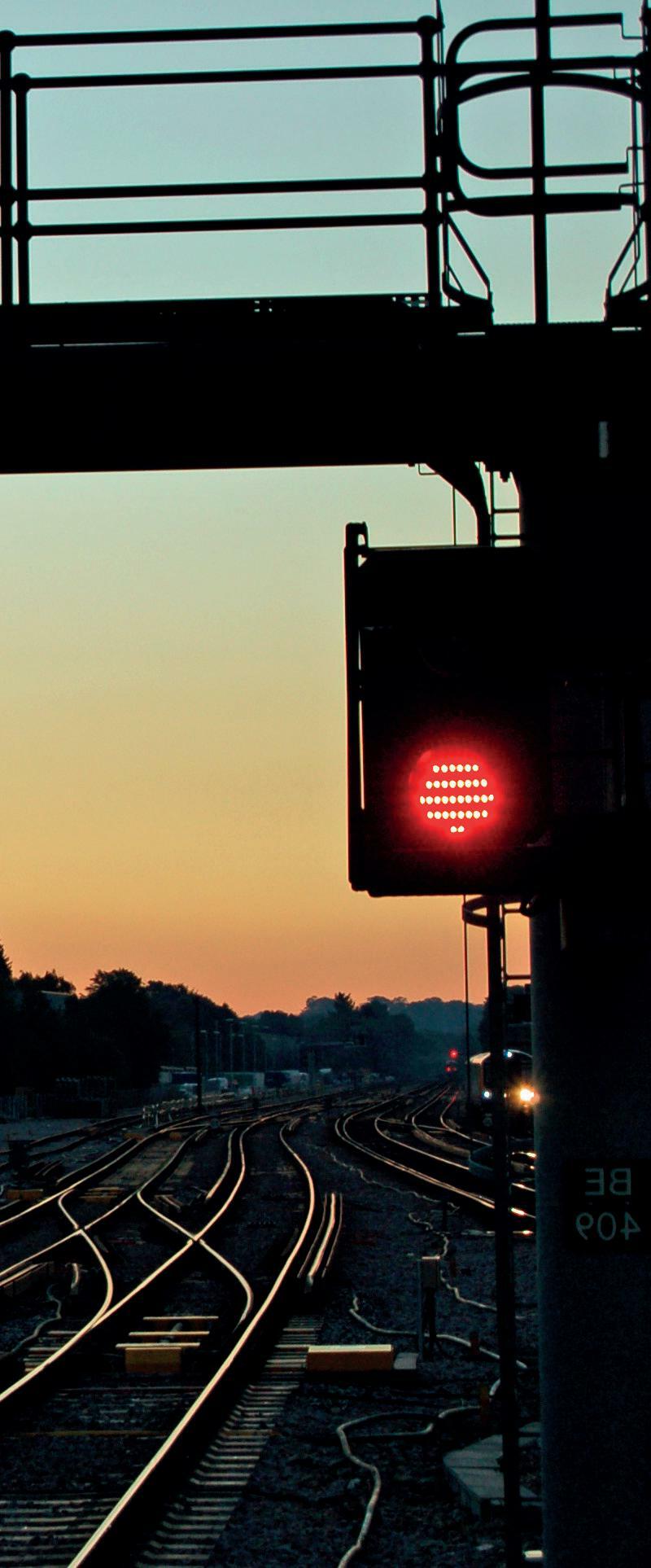
Aims and aspirations as safeguarding and trespass prevention manager?
The main aim is to make the railway as safe an environment for everybody to travel on as possible, regardless of their situation or circumstances.
My biggest aspiration is to gain accreditation for the Safeguarding on Rail Scheme, which is a scheme developed by the Department for Transport and BTP in response to the increase
It is so important for people to be aware of the hidden dangers on the railway; it’s all about education and highlighting the risks, especially to children and young adults. Across the network, you’ll see anti-trespass signage as well as mitigations such as fencing/gates and witches’ hats (rubber points).
These provide a deterrent, prompting people to stop and think, and making access more difficult. The railway is not a playground, and anyone who trespasses on the railway is risking their life and the lives of others.
Delivering railway signalling courses and training programmes to members of the Rail Signalling Industry Specialising in Technical Training and Development Want to know more? Contact us today 01332 343585 | enquiries@signet-solutions.com signetsolutions.com The safeguarding of vulnerable people that travel across the network is a crucial part of the role railbusinessdaily.com Rail Director | December 2022 | 67 Movers and Shakers
Changes at the top at Kier
Liam Cummins is leaving his role as group managing director at Kier Group plc at the end of the year to take up a chief executive role outside the group.
Stuart Togwell, the group’s commercial director, will take up the role of group managing director, construction from 1 January 2023. He arrived at Kier in 2019 and during the last three years has played a fundamental role in the group’s strategic transformation including implementing a new project gateway.
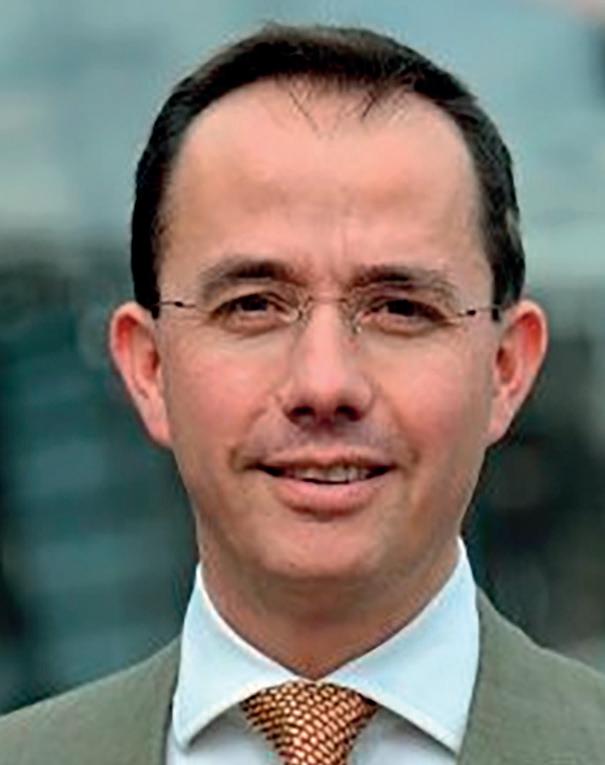
He has more than 35 years’ experience in the built environment and, prior to joining Kier, held a number of positions at Wates. He is also a chartered surveyor, attended IMD and INSEAD, and is a qualified leadership coach and a board member of the EKFB Joint Venture.
Andrew Davies, Kier Group chief executive officer, said: “I would like to thank Liam for his hard work over the past three years. Liam has been an integral part of our leadership team and I wish him every success in the future.
“I am delighted that Stuart Togwell, currently group commercial director and a valued member of the executive committee, assumes the position of group managing director, construction.
“Stuart’s wealth of experience in the construction sector, as well as his focus on operational and commercial excellence and his people-first approach, mean he is well-placed to lead our construction business and help to deliver our medium-term plan.”
London TravelWatch announces Michael Roberts as new CEO
London TravelWatch has welcomed Michael Roberts as its new chief executive officer (CEO).
Michael will join London’s independent transport watchdog in January 2023, leading a team representing the views of millions of people who travel on London’s transport network.
Arthur Leathley, chair of London TravelWatch, said: “I am very pleased that Michael will join London TravelWatch. Michael has wide experience of transport from his previous senior roles and is also very familiar with the key issues that affect millions of people travelling in London. At a time of great change, Michael’s knowledge and skill will be invaluable.”
The appointment comes as transport users across London face increasing challenges, with London TravelWatch demanding
improvements on key issues such as personal security, retaining quality bus services, communication across all services, and making sure transport is accessible for everyone.
Michael has 30 years’ experience in advocacy and influencing public policy, much of it relating to transport. He has been director general at the Rail Delivery Group (RDG), chief executive at the Association of Train

Operating Companies (ATOC) and represented the interests of business transport users as a director at the CBI. His most recent role was as chief executive of Water UK and he is a former board member of The Carbon Trust.
Michael said: “Transport is integral to the life of every Londoner, yet the challenges involved in delivering an affordable, efficient and green transport system, accessible to all, have rarely been greater.
“The views of the travelling public matter more than ever and, together with the London TravelWatch team, I look forward to ensuring their voice is heard by decision-makers at this critical time.”
Joanna Davidson will continue as interim CEO of London TravelWatch until Michael starts in the new year, ensuring a smooth transition.
Iain Stewart appointed as chair of the Transport Select Committee
IainStewart has been appointed as the new chair of the Transport Select Committee.
The MP for Milton Keynes South takes over the position, which was left vacant when Huw Merriman, the new Rail Minister, was appointed to his new post.
He said: “I am delighted to have been entrusted by the House to chair this vital committee and thank all who supported me.
“I have a real passion for, and experience in, transport issues and I am very much looking forward to working with colleagues on the committee to complete the existing programme of work and establish fresh inquiries.
“I want the committee both to
scrutinise and hold to account government, agencies and operators, but also to do important horizon-scanning proactive work into future opportunities and challenges.
In response to his appointment, Andy Bagnall, chief executive of Rail Partners, said: “We welcome the news of Iain Stewart’s appointment as the new chair of the Transport Select Committee. He brings a wealth of experience as a former member of the committee and also as Department for Transport’s parliamentary private secretary, and we wish him well in his tenure.
“The committee plays a vital scrutiny role as the railway responds to the challenges it faces. Rail Partners and its members look forward to working with the committee to ensure the opportunity of reform is maximised in the interest of passengers, freight customers and taxpayers.”
Image: Transport Select Committee
68 | Rail Director | December 2022 railbusinessdaily.com Movers and Shakers
Image: London TravelWatch
Matthew Lee joins Vivarail as business development director
Vivarail has appointed a new business development director to drive business growth and firmly establish its position at the forefront of decarbonising the rail industry.
With 14 years’ experience in the rail sector, Matthew Lee joins Vivarail from FirstGroup, where he held the position of commercial and customer experience director. Whilst with FirstGroup, he was responsible for successfully mobilising and operating the open access operator, Lumo.

Steve McBride, managing director of Vivarail, said: “With the increasing need to reduce carbon emissions as part of the global climate challenge, zero-emission solutions for rail have never been so pertinent.
“In joining Vivarail, Matthew
will now play a fundamental role in demonstrating the innovation behind our battery technology solutions as an alternative and cost-effective means to electrification, while engaging industry stakeholders across the
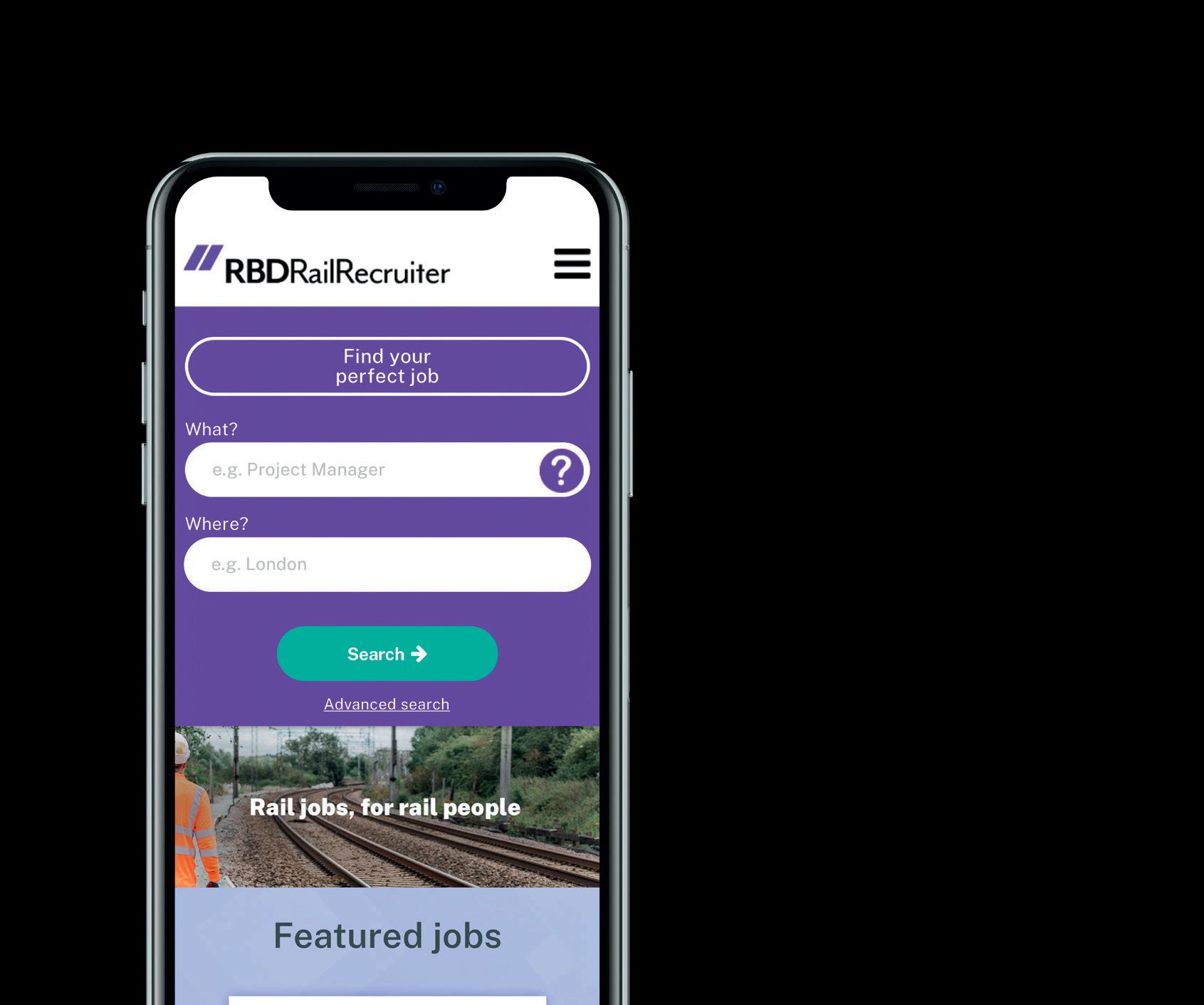
UK and overseas. I am delighted to welcome Matthew to the business at such an important time in our journey and am in no doubt he will become a real asset to the team.”
A graduate of the Institution of Railway Operators Degree programme, Matthew has also held positions with Great Western and MTR Crossrail, and in building a reputation throughout the industry, regularly mentors aspiring rail professionals. Matthew will be responsible for leading the brand’s business development strategy –focused on positioning battery as a cost-effective and time-efficient solution for cutting carbon and supercharging green recovery across the UK’s rail industry as it strives to meet decarbonisation targets.
New finance director for Greater Anglia
Anew finance director has been appointed at Greater Anglia, overseeing the company’s finance, IT and procurement functions.
Michael Robertson joins Greater Anglia from Abellio Group where he was group financial controller. Jamie Burles, Greater Anglia’s managing director, said: “I’d like to welcome Michael to the team and look forward to the benefit of his expertise, which will help guide the business in improving efficiency and performance going forward.”
Michael brings a wealth of experience to the role, having joined ScotRail as head of finance in 2017 after spending several years working for Grant Thornton UK in both London and Scotland.
Find your dream rail job 1,300+ rail jobs to search com Fast track your recruitment, call the team RBDRailRecruiter Scan and start your job search
railbusinessdaily.com Rail Director | December 2022 | 69 Movers and Shakers
Image: Vivarail
New agreements on sharing safety information among heritage railways
Steve Oates, chief executive of the Heritage Railway Association (HRA), says the industry is showing a real focus and passion in pulling together to get through the huge externally driven challenges heritage rail faces.
His comments follow the annual HRA conference, a two-day event in Birmingham attended by more than 200 representatives of heritage railways throughout the UK, and featuring 23 speakers and contributors covering everything from the latest innovations in structural engineering to marketing strategy, and from volunteer recruitment to the economic and cost challenges ahead in 2023.
Steve said: “If I was to highlight one takeaway point from the conference, it would undoubtedly be the focus and passion on ensuring everyone pulls together to get through the huge externally driven challenges heritage rail faces.
“From coal to staffing and of course the huge cost of living impact on our customers, it’s a difficult period to be a heritage railway and it’s certainly not a time for divisiveness. But lots of speakers were very clear that they are grasping the challenges and adapting quickly to ensure their railway survives and thrives.”
Largest heritage presence
Among the speakers in November included the largest-ever presence by the heritage rail industry’s regulator, the Office of Rail and Road. Deputy chief inspector of railways, Richard Hines; head of non-mainline railways Patrick Talbot; and principal inspector of railways Simon Barber.
The conference also featured a panel discussion with five leading heritage sector chairmen and chief executives. Paul Lewin from the Ffestiniog and Welsh Highland Railways, Nick Ralls from Ironbridge Gorge Museum Trust, Simon Marsh from the Kent and East Sussex Railway, Chris Price from the North Yorkshire Moors Railway, and recently appointed Watercress Line chief executive officer Amanda Squires. They took on a series of challenging questions about how the sector faced the economic climate head-on.
Keynote speaker for the event, Network Rail chairman Sir Peter Hendy, provided a frank assessment of how the national network is currently performing, and how it can work with heritage railways. Sir Peter also focused on forthcoming plans to celebrate the 200th anniversary of the Stockton and Darlington Railway.
Steve said: “These conferences have rapidly become the most important way that the heritage rail sector shares best practice. They’re also the best opportunity anywhere to hear from the top thinkers and most influential figures in our sphere.
“I was really heartened by how engaged the Office of Road and Rail were with this conference, and also how openly so many railways spoke about the methods they’re using to tackle the huge challenges being faced in the sector right now.”
Winter workshops
The HRA runs a series of events every year covering the major issues in the sector. Previous events have seen the focus on coal, equality, the environment and business diversification.
He told attendees that Network Rail is at the heart of plans to ensure that the anniversary celebrations can reach every corner of the UK and inspire new audiences for both the national network and heritage railways.
The next HRA events will be a series of workshops across the winter months in conjunction with the ORR and the RAIB, followed by the Spring Conference, which is due to take place on March 10 and 11 2023 in Birmingham. The next Autumn Conference will take place elsewhere in the UK, with a venue currently being confirmed.
 Network Rail Chairman, Sir Peter Hendy, speaking at the Heritage Railway Association conference.
Network Rail Chairman, Sir Peter Hendy, speaking at the Heritage Railway Association conference.
The biggest and best-attended Heritage Railway Association conference has led to new agreements on sharing safety information and the discussion of ways to meet the enormous financial challenges the sector faces
70 | Rail Director | December 2022 railbusinessdaily.com HRA
If I was to highlight one takeaway point from the conference, it would undoubtedly be the focus and passion on ensuring everyone pulls together




















































































































































































































































































































ALL ABOUT PEOPLE people working in public transport... ...people like you! 1923 TO 2023: ONE HUNDRED YEARS OF SUPPORT FOR PUBLIC TRANSPORT WORKERS DURING TIMES OF NEED. TBF offers financial and medical benefits, a wide range of complementary and alternative therapies, bereavement grants and welfare advice. Supporting members during times of need, hardship and distress for less than 20p per day. £1.25 a week covers you, your live-in partner and dependent children. Join online today www.tbf.org.uk Transport Benevolent Fund CIO, known as TBF, is a registered charity in England and Wales, 1160901, and Scotland, SC047016.
Coming back with bronze from Bilbao
It was third time lucky for Bob Hodgson competing in the European Multisport Championships earlier this year in Bilbao in Spain. COVID and personal circumstances prevented him from taking up the place he had earned in two previous years, but he made up for lost time, finishing third in his category (70-74 age group) in the sprint duathlon when he finally could compete.
Competing for the first time for the Great Britain Age Group Team, Rail Forum’s rolling stock engagement manager completed the 5km run and 20km bike leg, followed by a 2.5km run, in just under 1 hour 27 minutes.
“This is the third year I’ve qualified for the European Multisport Championships, but the first year I’ve actually been able to compete,” said Bob, who qualified through one of the British Triathlon events.
Trying not to come last Bob continued: “There are three qualifying events each year and you have to finish within 120 per cent of the winner’s time in your individual age group. I came first in my qualification so that was ok.
“When I decided to go to Bilbao my goal was to just finish because I’ve never been to one of these championships before. Trying not to come last was my second goal and trying to beat as many of the other GB competitors as possible was goal number three.
“There were 11 other competitors in my individual race, with two of the GB team members coming first and second, so with my third place it meant we had all the places on the podium, which felt quite special.”
Bob was competing against people from all over Europe, including Portugal and Spain, with the sprint duathlon one of several events taking place in Bilbao during the week, with several thousand athletes competing overall. He finished around two minutes behind the winner of his age category.
“It’s a big event, with the GB team consisting of around 600 competitors, all of who are selffunded,” said Bob. “It was fabulous being able to take part and everybody was so friendly.
“Bilbao is a lovely place, with the run legs taking place down the side of the Nervión river and past the world-famous Guggenheim Museum.
The bike course included a climb of over 400 metres which was quite a lot, although of course coming down was much easier.”
His success in the duathlon shouldn’t come as a surprise. A keen sportsman, Bob played rugby to a high standard in his youth and took part in the first London Marathon. He got back into sport several years ago, inspired by his son’s exploits of competing in triathlons all over the world.
“I did a lot of sports whilst at school and I ran in
“I’ve really been enjoying the competing and it shows you can do it at any age, you don’t have to be a youngster to compete. One of the really good aspects is the age categories which means you’re competing on par with people of a similar age. It’s not too late to start and you can still enjoy taking part.”
Enjoying the experience
Next up for Bob, who has been supporting the Rail Forum team on specific projects including its rail sector deal work and collaborative opportunities for more than five-and-a-half years, is the World Multisport Championships in Ibiza at the end of April next year, when he will again be representing the GB team.

the first ever London Marathon in 1981 and again in 1982,” he said. “I retired from playing rugby when I got to 50 and then did very little sports until I retired from full-time employment at the age of 66.
“My son is pretty good at the triathlon, and I was following him around supporting him and I liked the environment he was competing in – we’ve been out to the Gold Coast in Australia, USA, Mexico and numerous locations across Europe with him - so I decided to have a go myself.
“Finishing third in the European Multisport Championships doesn’t automatically qualify you for the World Championships, so I had to again qualify in one of the qualifying events where you have to finish within 115 per cent of the winner’s time,” said Bob, who has many years of experience working in the rail supply chain, previously serving as a sales director at TRB Lightweight Structures.
“I’m really looking forward to competing in Ibiza and it will be a holiday as well as going there for the race. I plan to arrive a few days before the event and will stay for the week after. The goal for the World Multisport Championships is to enjoy the experience, do my best and we’ll see what happens.”
Rail Forum’s Bob Hodgson has won a bronze medal at the European Multisport Championships. Next year he will compete in the World Championships in Ibiza
72 | Rail Director | December 2022 railbusinessdaily.com And Finally...
I’ve really been enjoying the competing and it shows you can do it at any age

UK’s leading Rail
We know this industry media and
inside out and upside down We know this industry inside out and upside down We know this industry inside out and upside down platform www.railbusinessdaily.com
We know this industry inside out and upside down
The
Industry
profile-raising
media and
platform www.railbusinessdaily.com
The UK’s leading Rail Industry
profile-raising













































































 Danny Longhorn Editor
Danny Longhorn Editor



























 Image: Hull Trains
Image: Hull Trains











































































































































































 John Hall, managing director of DWS
John Hall, managing director of DWS





























































































 Network Rail Chairman, Sir Peter Hendy, speaking at the Heritage Railway Association conference.
Network Rail Chairman, Sir Peter Hendy, speaking at the Heritage Railway Association conference.




























